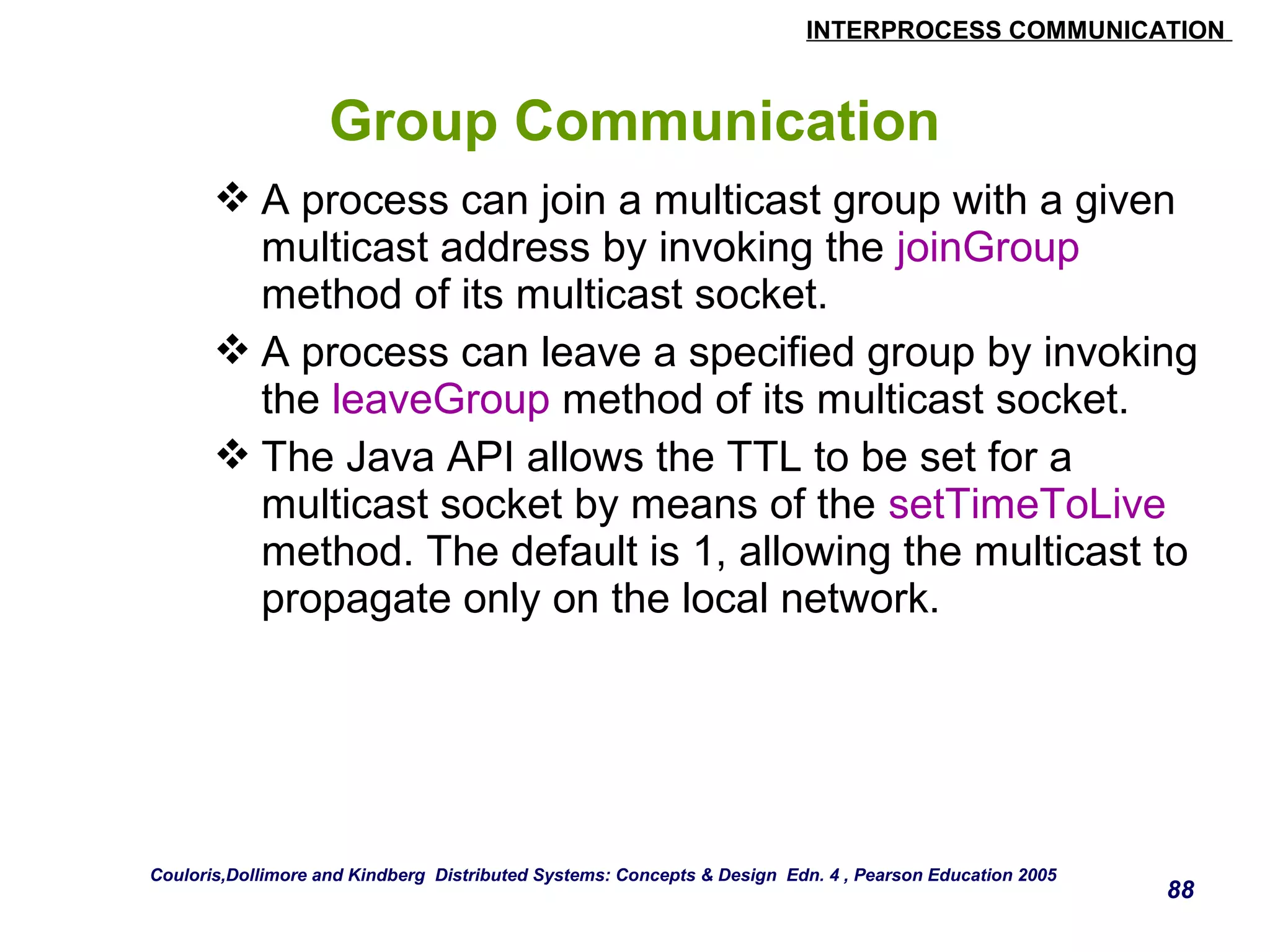The document discusses interprocess communication and summarizes the key points about client-server and group communication patterns. It describes the Java API for internet protocols, which provides datagram and stream communication using UDP and TCP. Specifically, it outlines how UDP supports message passing through datagrams, while TCP provides reliable, ordered streams between processes.
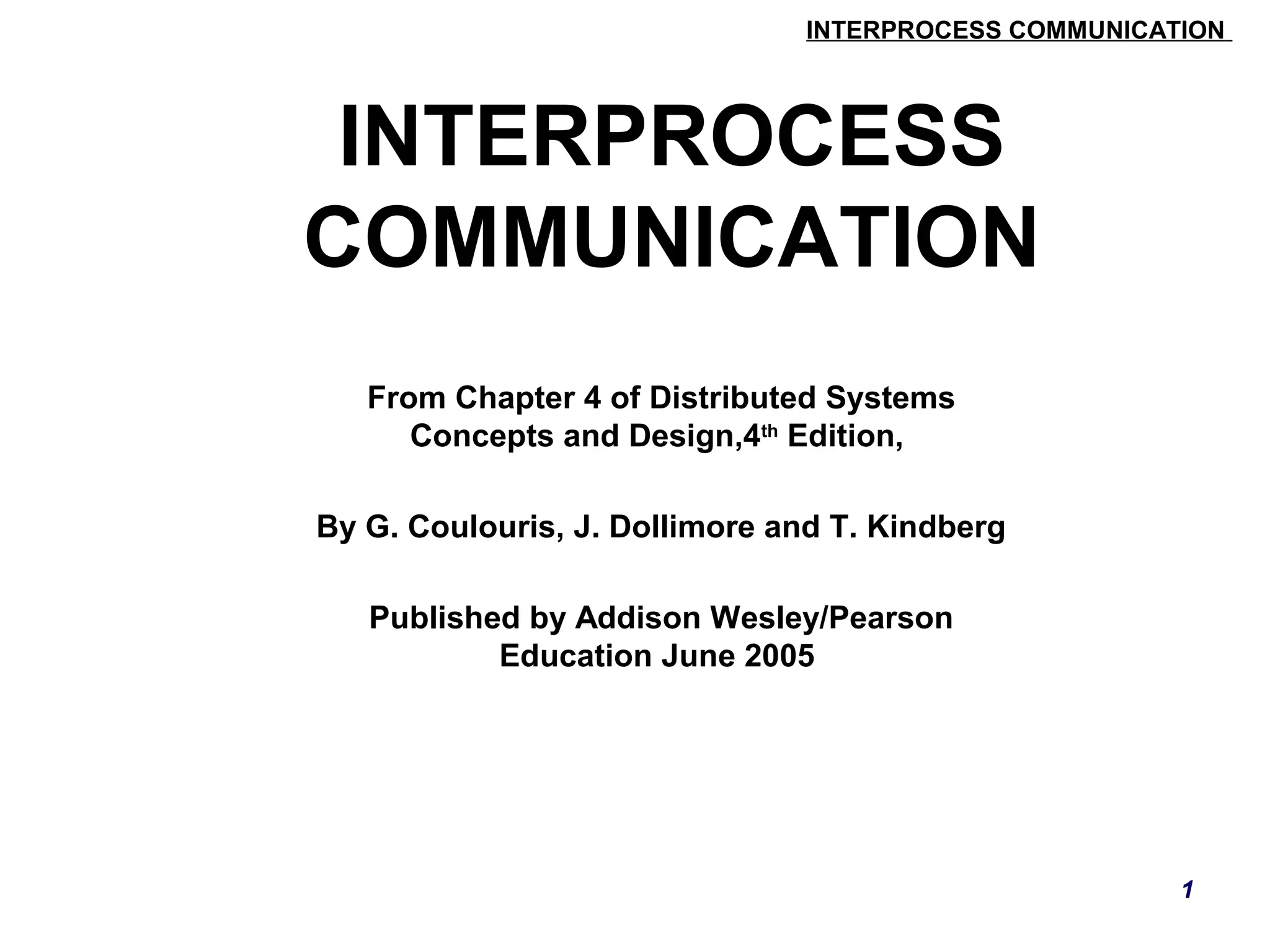
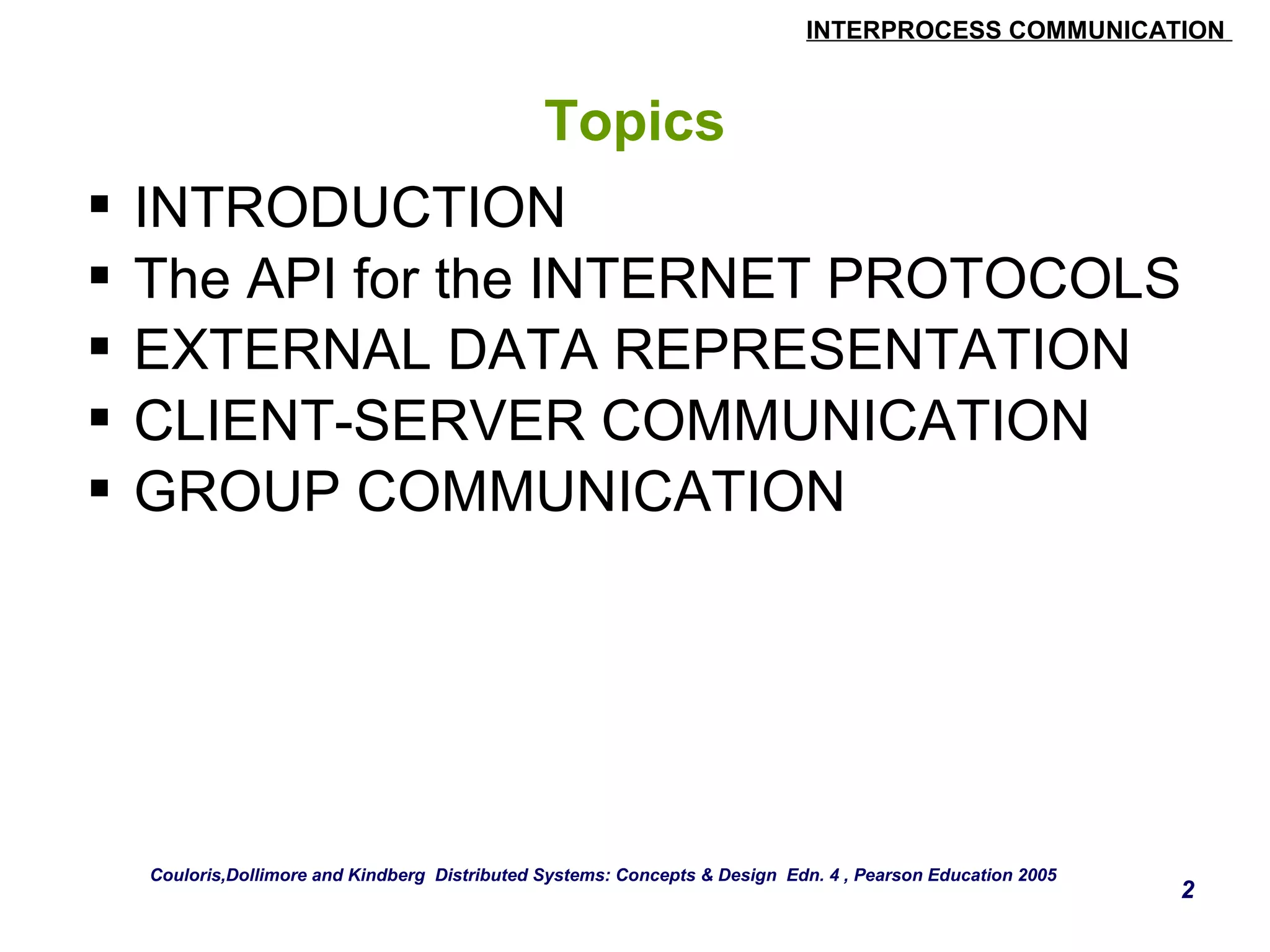
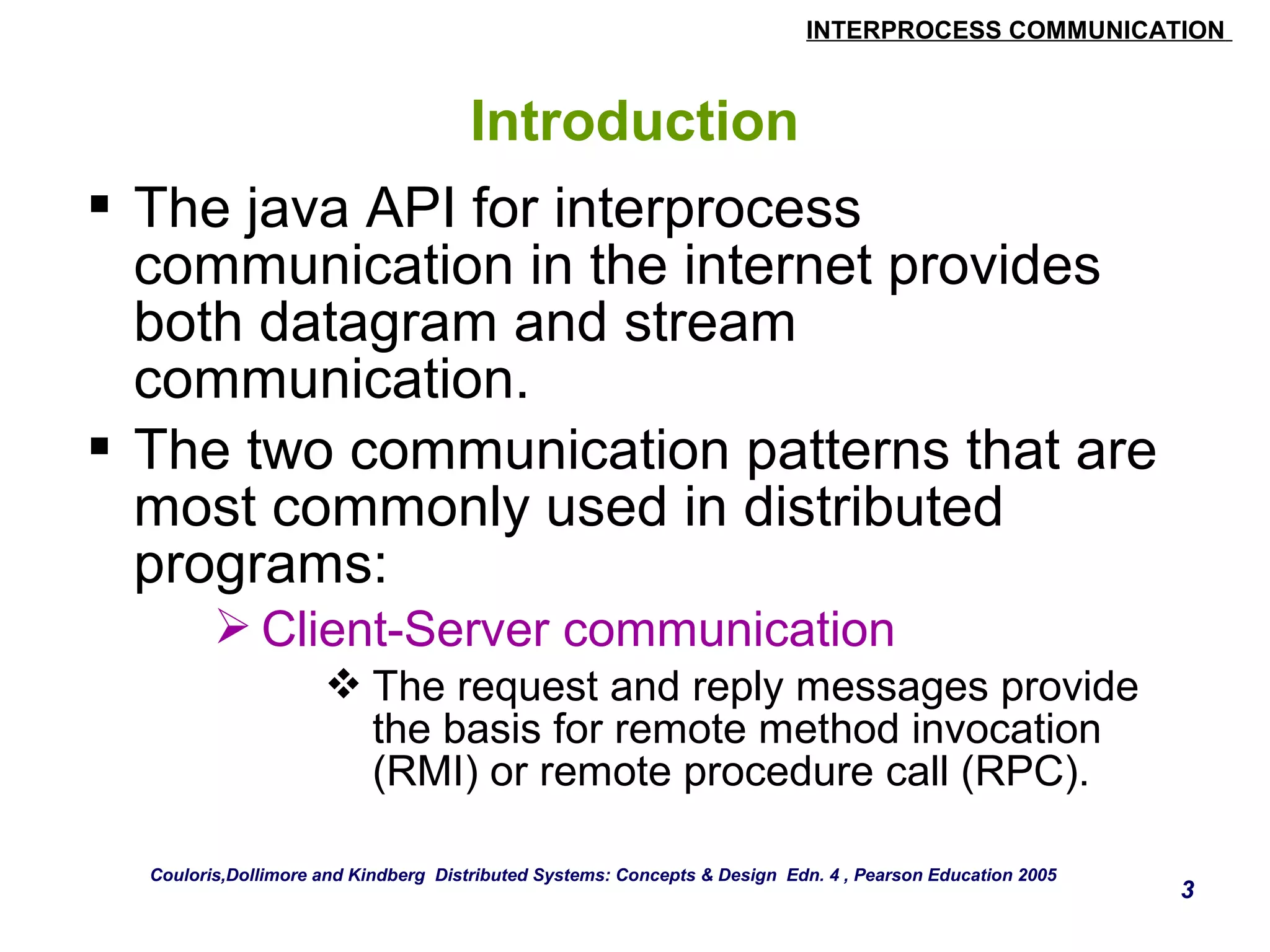
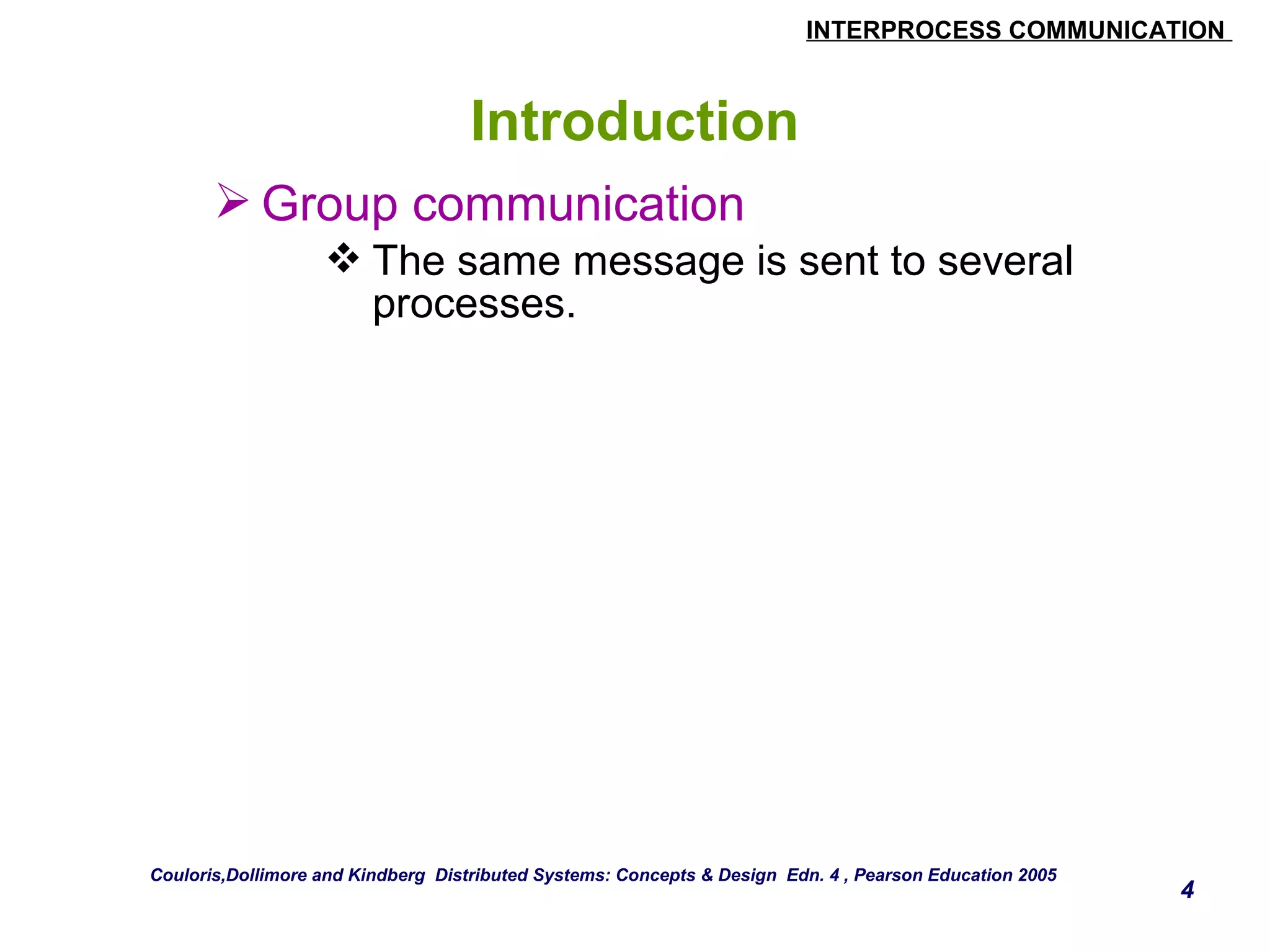
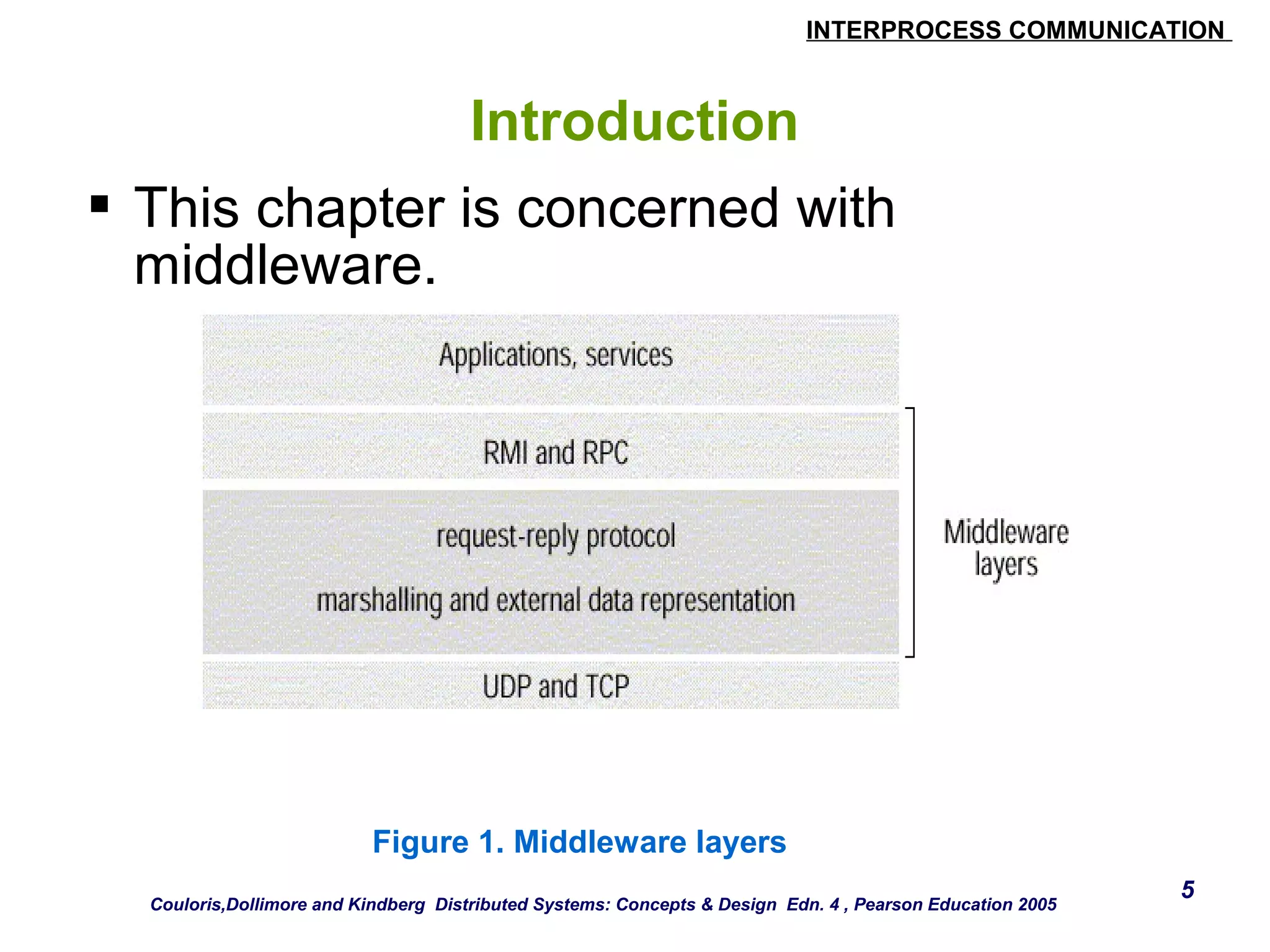
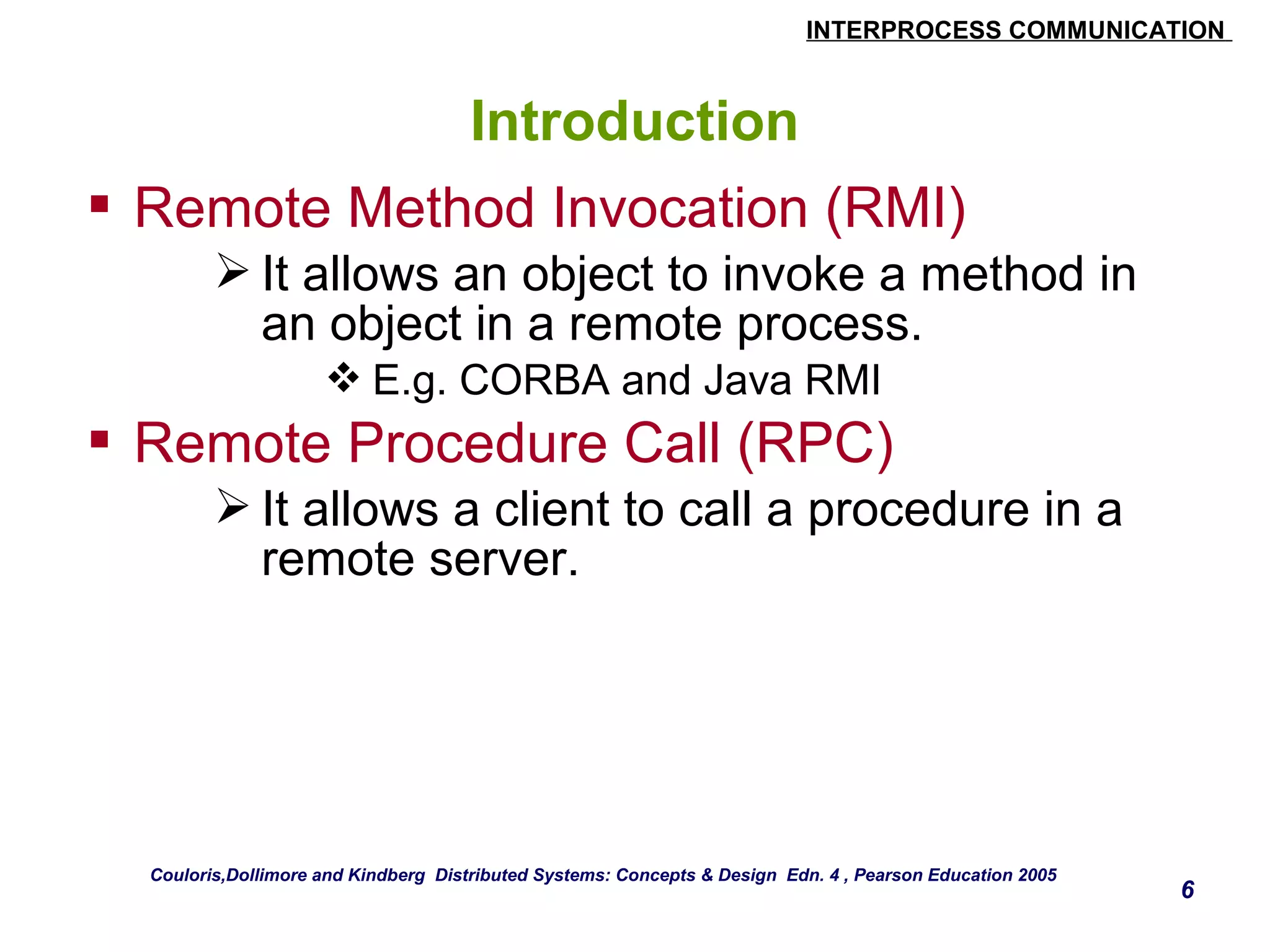
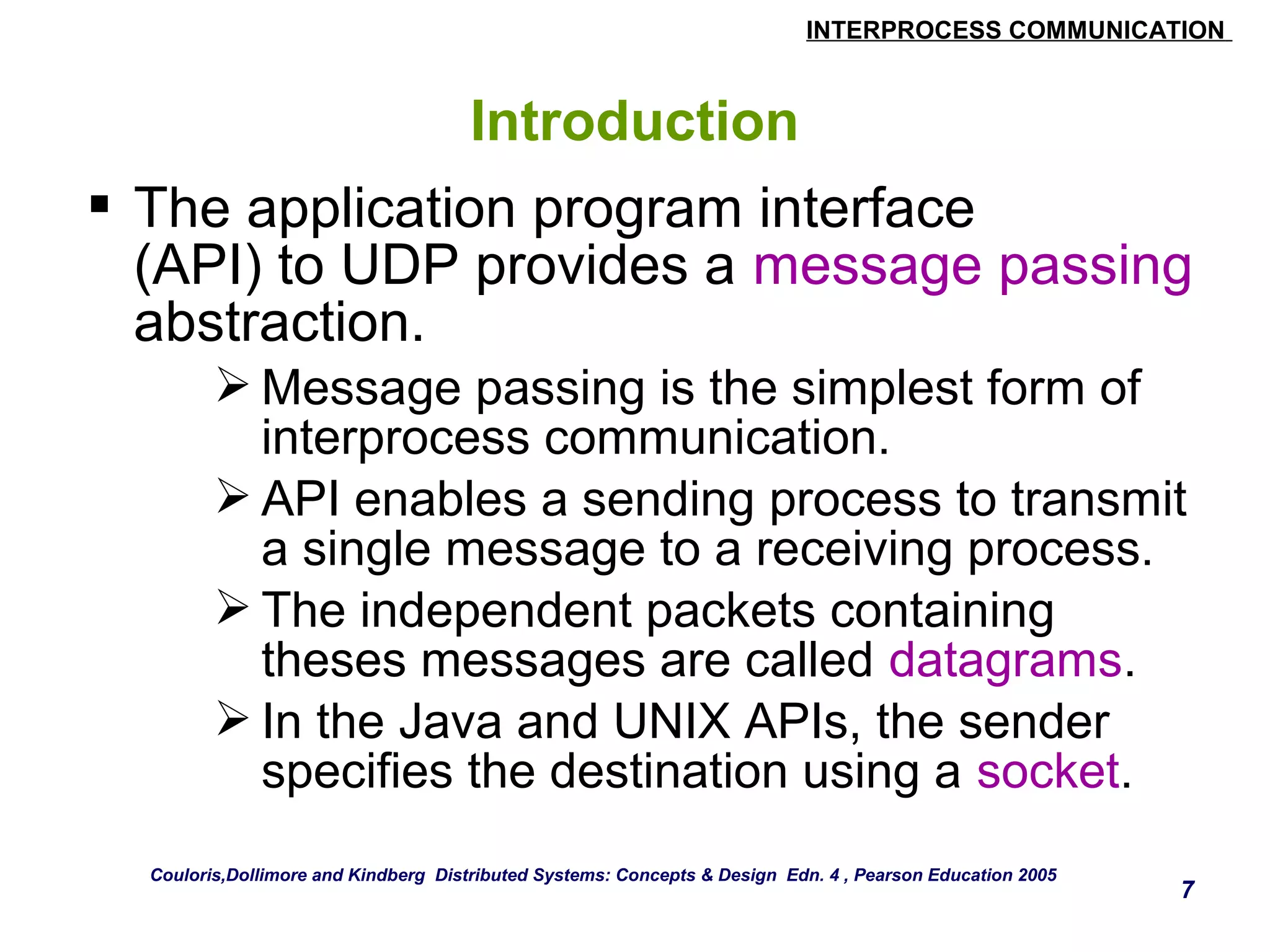
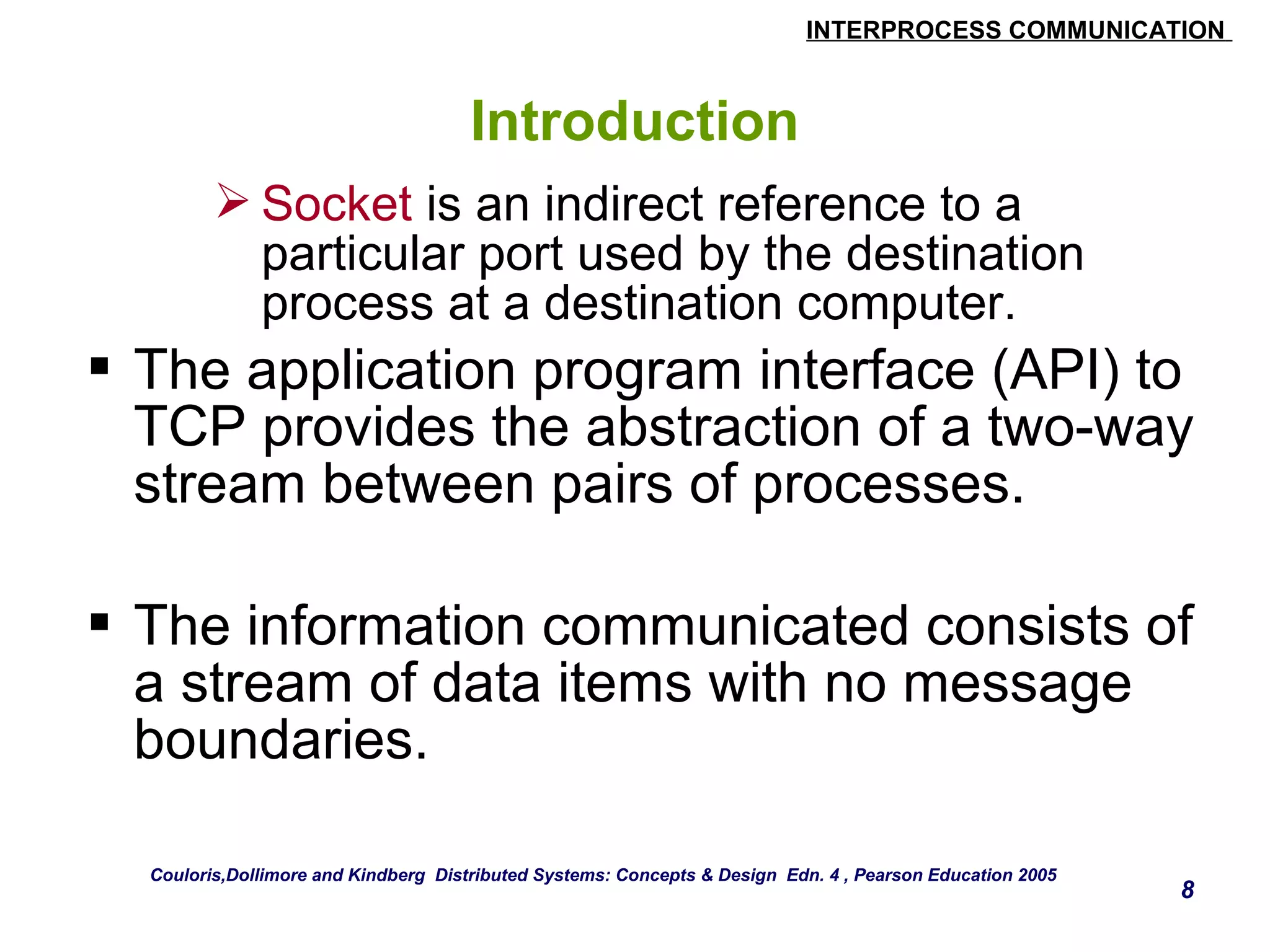
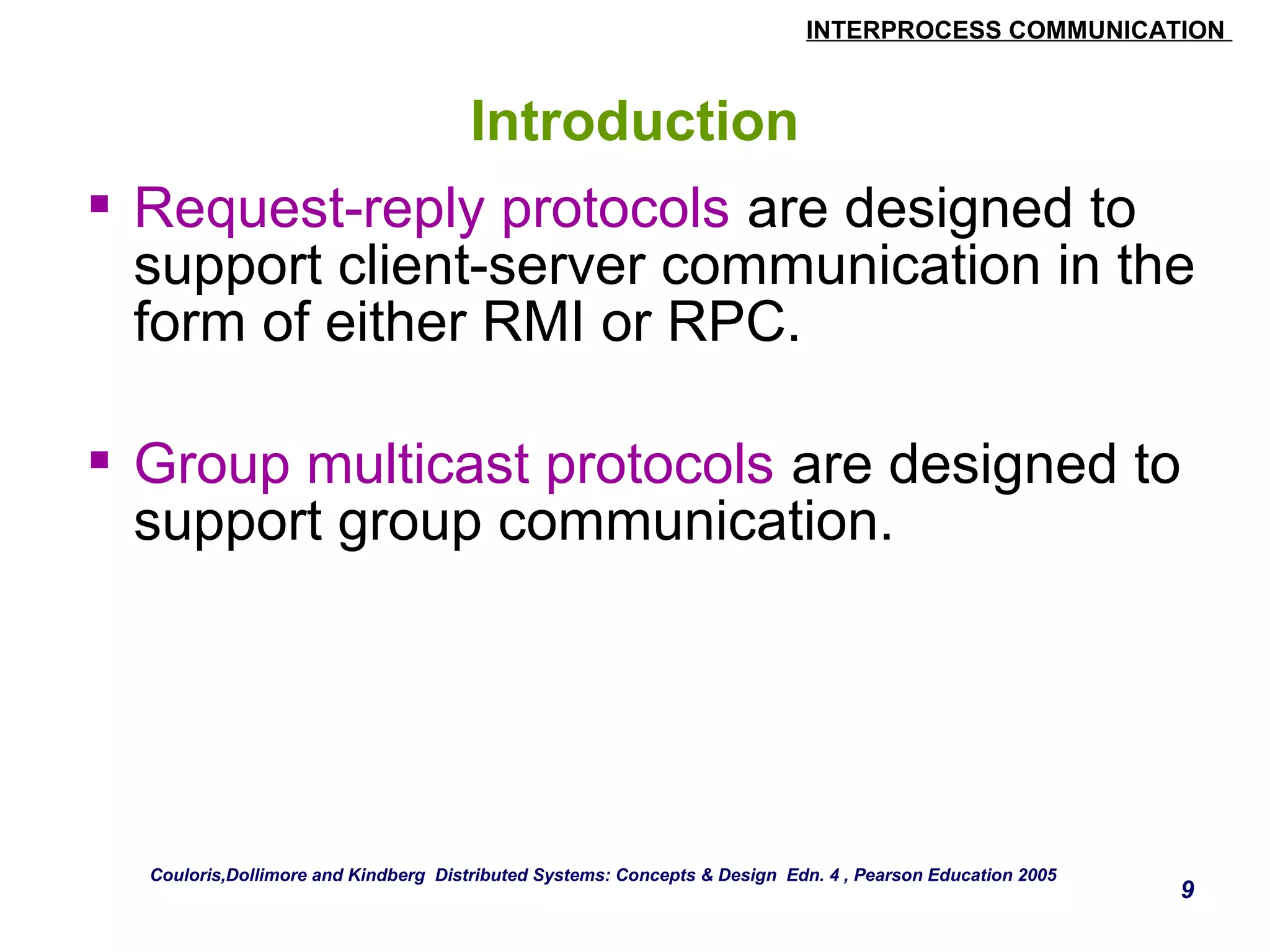
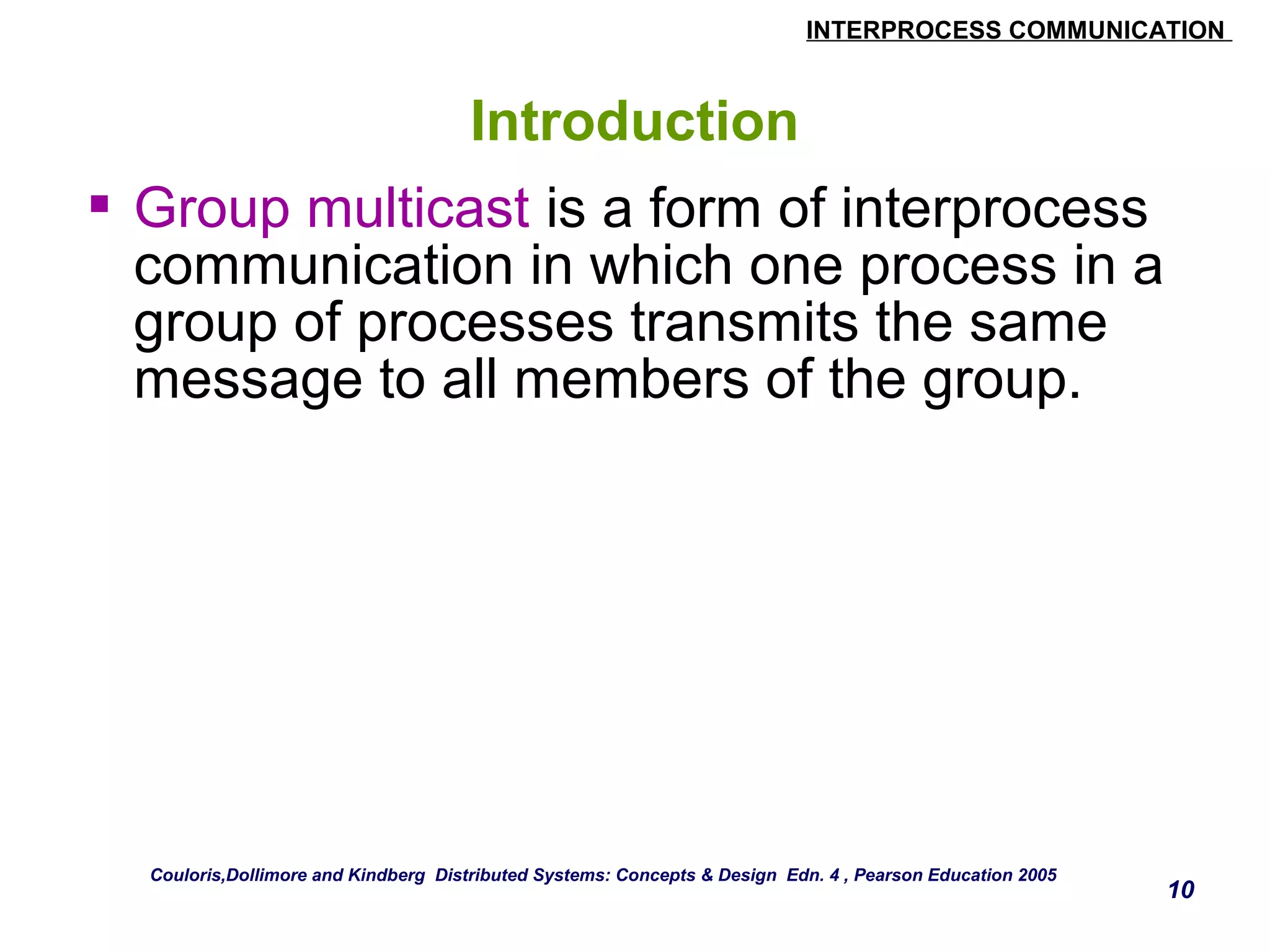
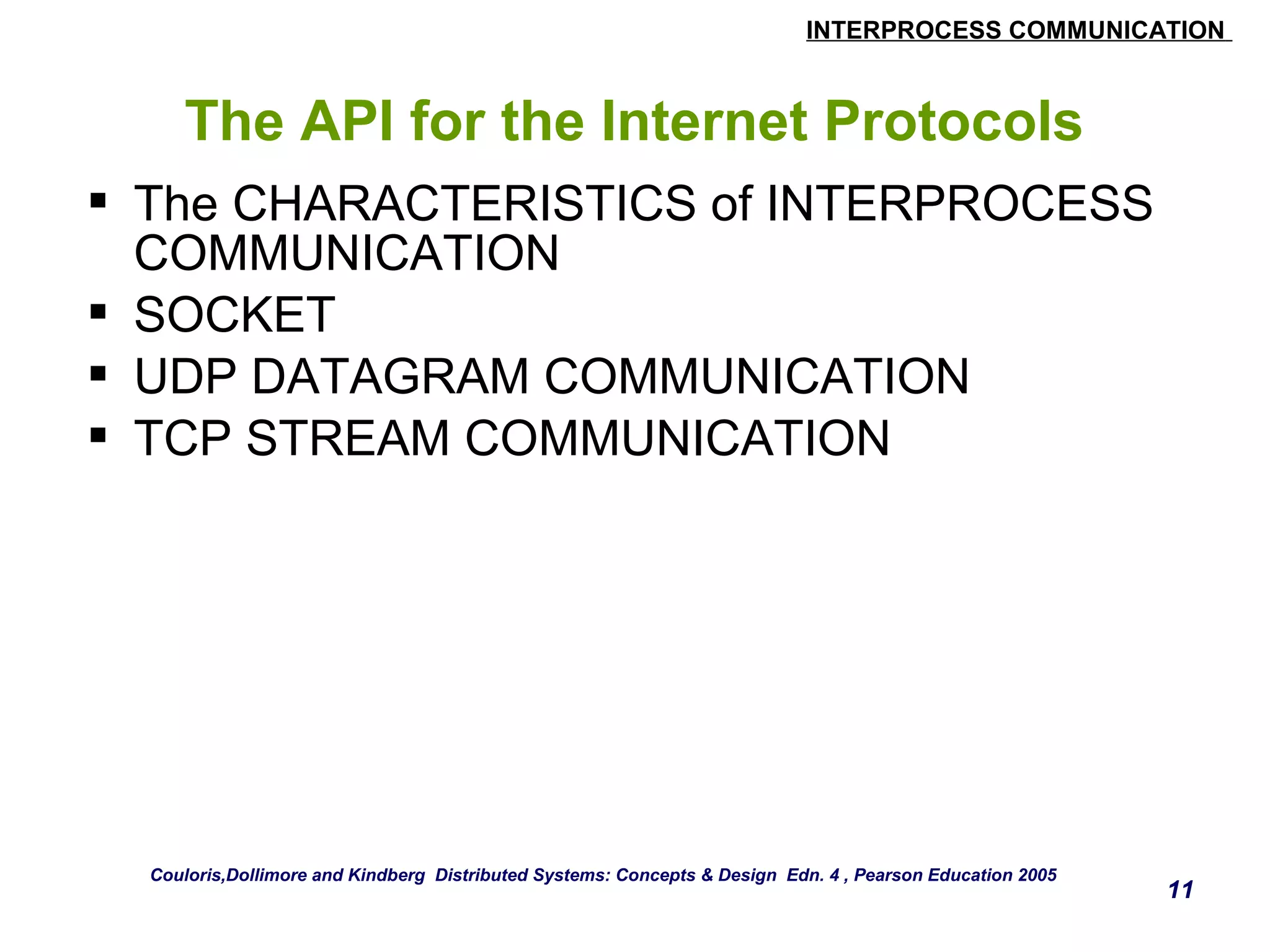
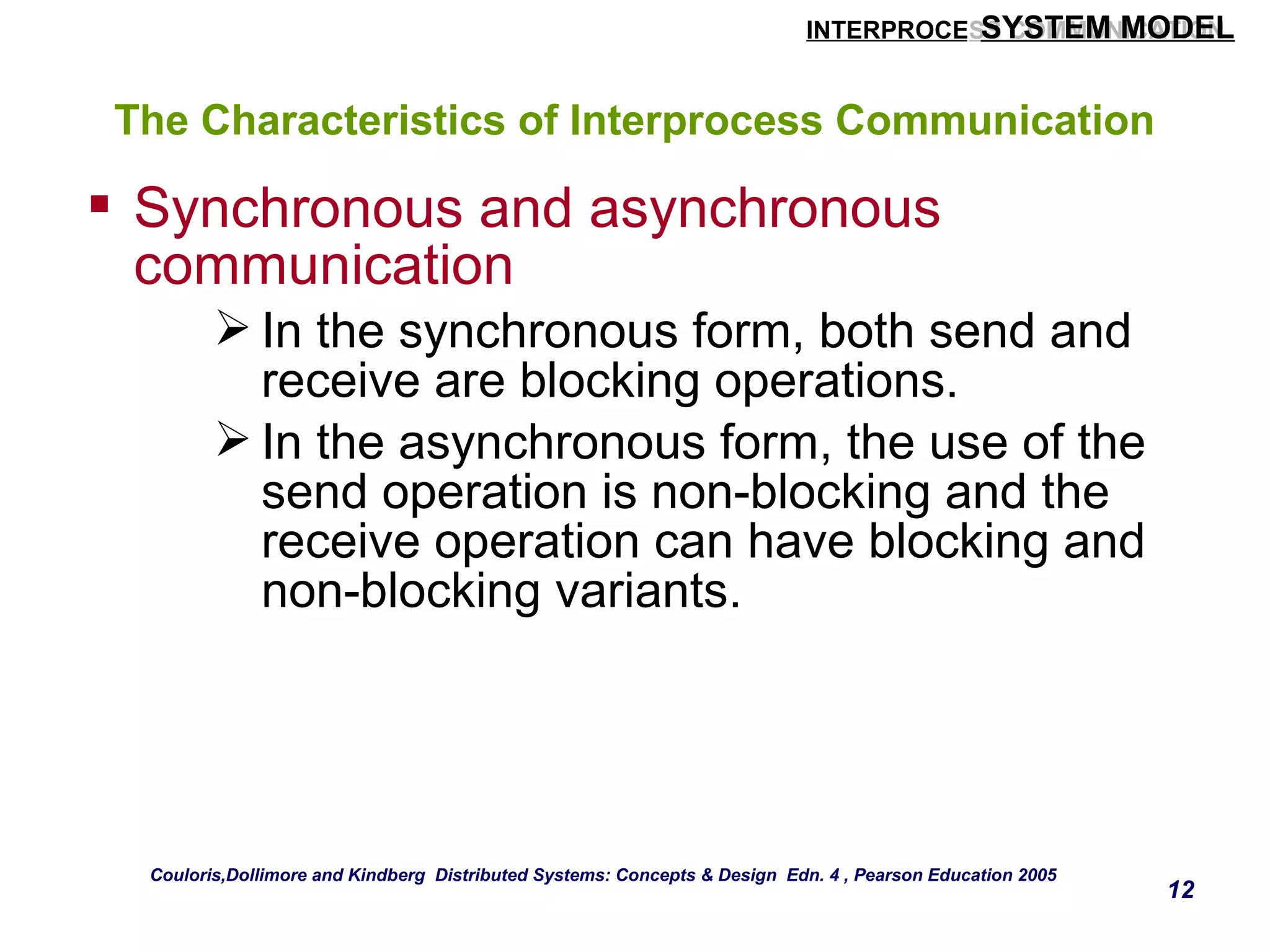

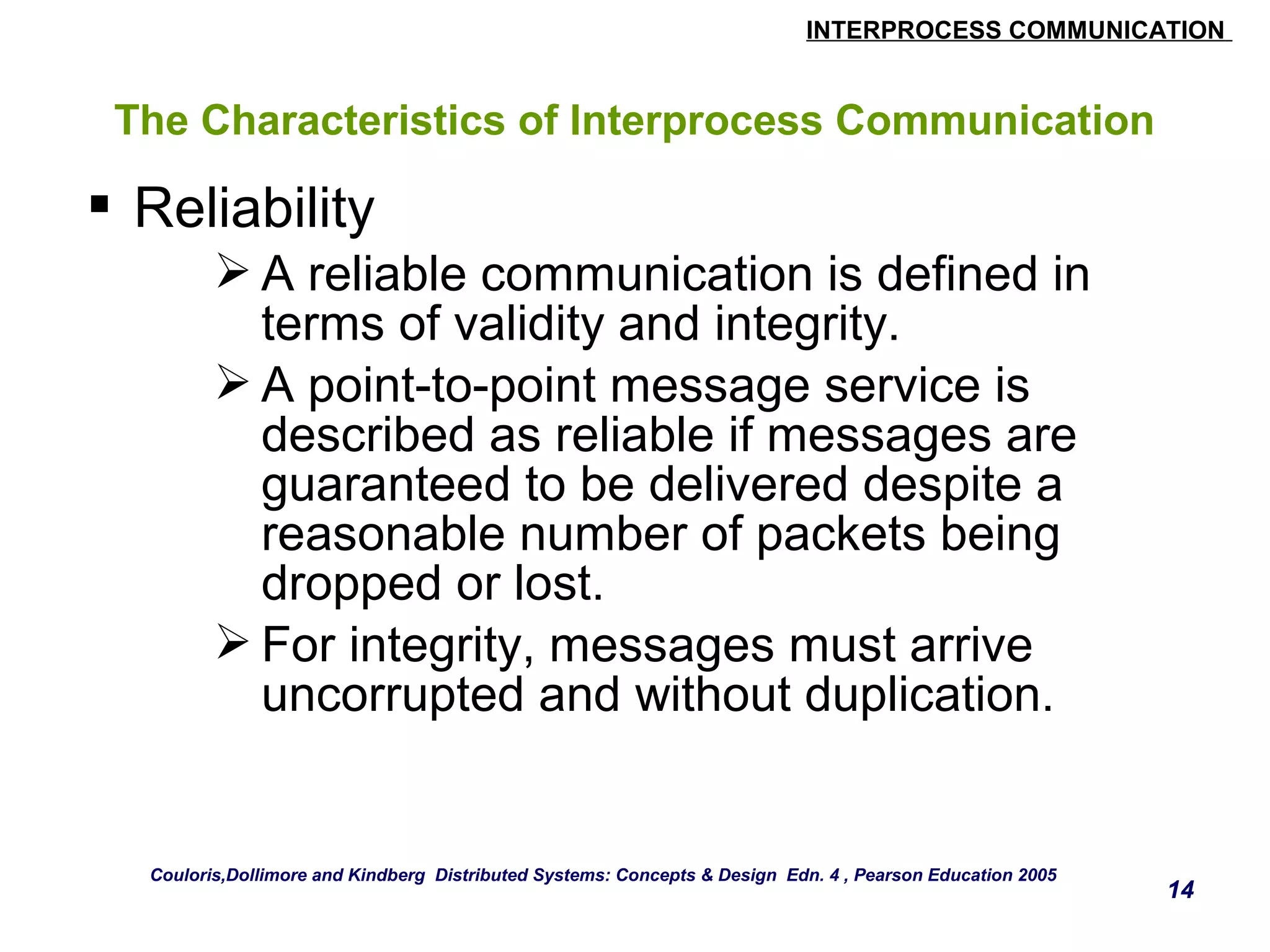

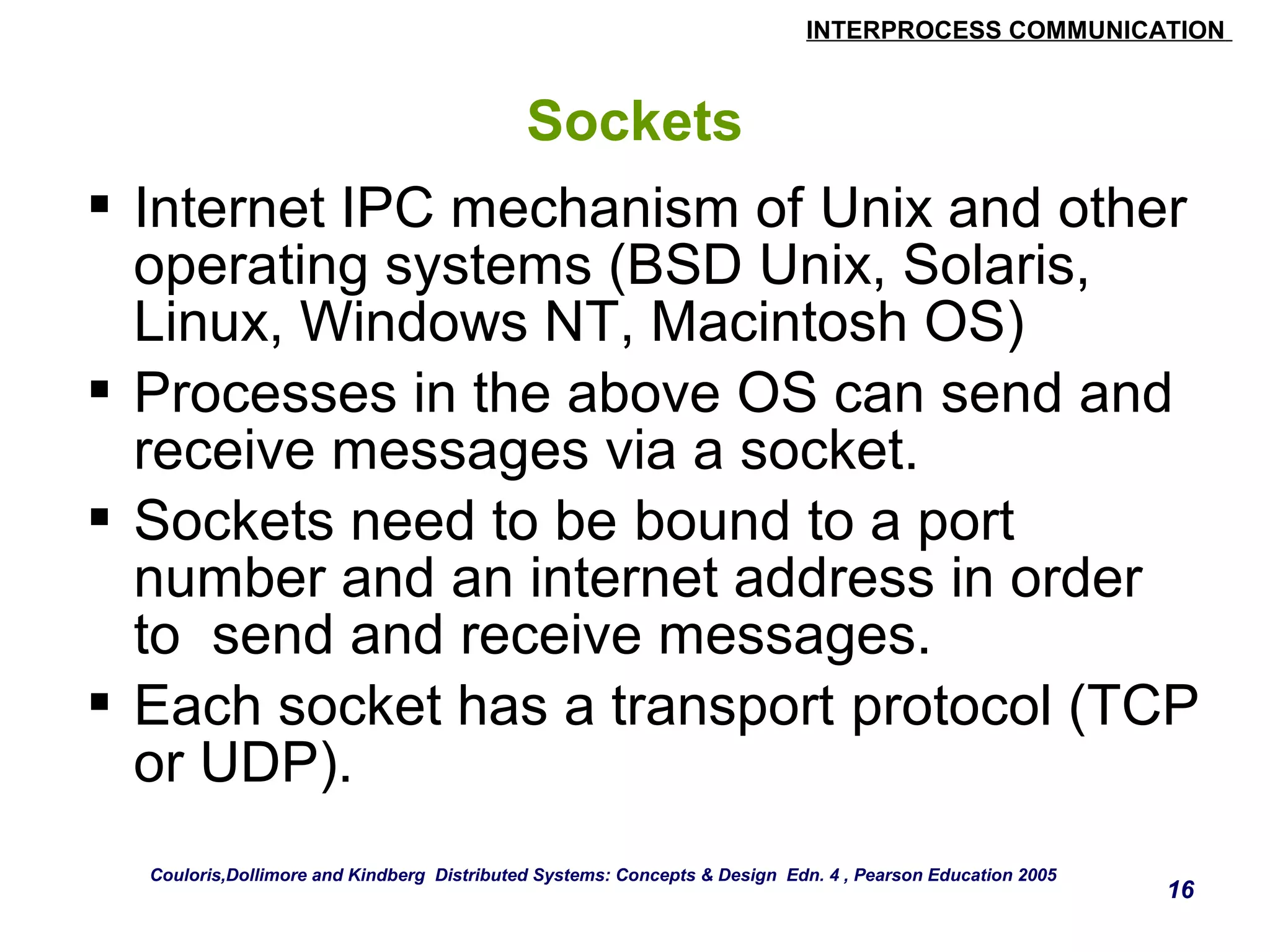
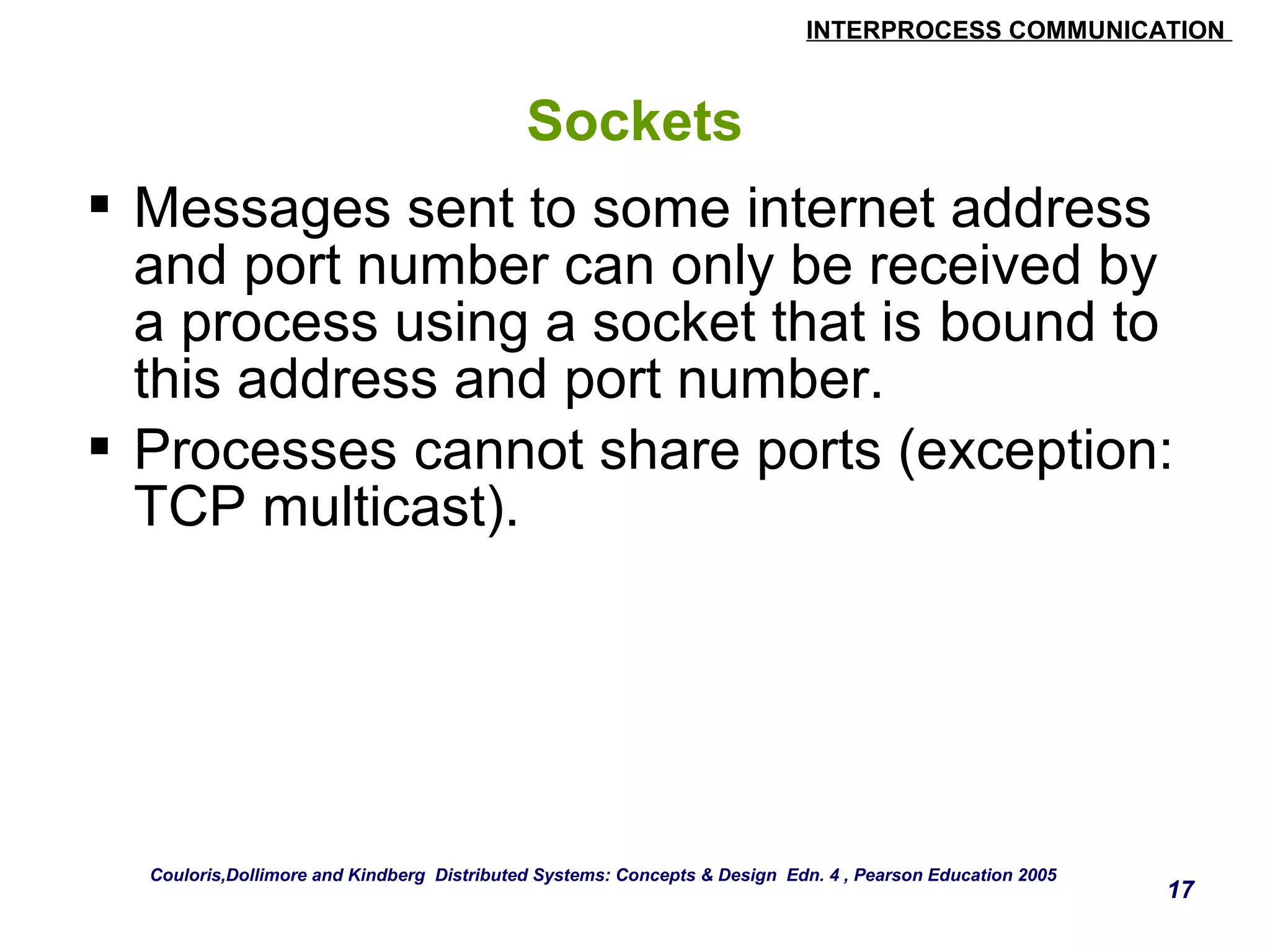


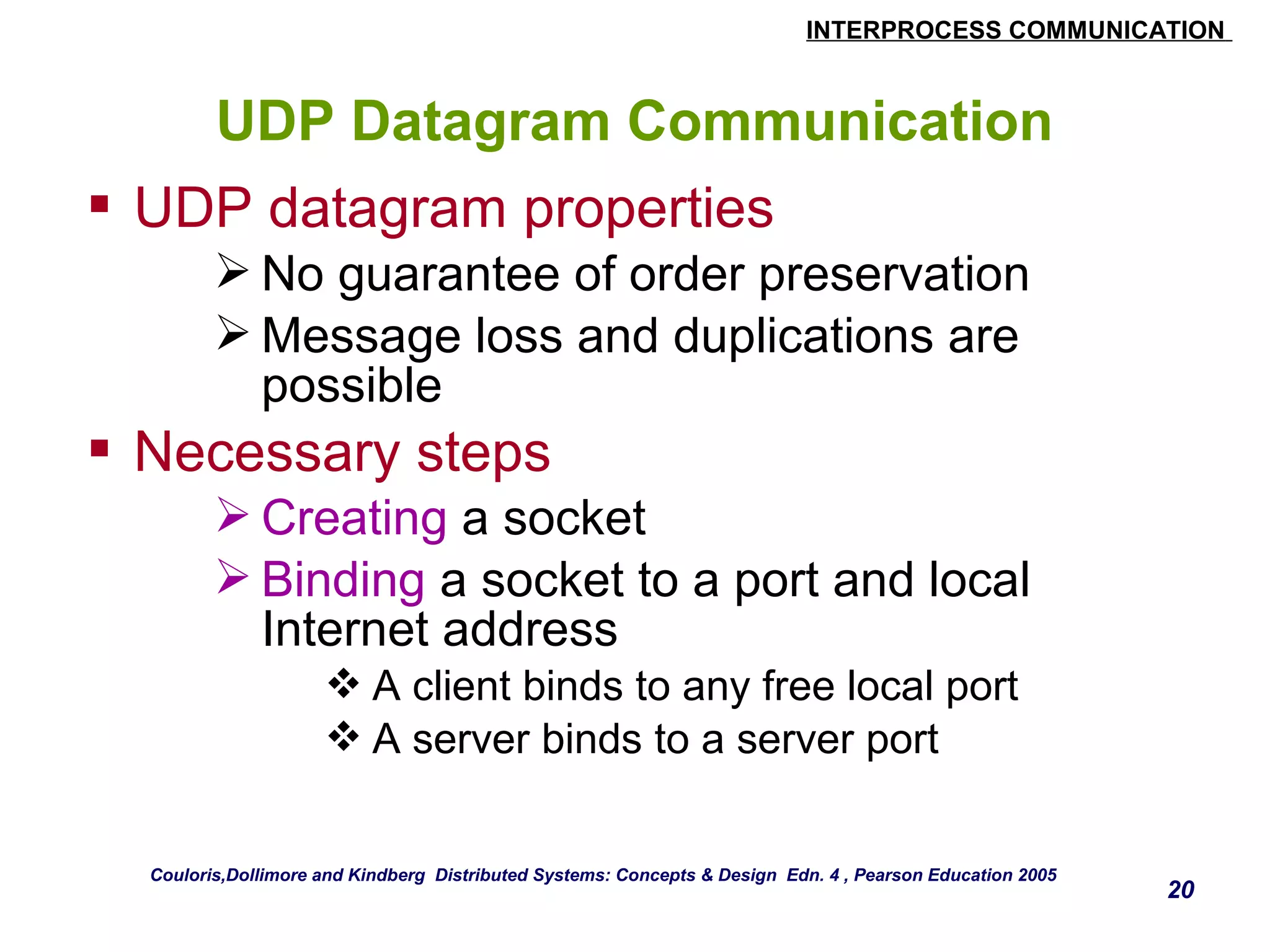
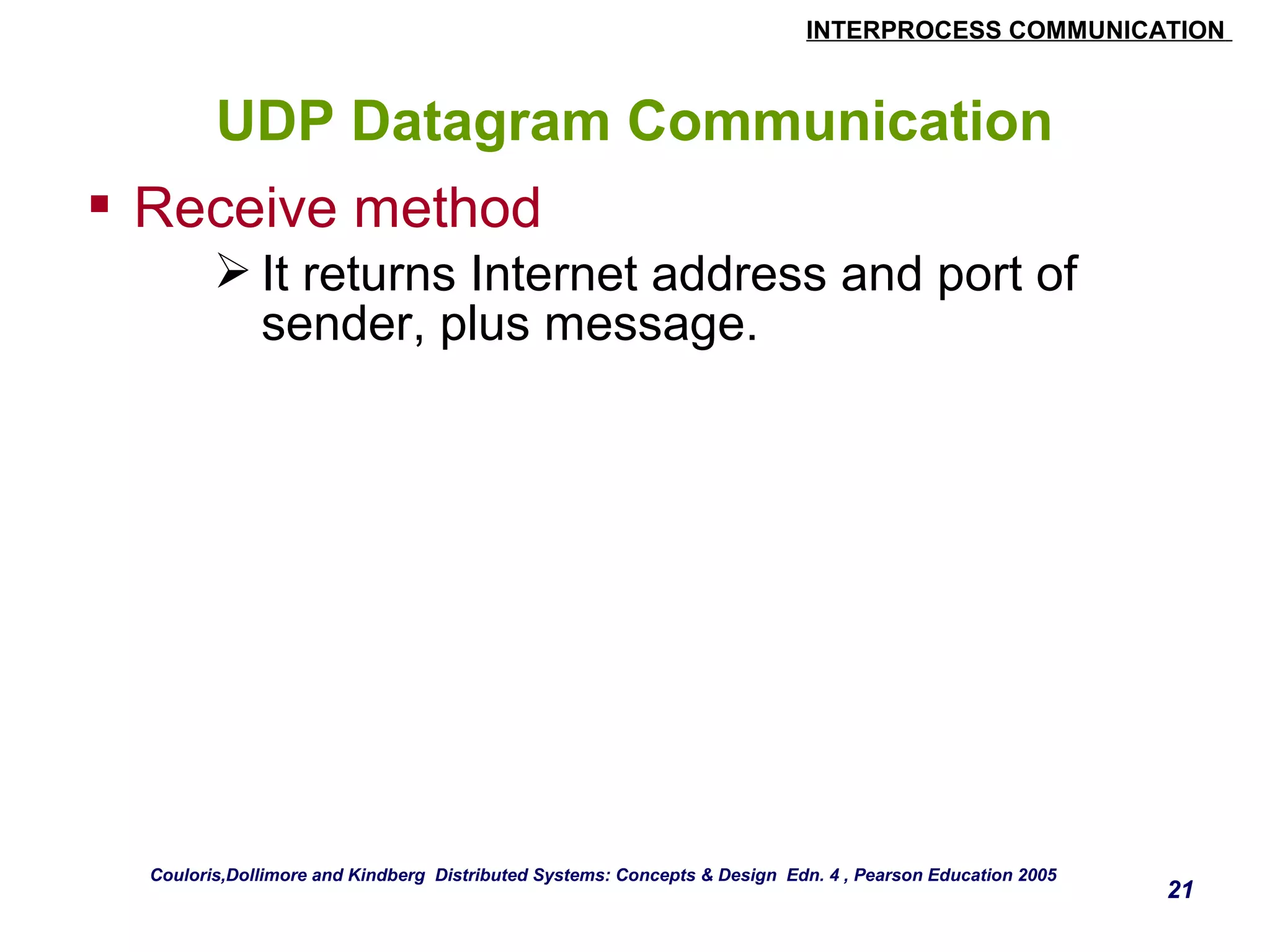
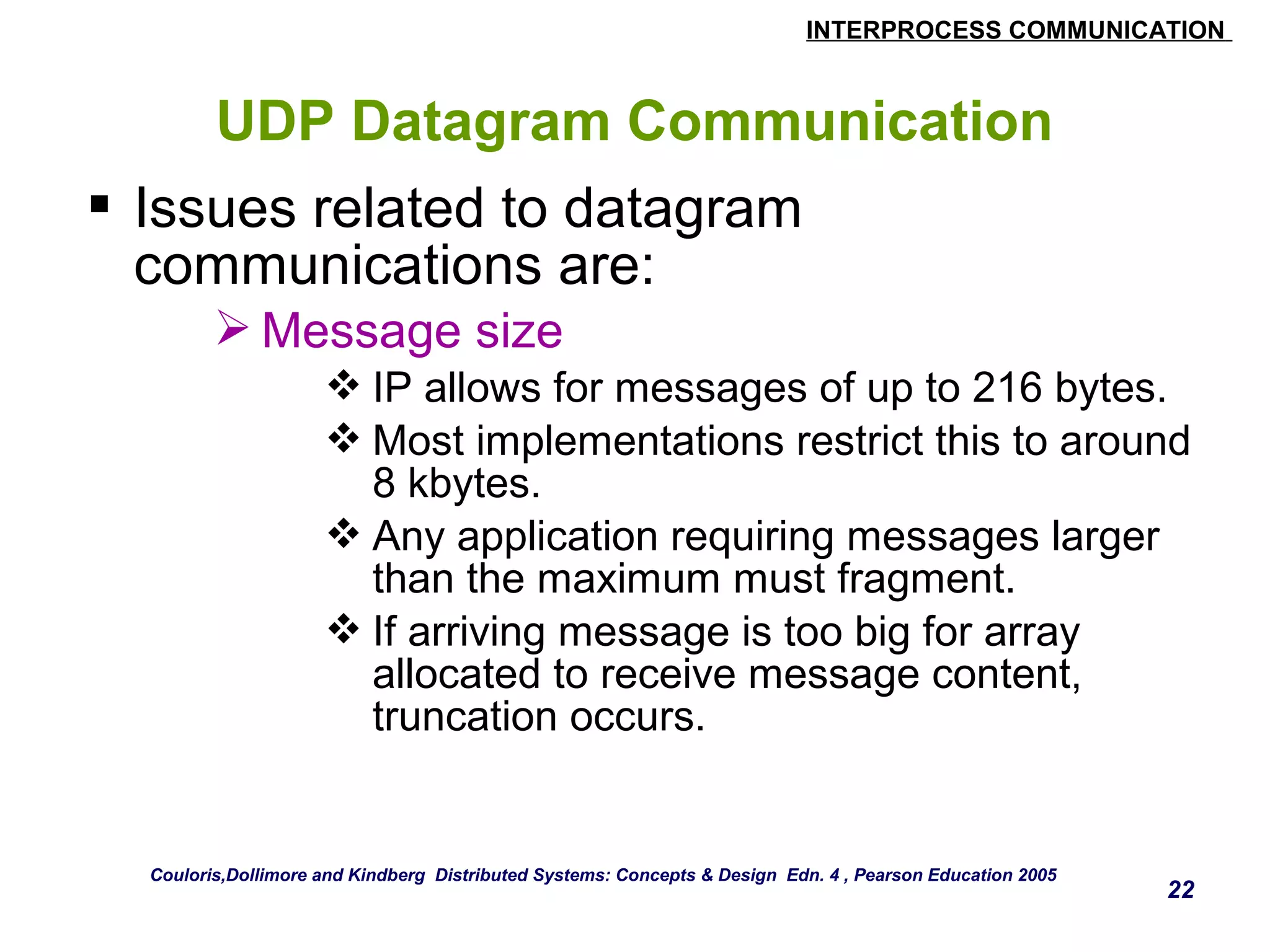

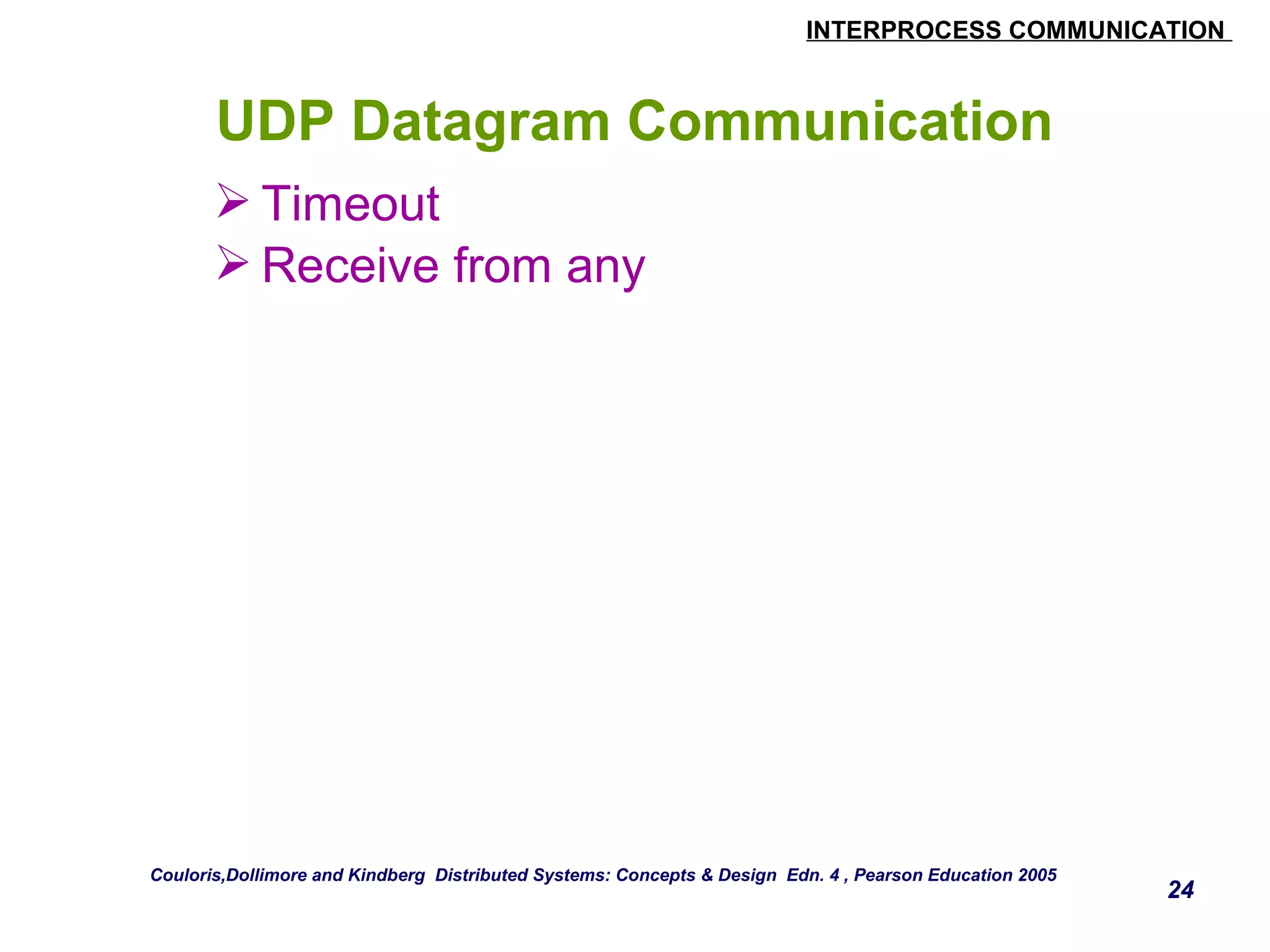
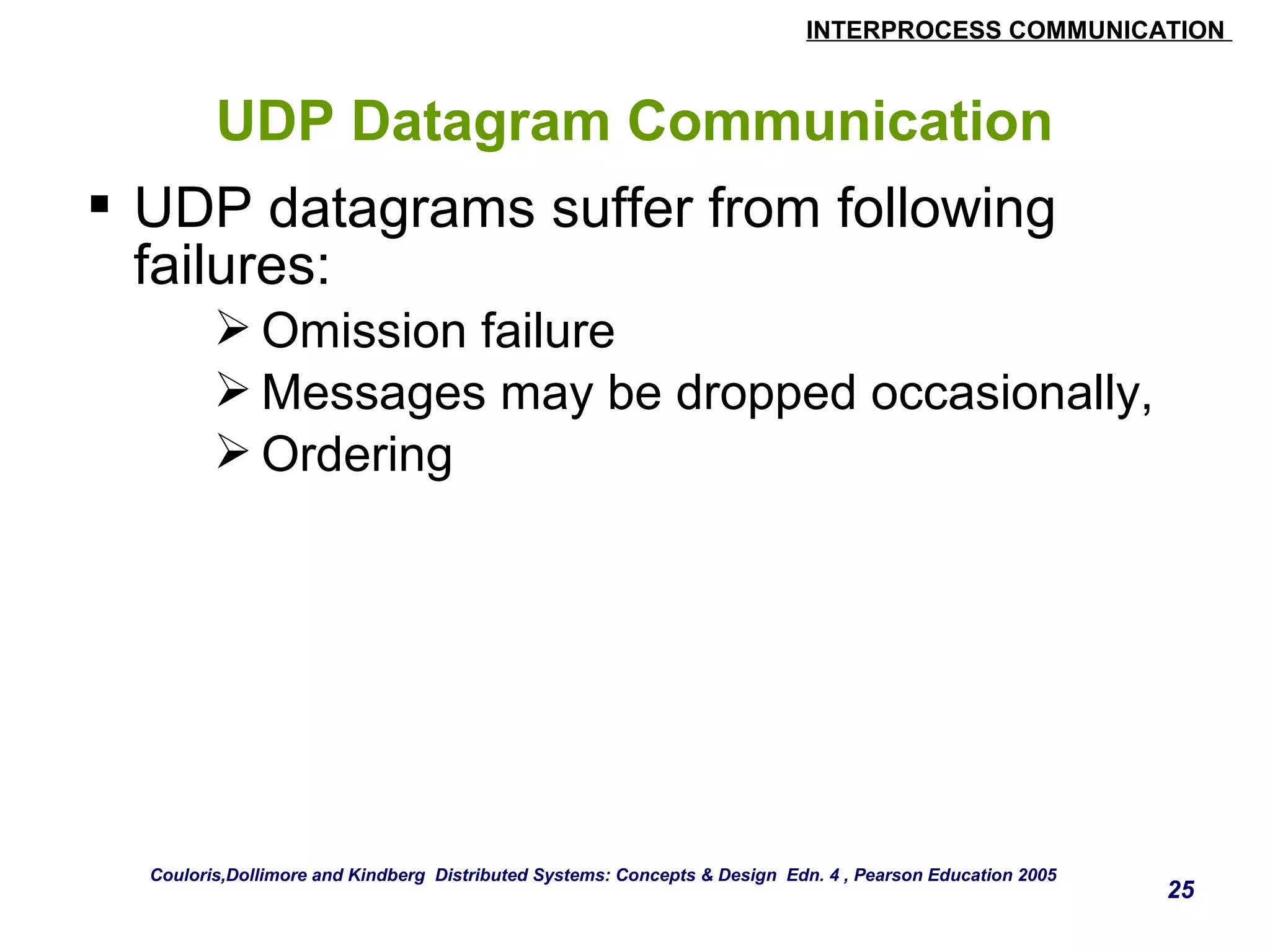

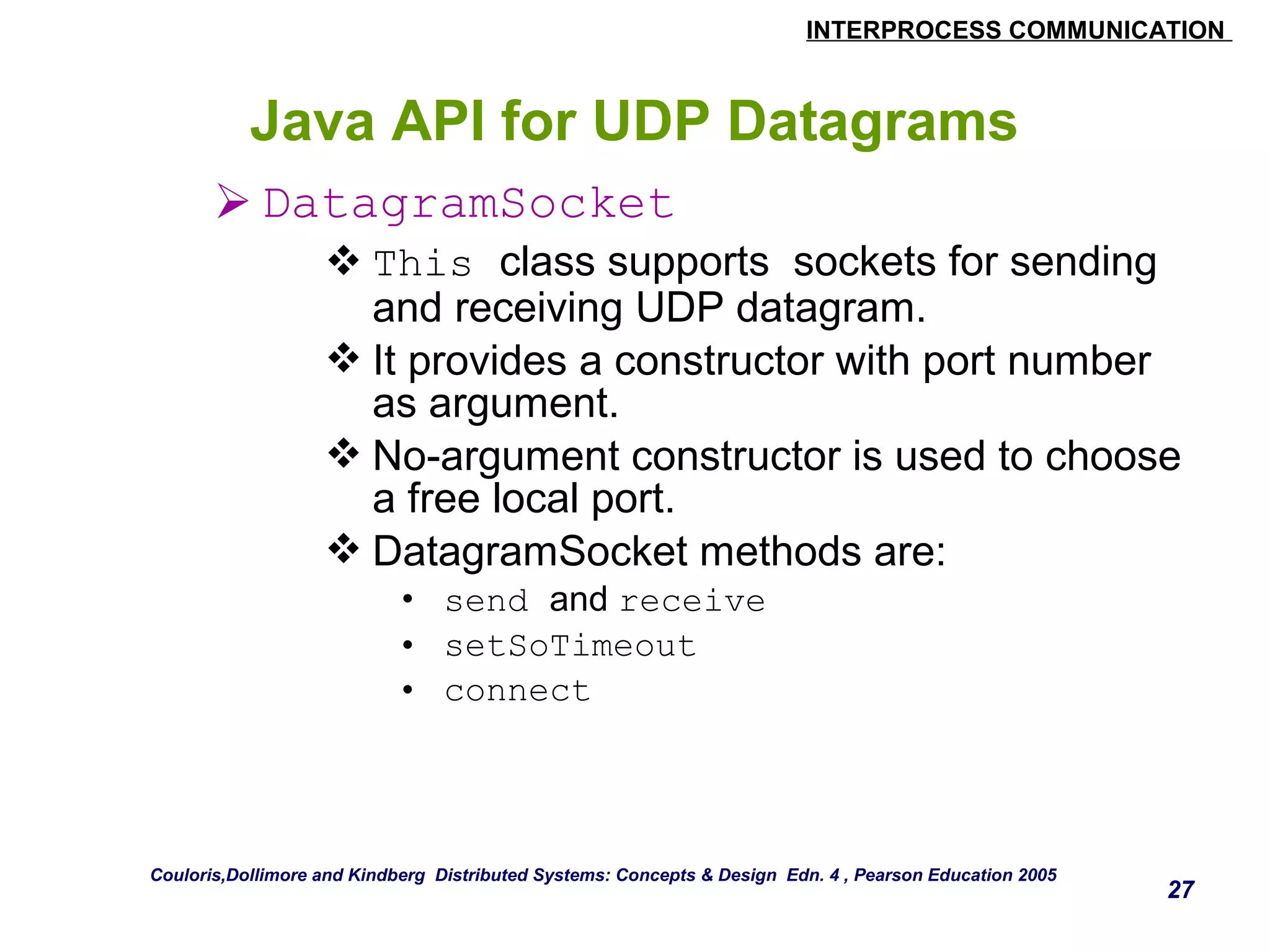
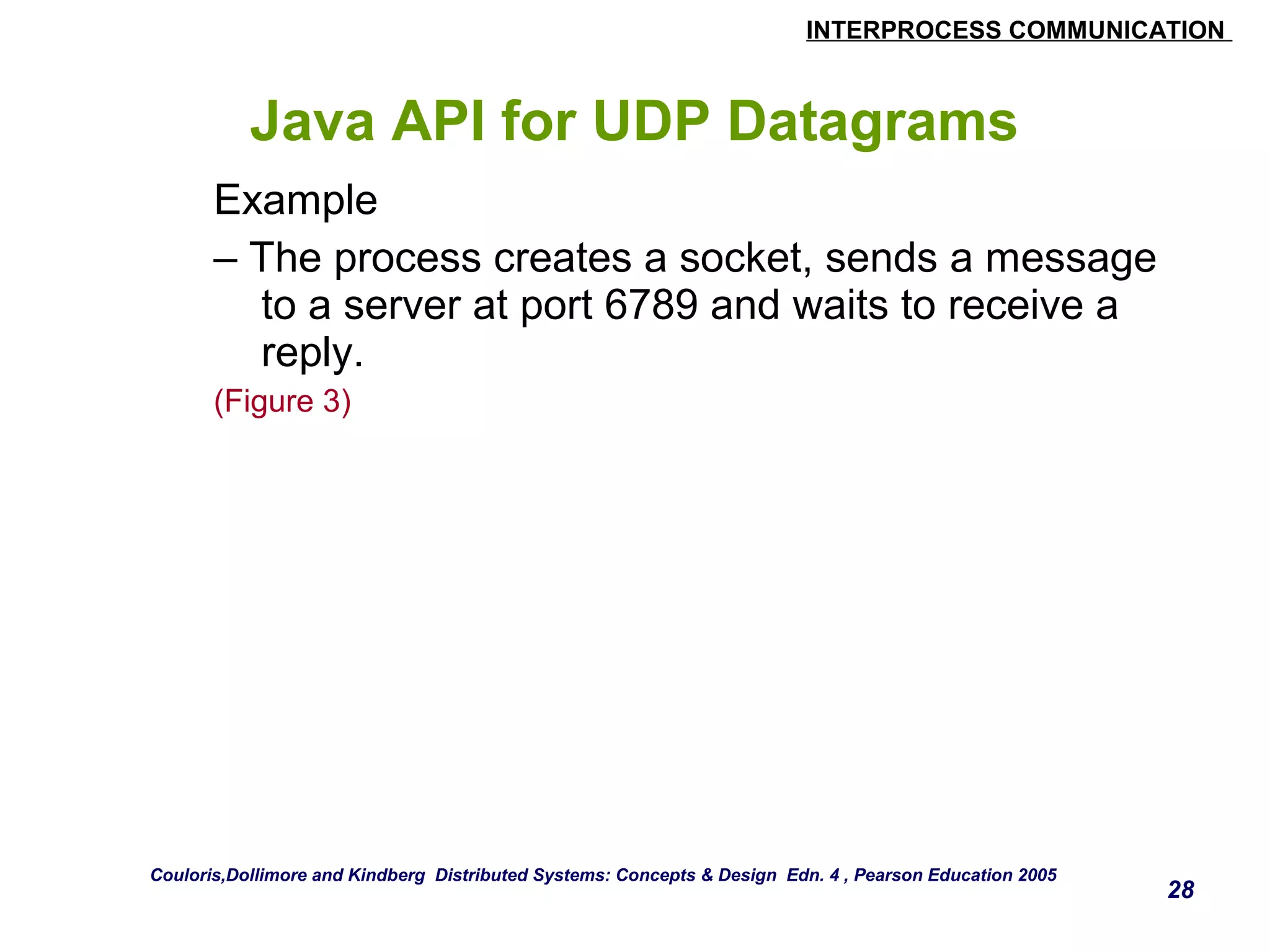
![INTERPROCESS COMMUNICATION
29
Java API for UDP Datagrams
import java.net.*;
import java.io.*;
public class UDPClient{
public static void main(String args[]){
// args give message contents and destination hostname
try {
DatagramSocket aSocket = new DatagramSocket(); // create socket
byte [] m = args[0].getBytes();
InetAddress aHost = InetAddress.getByName(args[1]); // DNS lookup
int serverPort = 6789;
DatagramPacket request =
new DatagramPacket(m, args[0].length(), aHost, serverPort);
aSocket.send(request); //send nessage
byte[] buffer = new byte[1000];
DatagramPacket reply = new DatagramPacket(buffer, buffer.length);
aSocket.receive(reply); //wait for reply
System.out.println("Reply: " + new String(reply.getData()));
aSocket.close();
}catch (SocketException e){System.out.println("Socket: " + e.getMessage());
}catch (IOException e){System.out.println("IO: " + e.getMessage());}
} finally{if (aSocket !=null)aSocket.close()}
}
}
Figure 3. UDP client sends a message to the server and gets a reply
Couloris,Dollimore and Kindberg Distributed Systems: Concepts & Design Edn. 4 , Pearson Education 2005](https://image.slidesharecdn.com/ds-ch4-141013041531-conversion-gate02/75/Interprocess-Communication-29-2048.jpg)
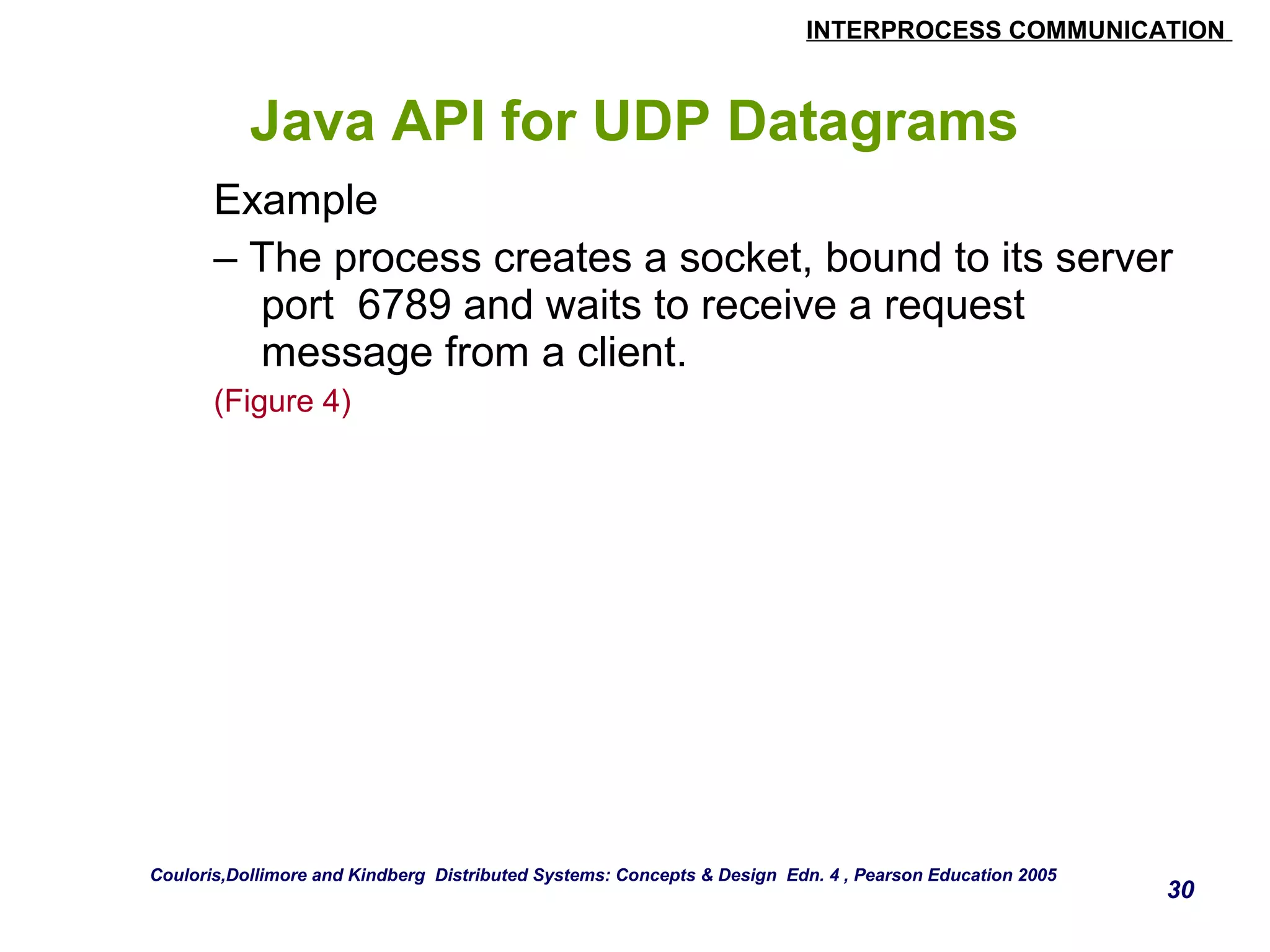
![INTERPROCESS COMMUNICATION
31
Java API for UDP datagrams
import java.net.*;
import java.io.*;
public class UDPServer{
public static void main(String args[]){
DatagramSocket aSocket = null;
try {
aSocket = new DatagramSocket(6789);
byte []buffer = new byte[1000];
While(true){
DatagramPacket request =new DatagramPacket(buffer, buffer.length);
aSocket.receive(request);
DatagramPacket reply = new DatagramPacket(request.getData();
request.getLength(),request.getAddress(), request.getPort();
aSocket.send(reply);
}
}catch (SocketException e){System.out.println("Socket: " + e.getMessage());
}catch (IOException e){System.out.println("IO: " + e.getMessage());}
}finally{if (aSocket !=null)aSocket.close()}
}
}
Figure 4. UDP server repeatedly receives a request and sends it back to the client
Couloris,Dollimore and Kindberg Distributed Systems: Concepts & Design Edn. 4 , Pearson Education 2005](https://image.slidesharecdn.com/ds-ch4-141013041531-conversion-gate02/75/Interprocess-Communication-31-2048.jpg)


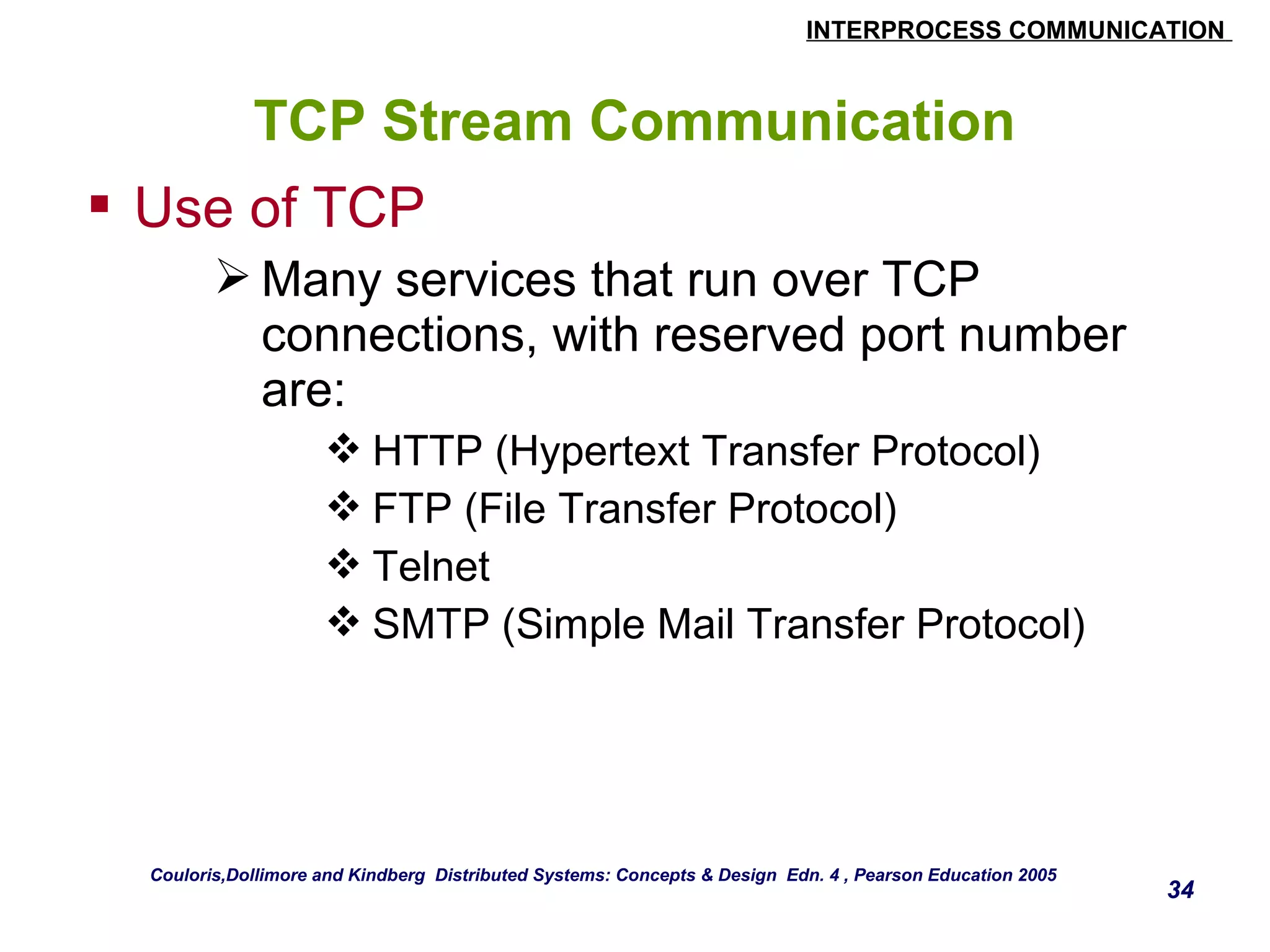
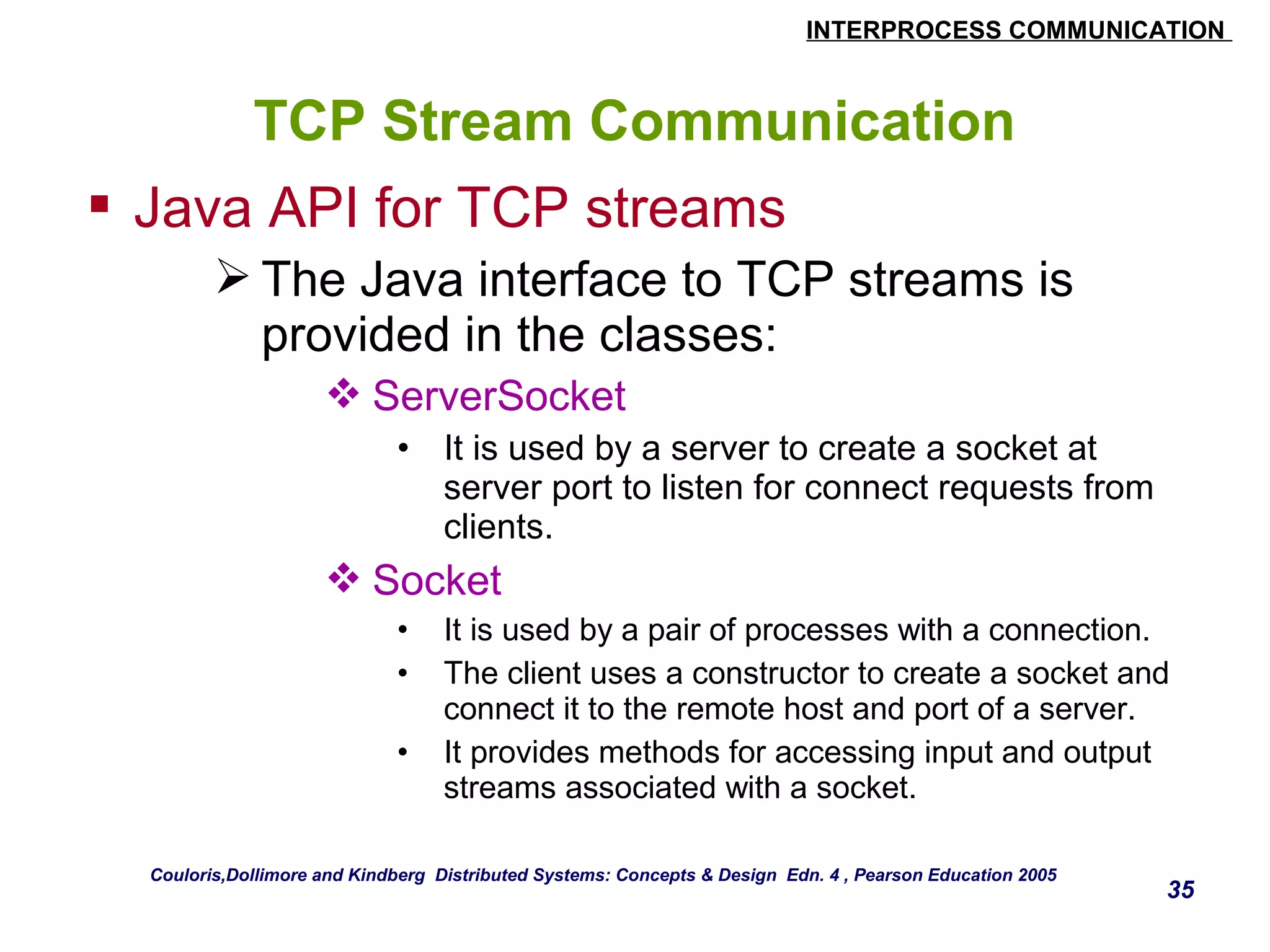

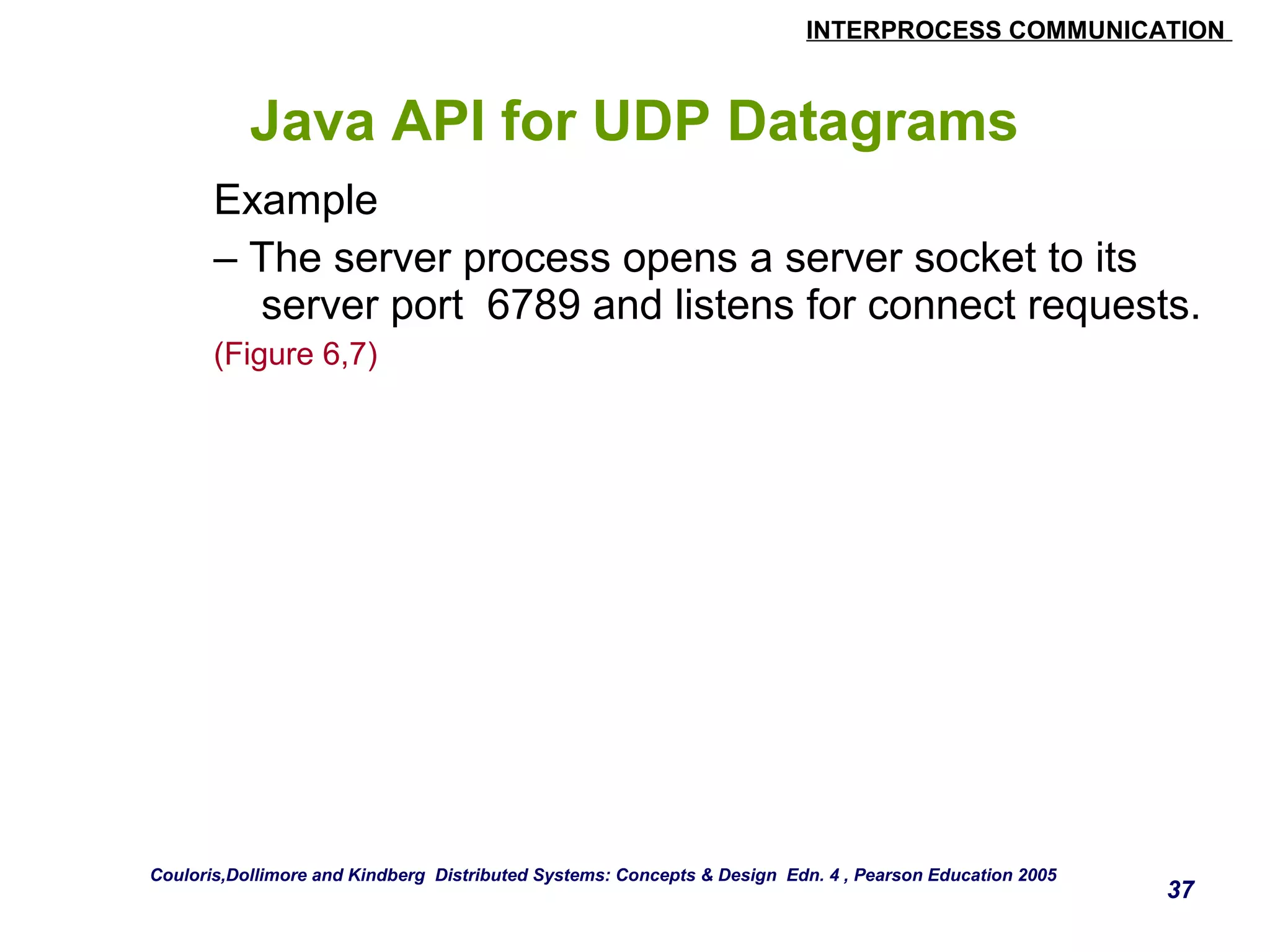
![INTERPROCESS COMMUNICATION
38
TCP Stream Communication
import java.net.*;
import java.io.*;
public class TCPServer {
public static void main (String args[]) {
try{
int serverPort = 7896;
ServerSocket listenSocket = new ServerSocket(serverPort);
while(true) {
Socket clientSocket = listenSocket.accept();
Connection c = new Connection(clientSocket);
}
} catch(IOException e) {System.out.println("Listen socket:"+e.getMessage());}
}
}
Figure 6. TCP server makes a connection for each client and then echoes the client’s request
Couloris,Dollimore and Kindberg Distributed Systems: Concepts & Design Edn. 4 , Pearson Education 2005](https://image.slidesharecdn.com/ds-ch4-141013041531-conversion-gate02/75/Interprocess-Communication-38-2048.jpg)
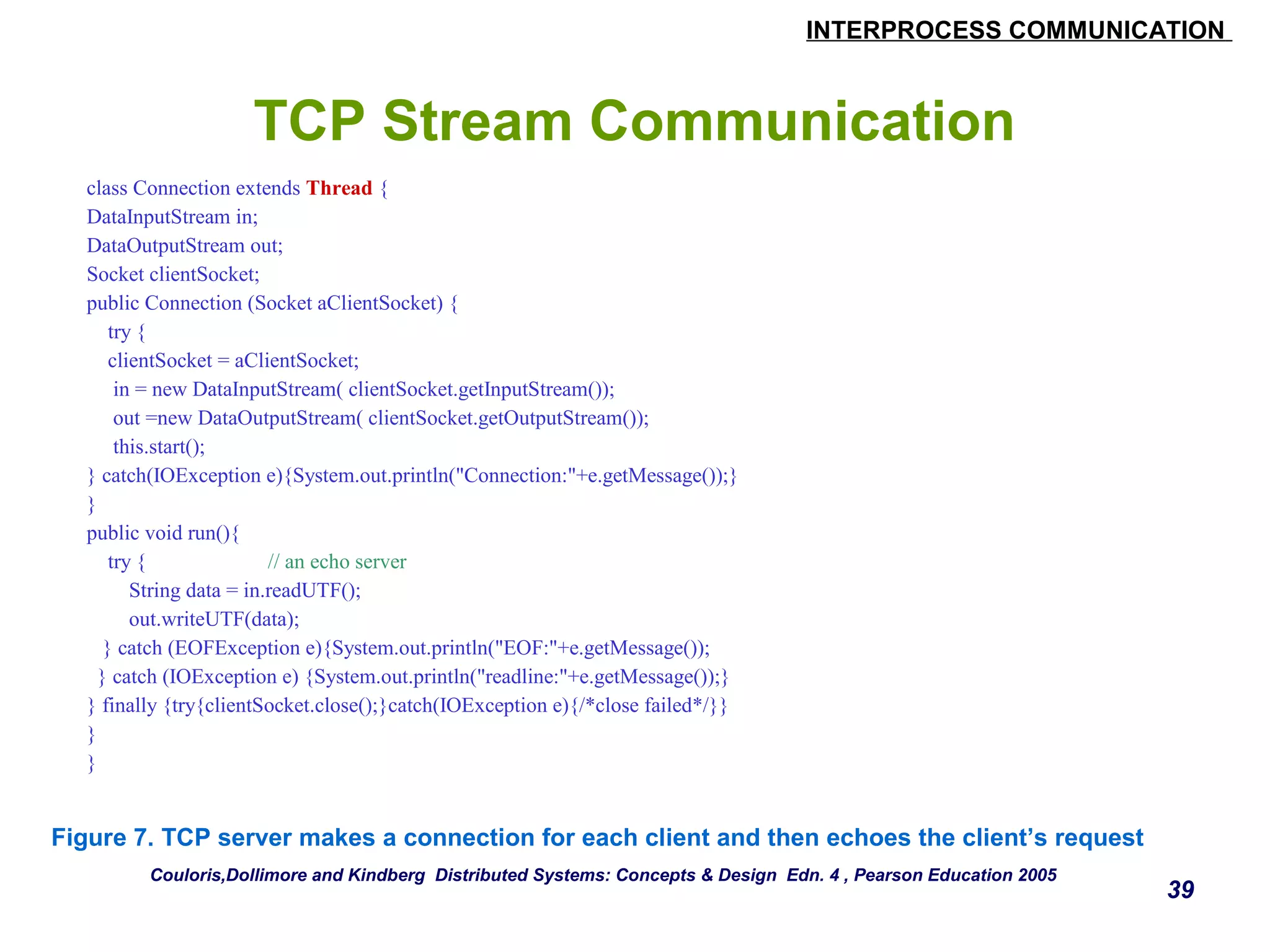
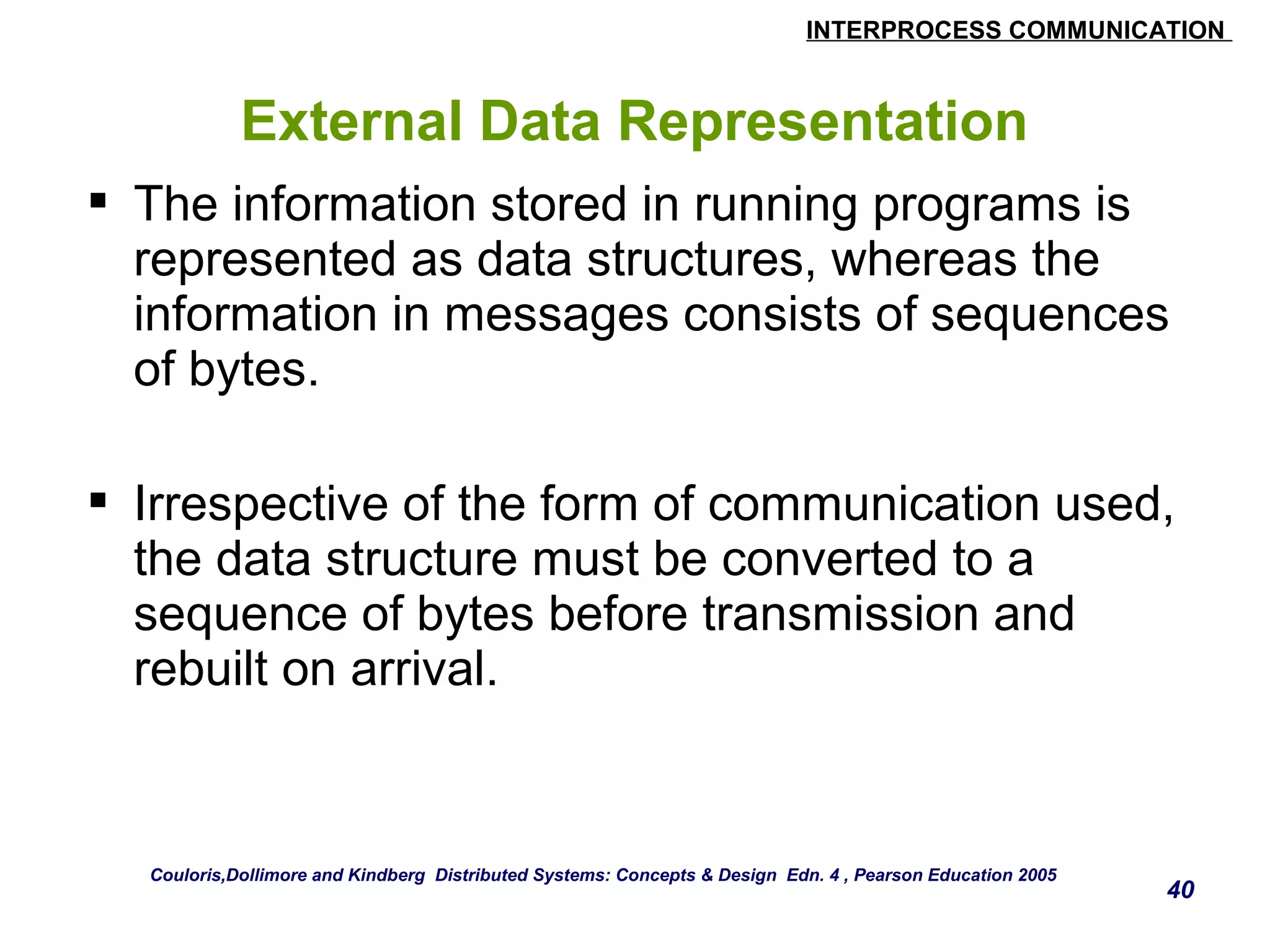

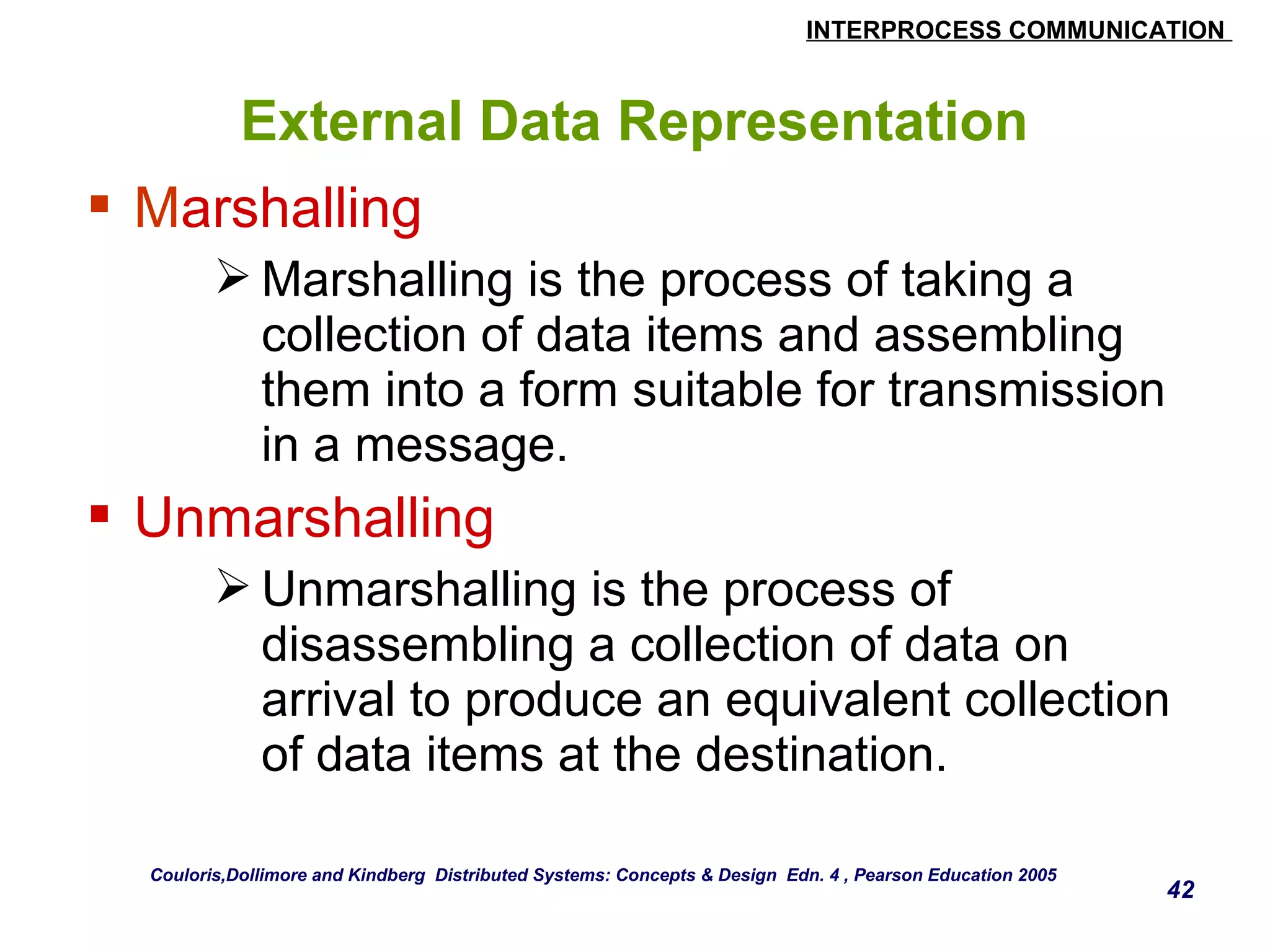
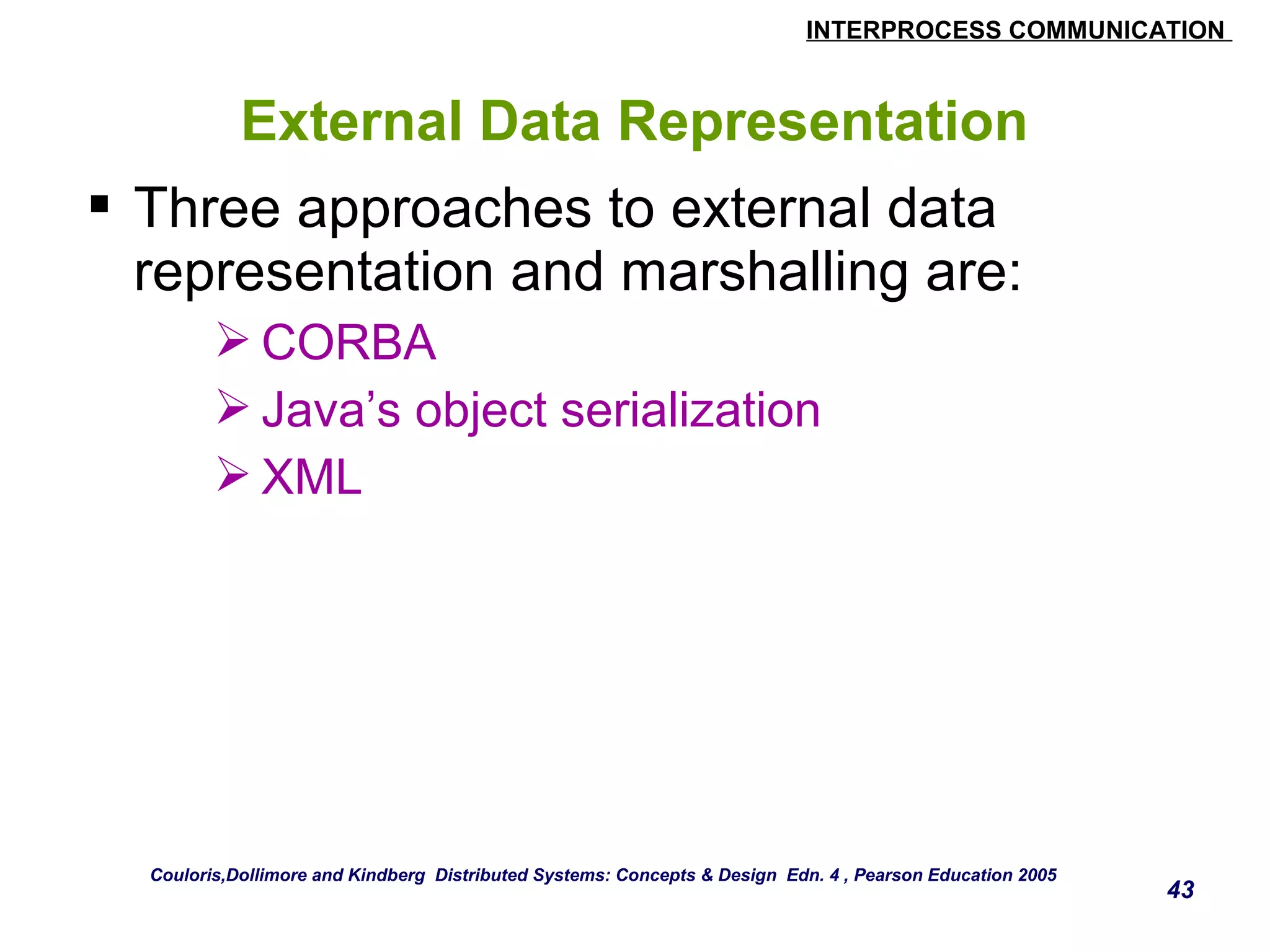
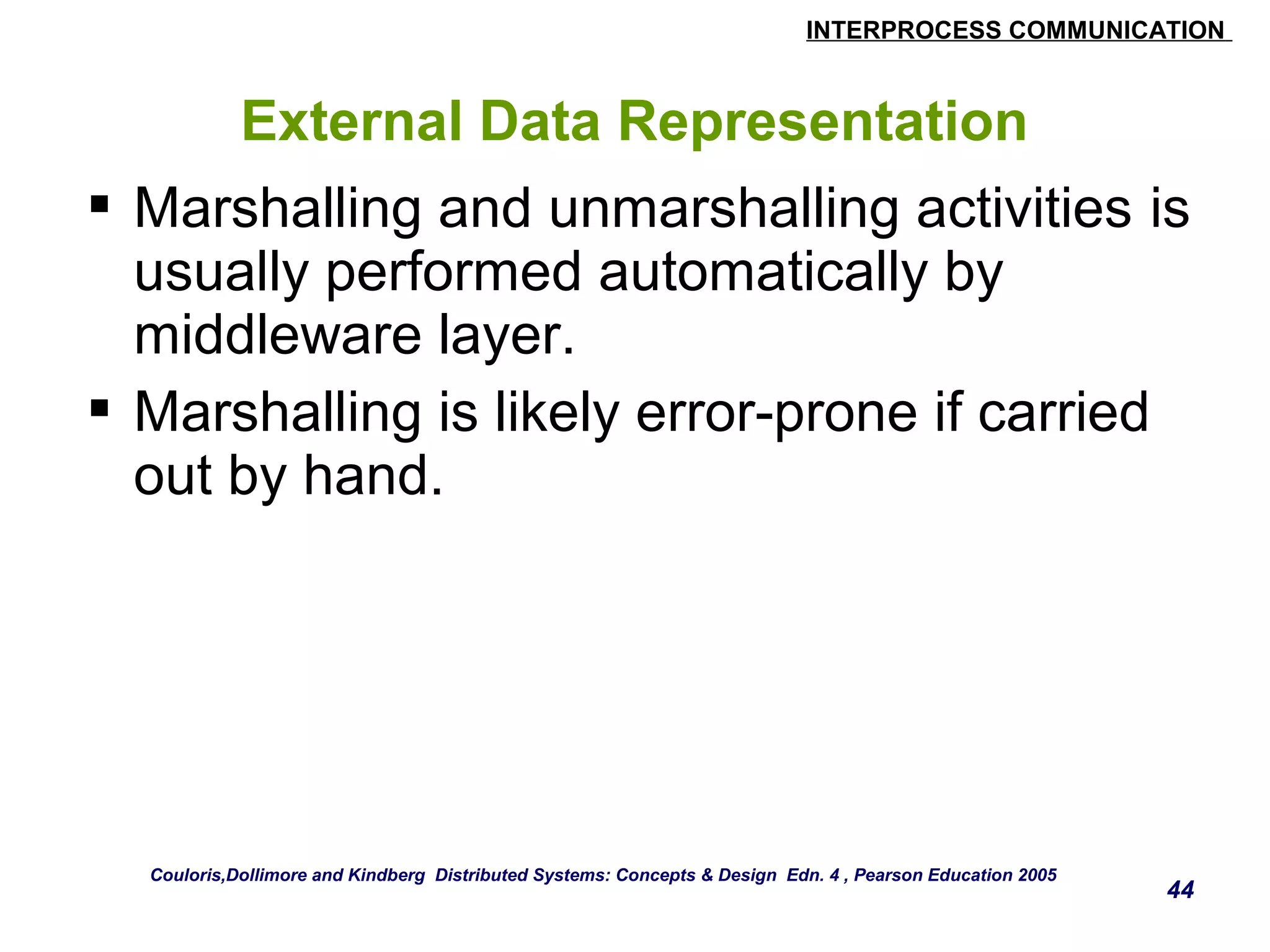

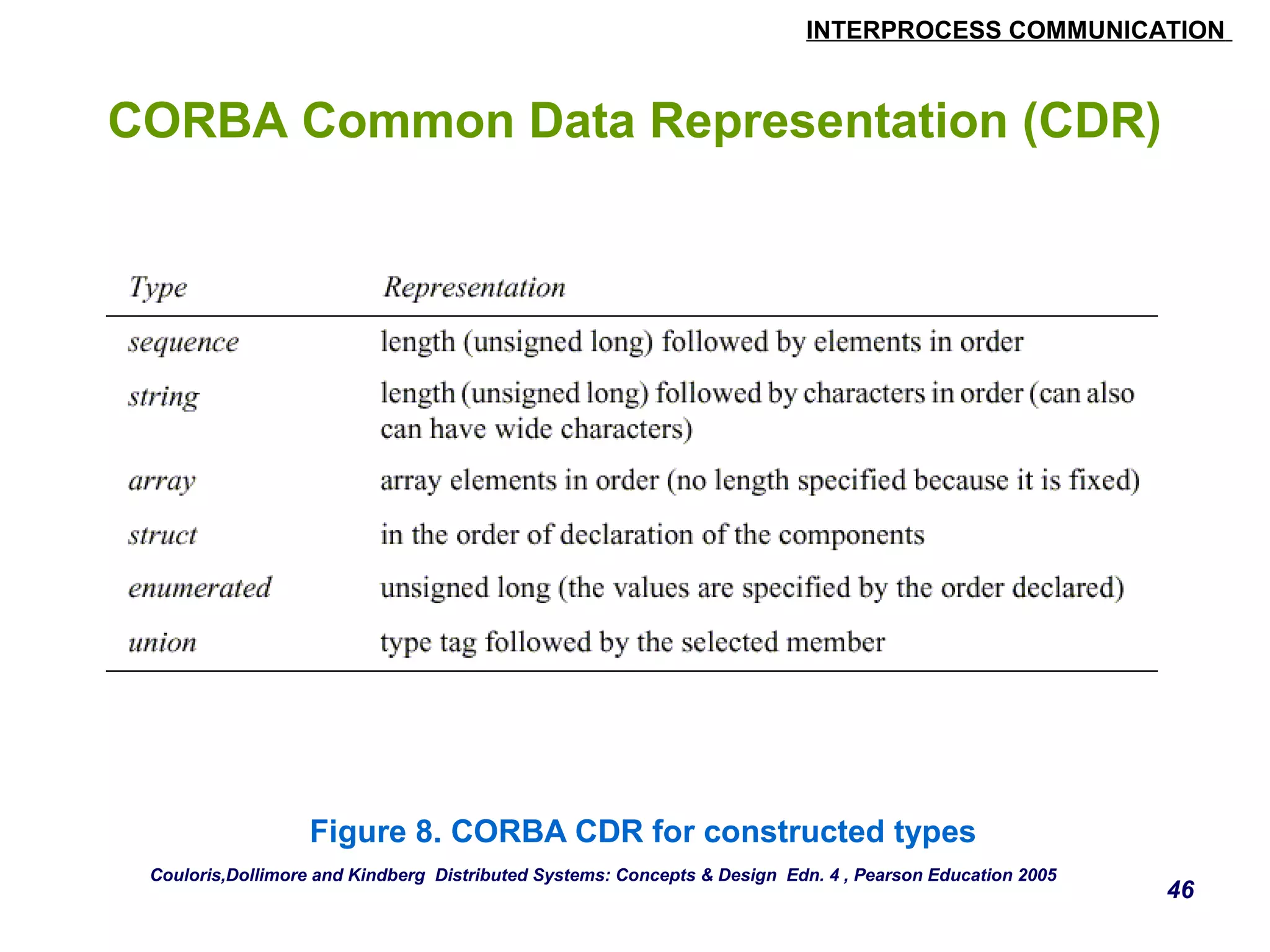
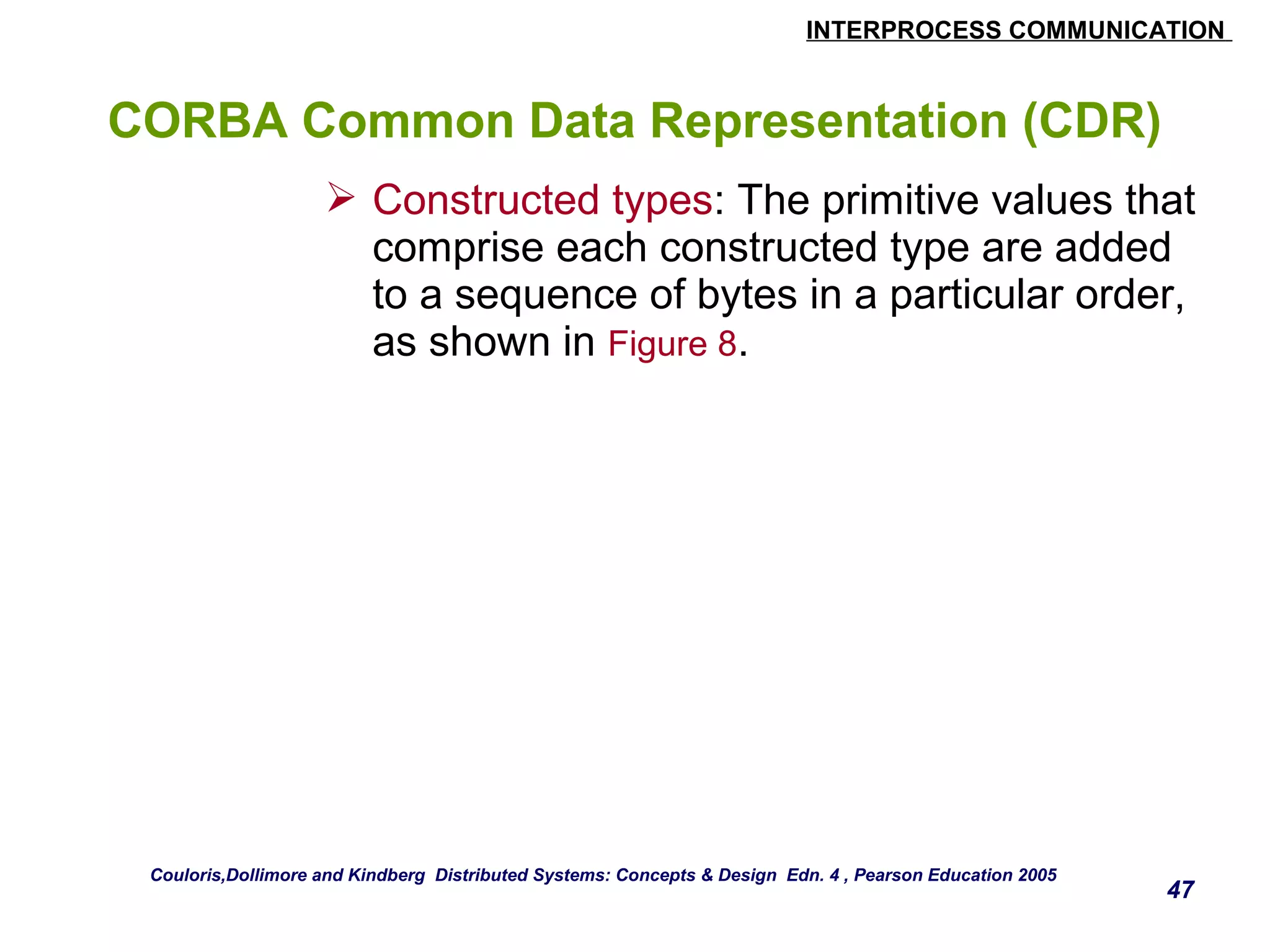
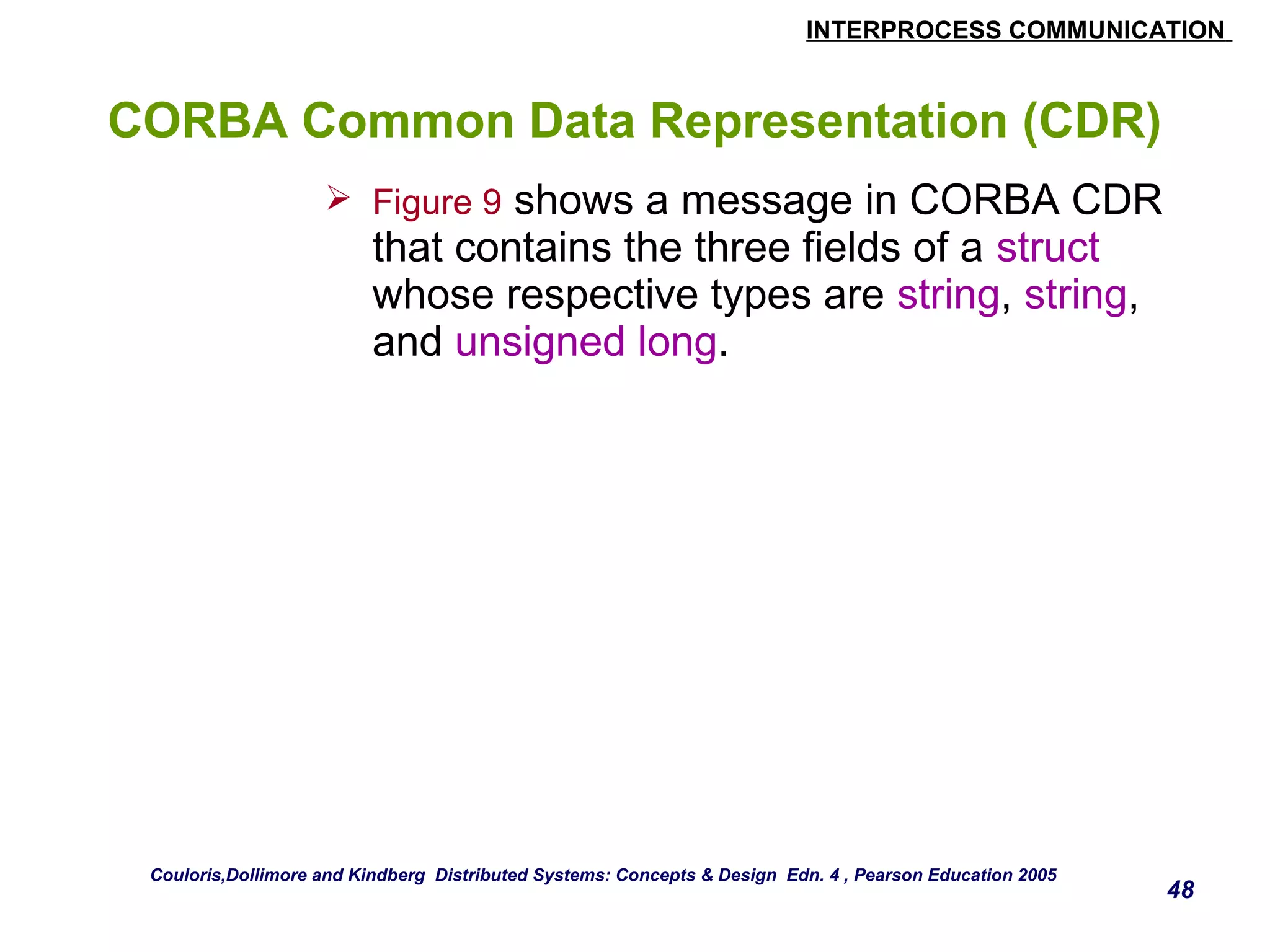
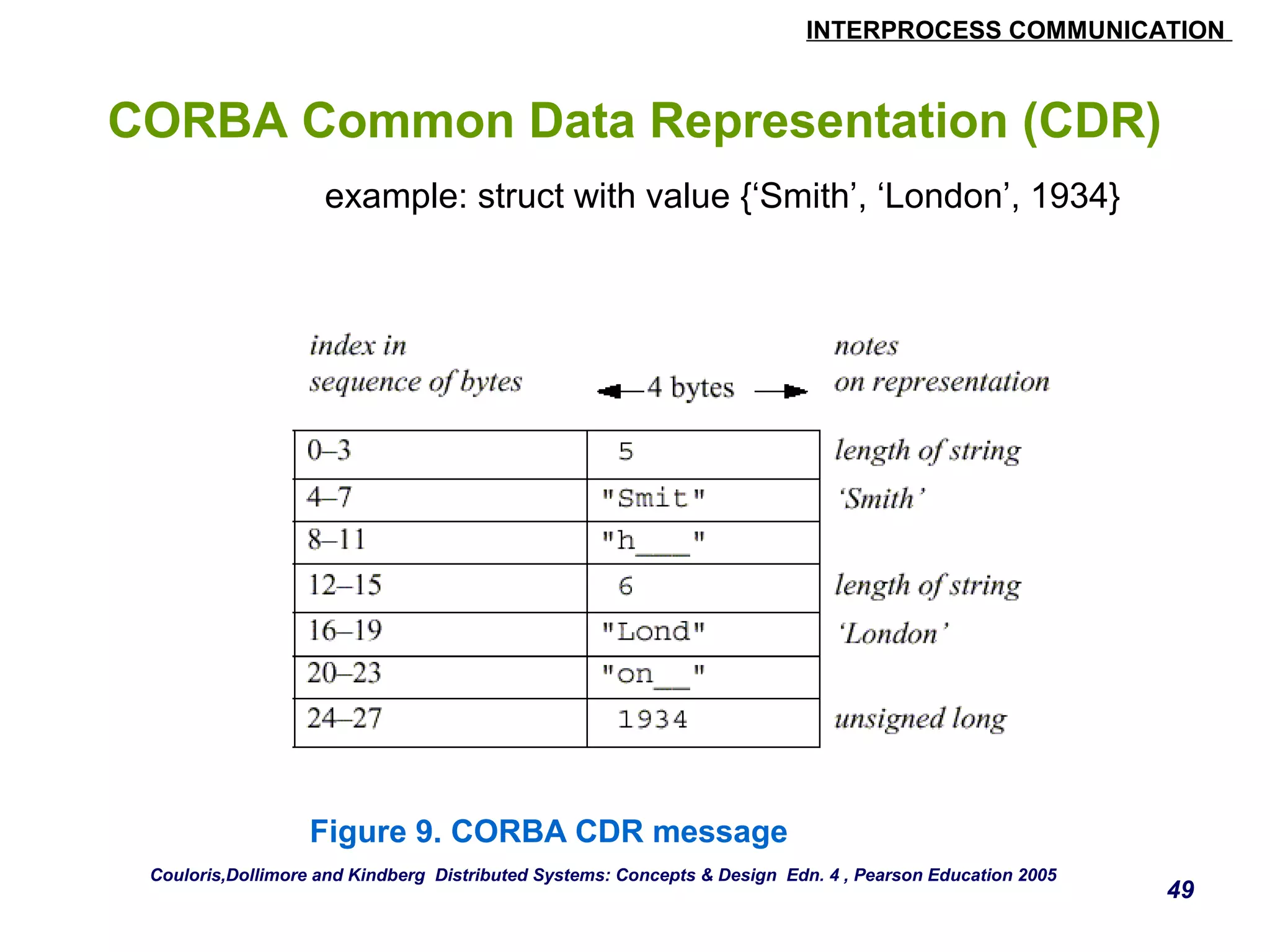
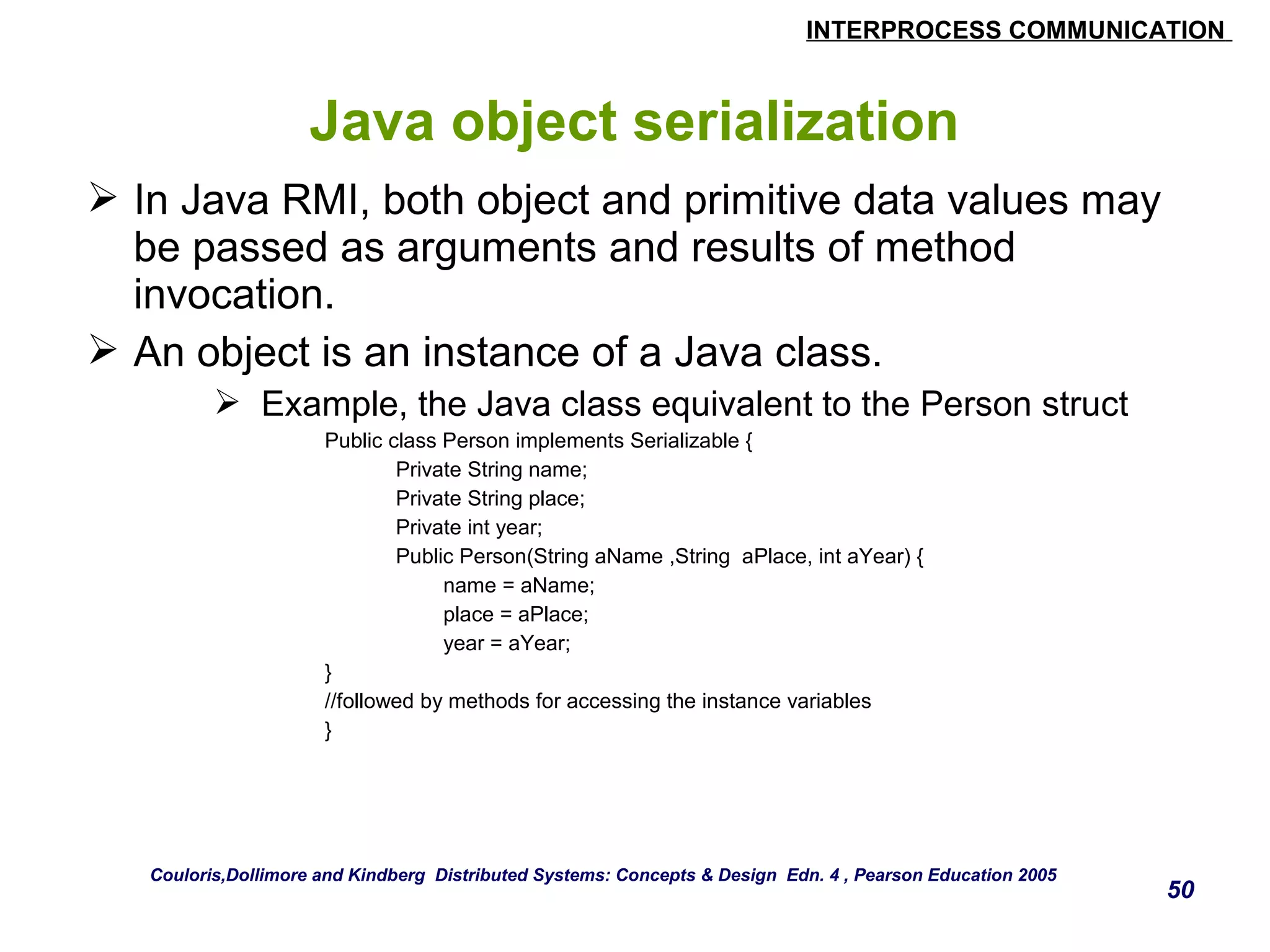
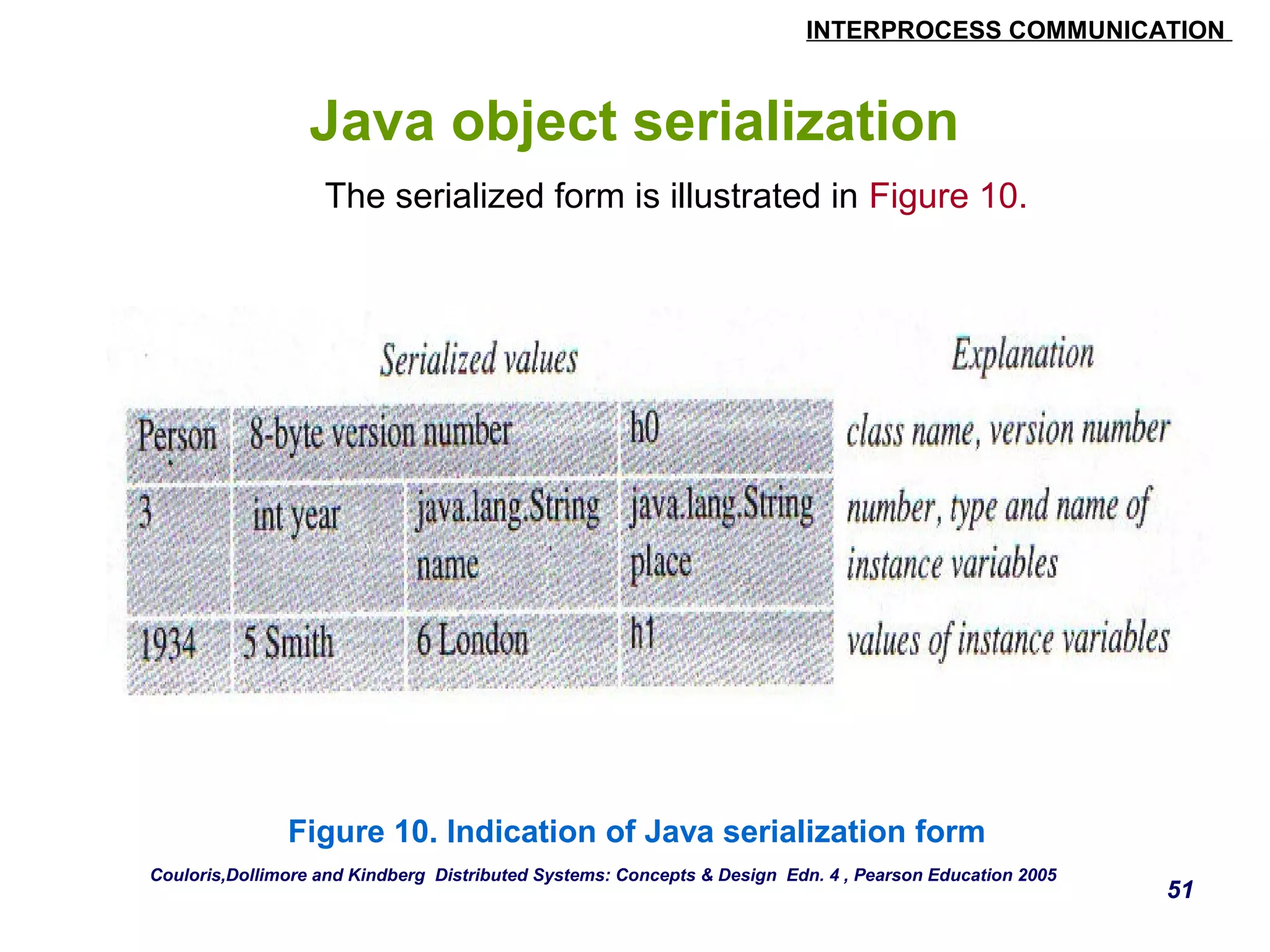
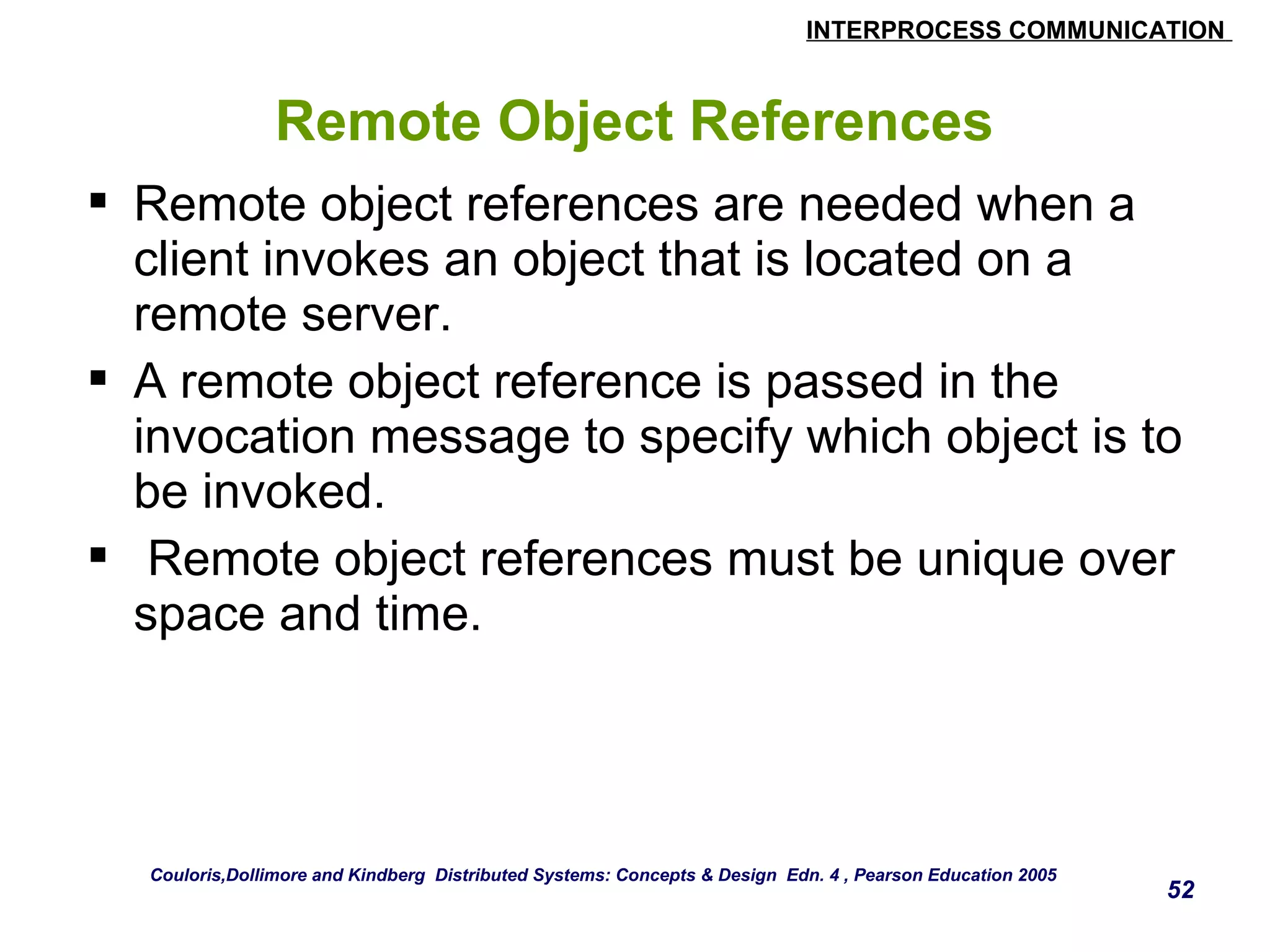
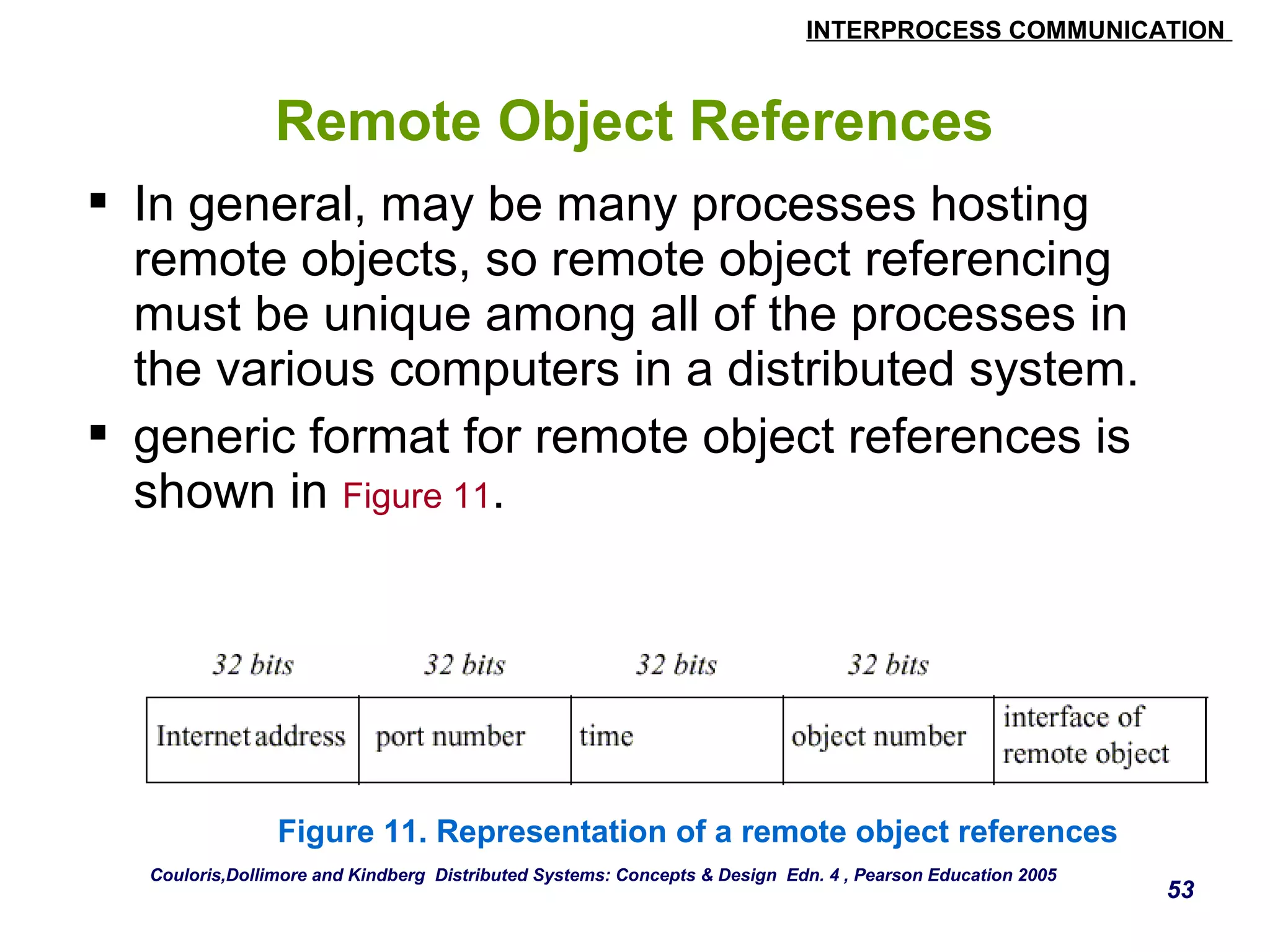
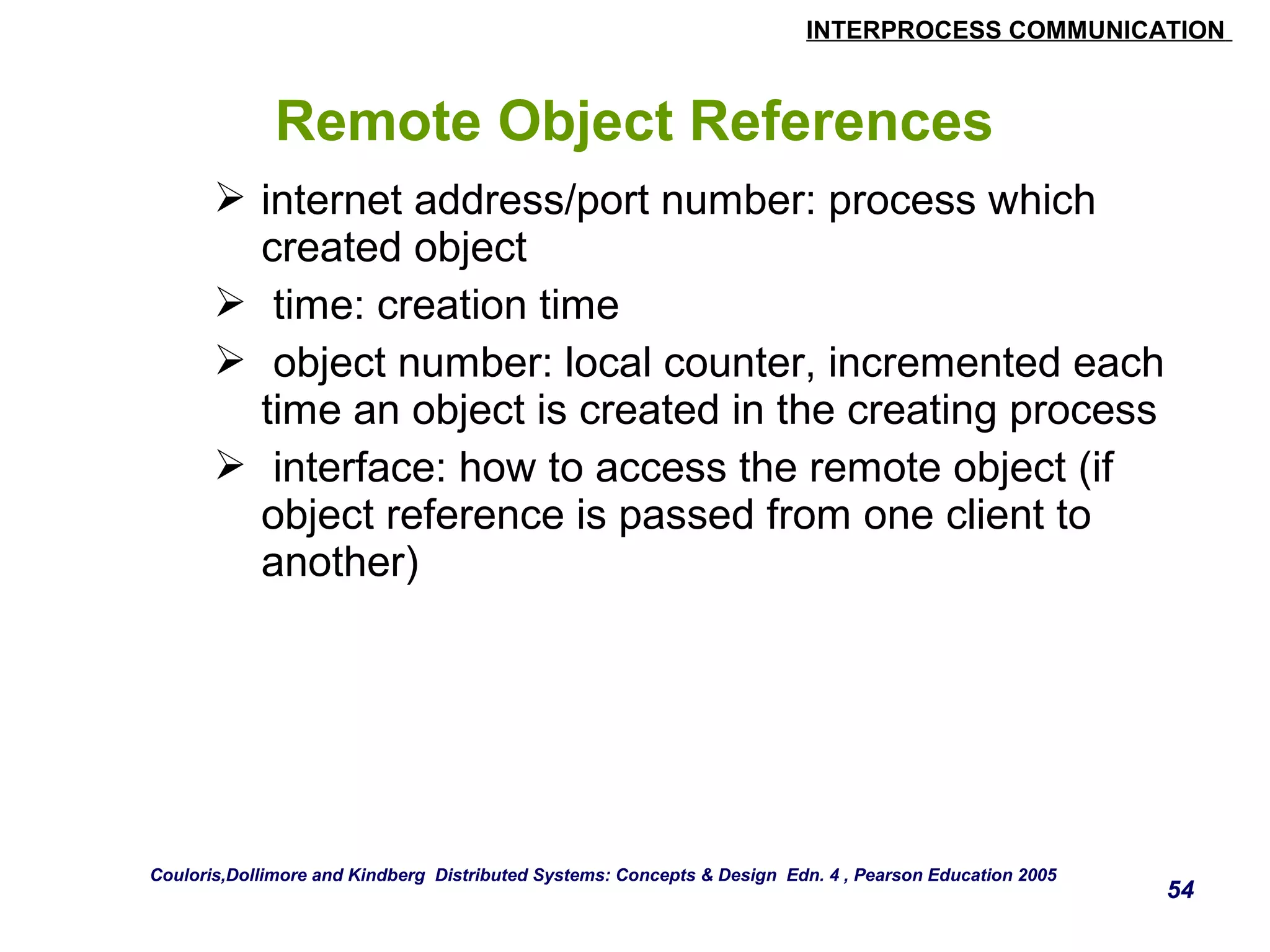
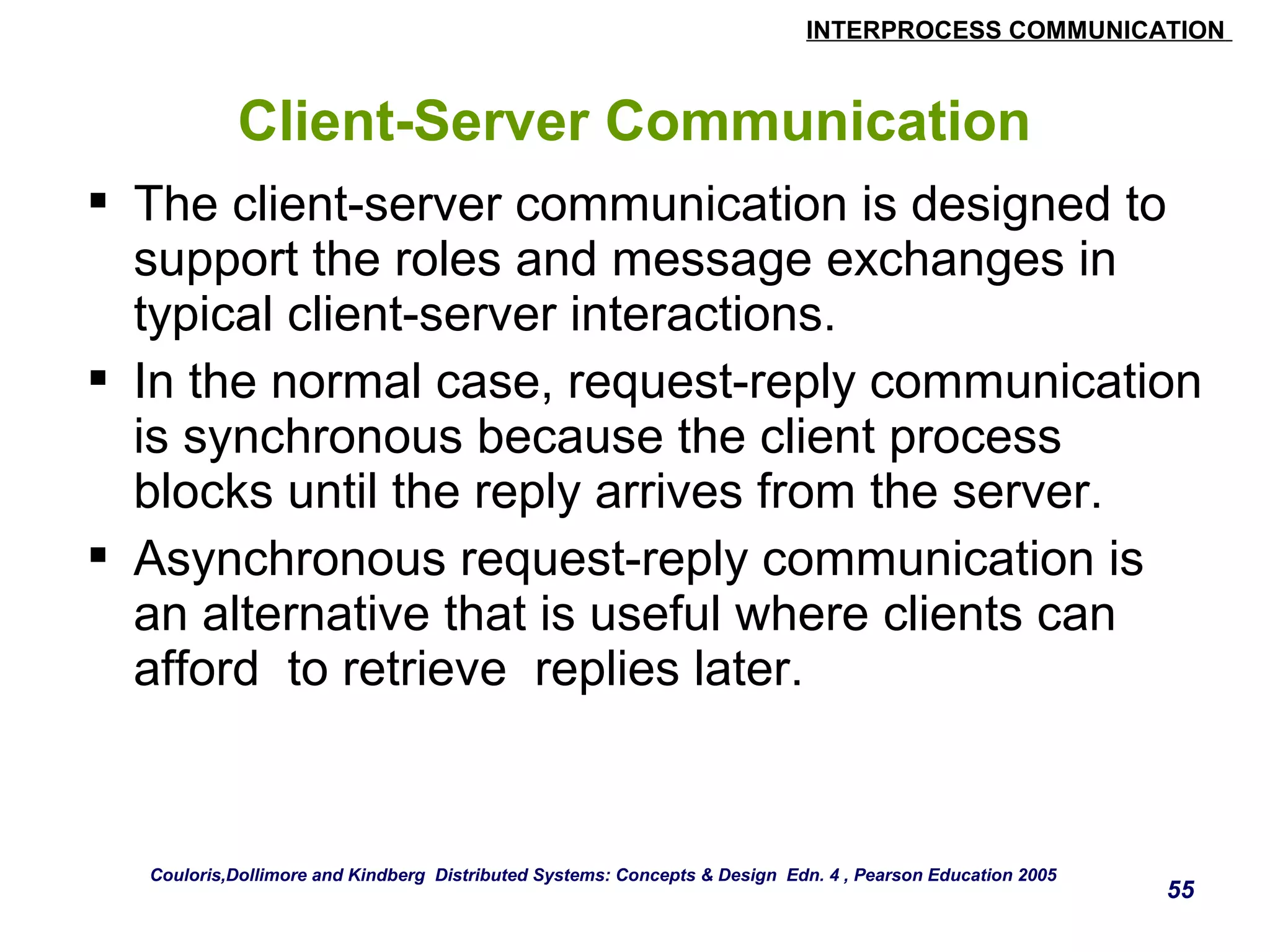
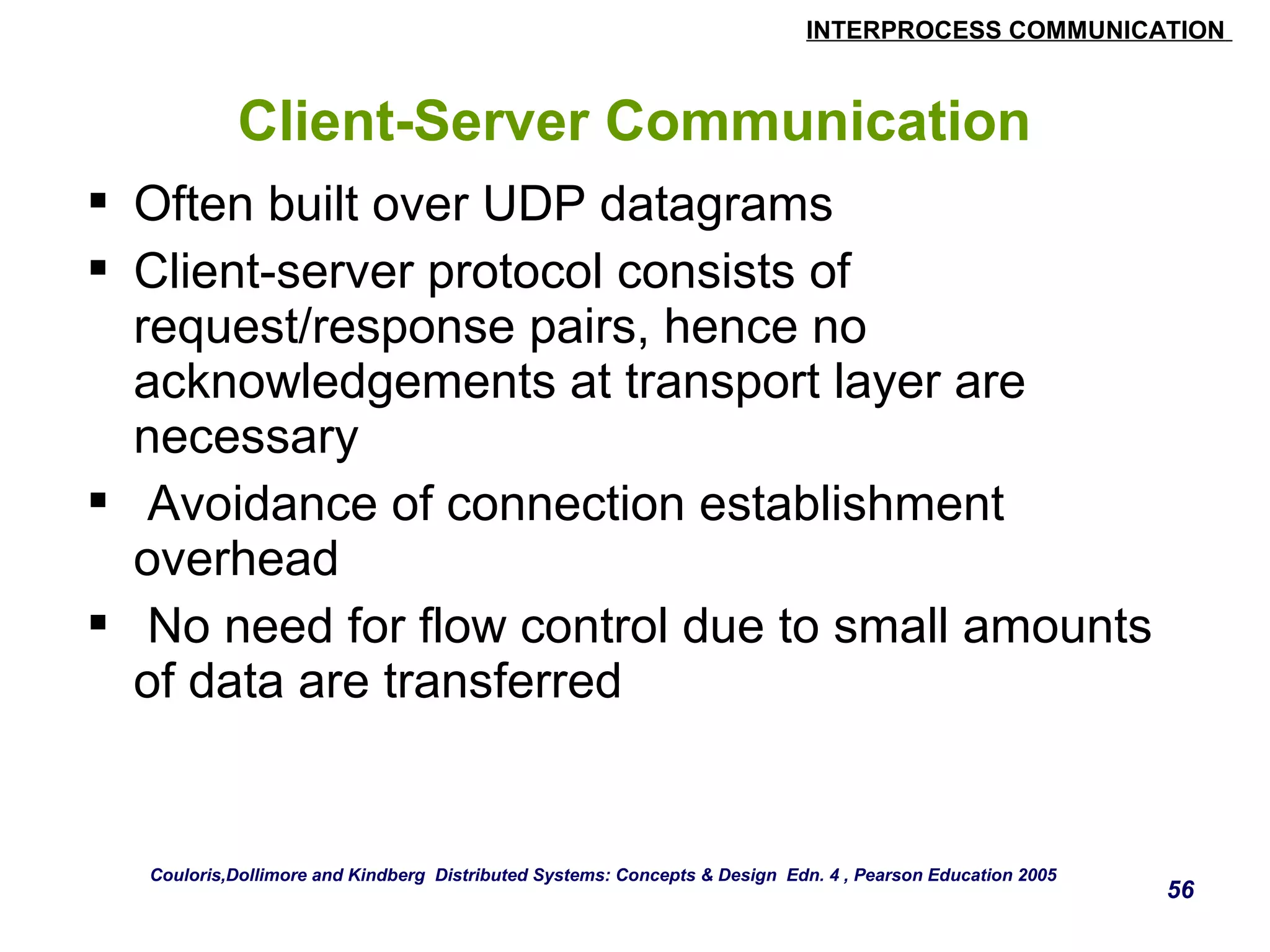
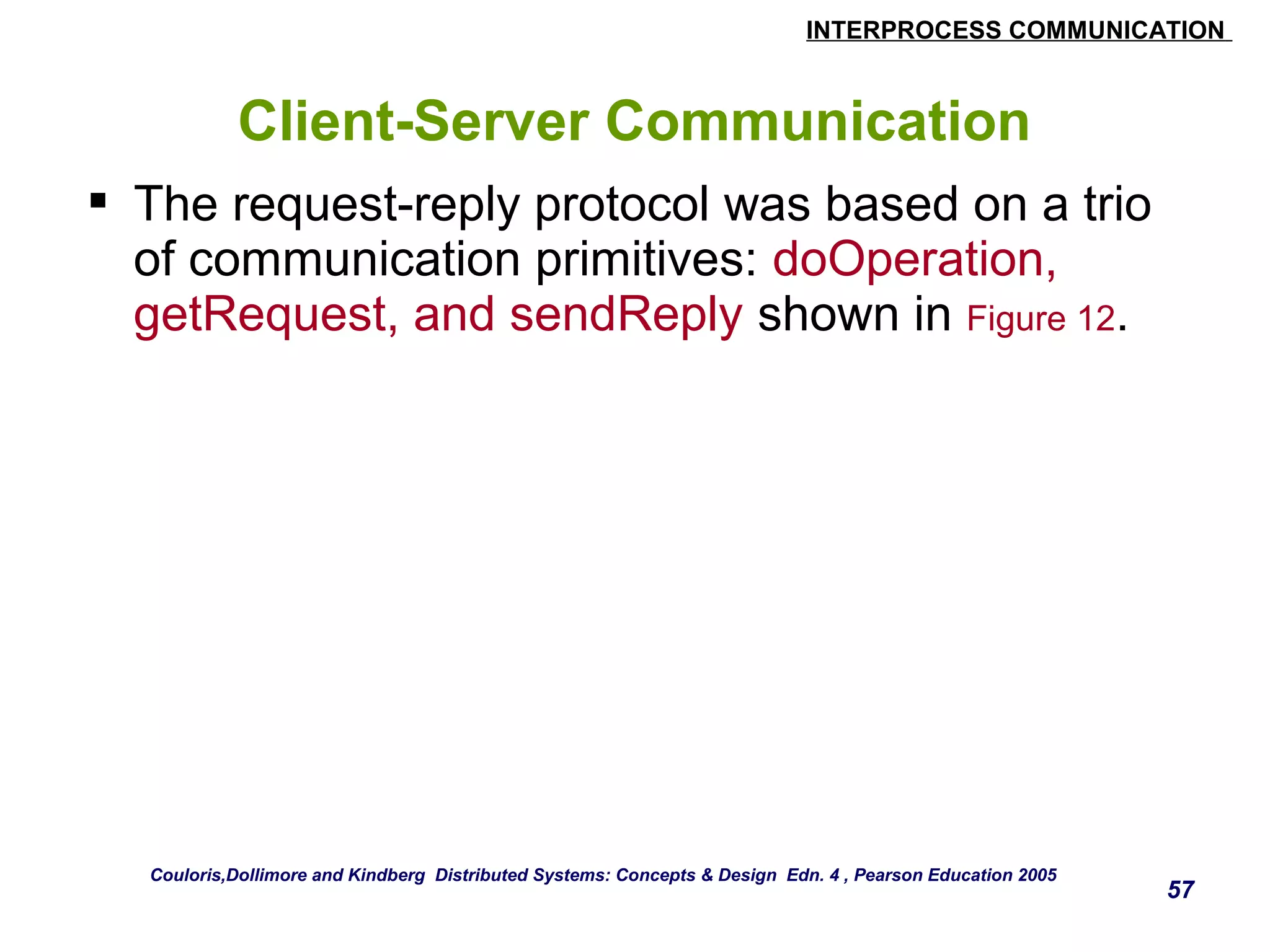
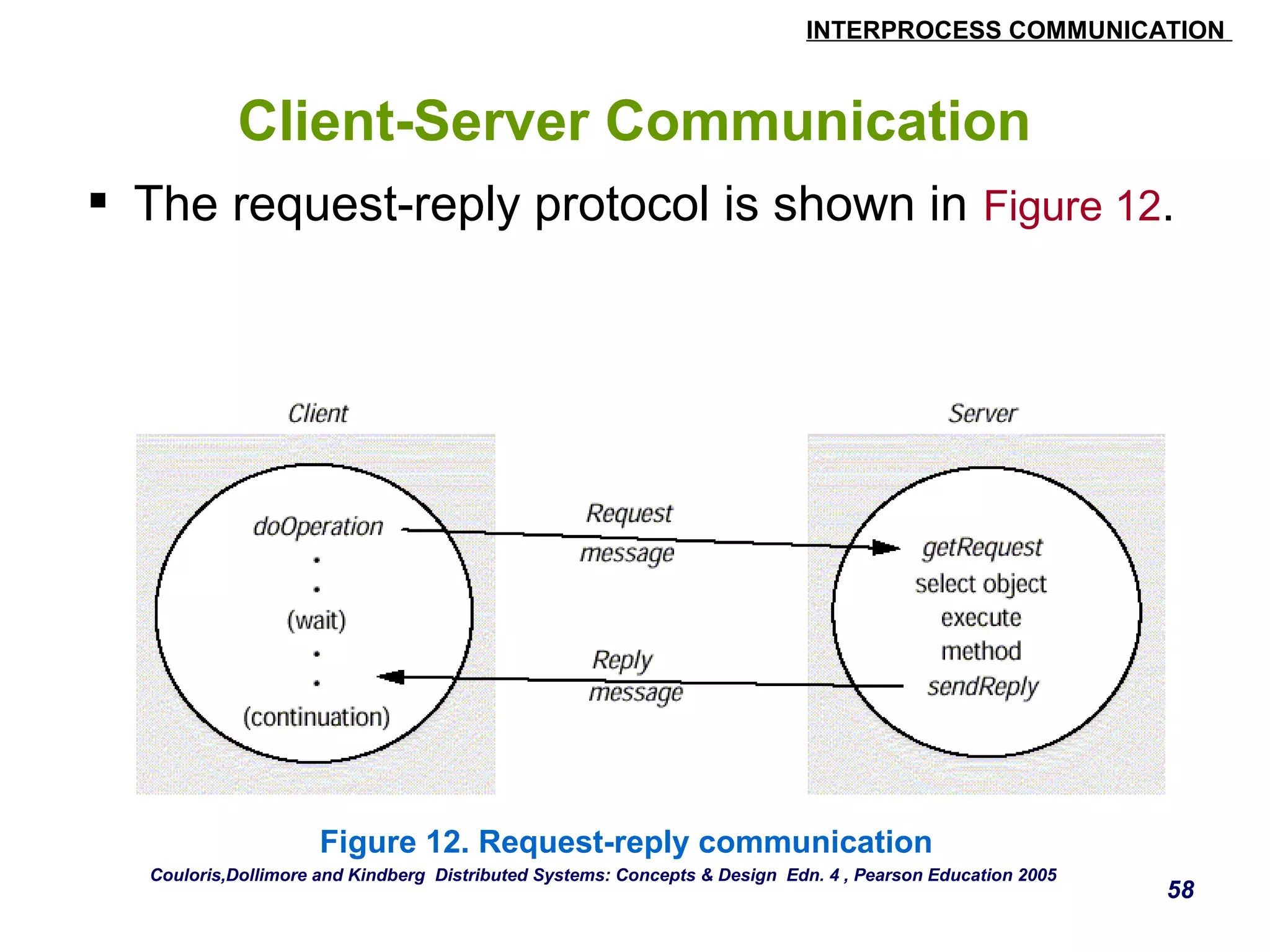
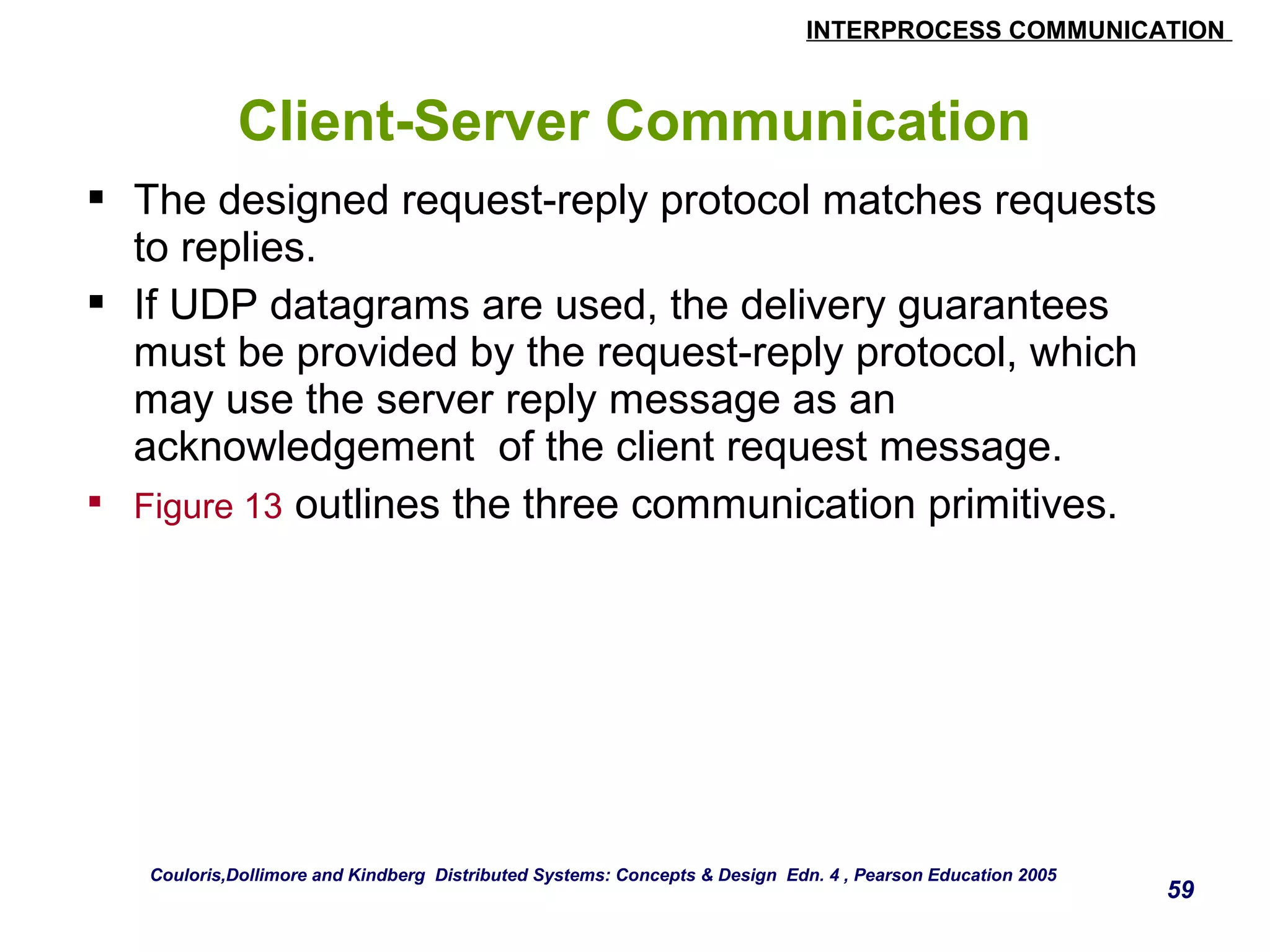
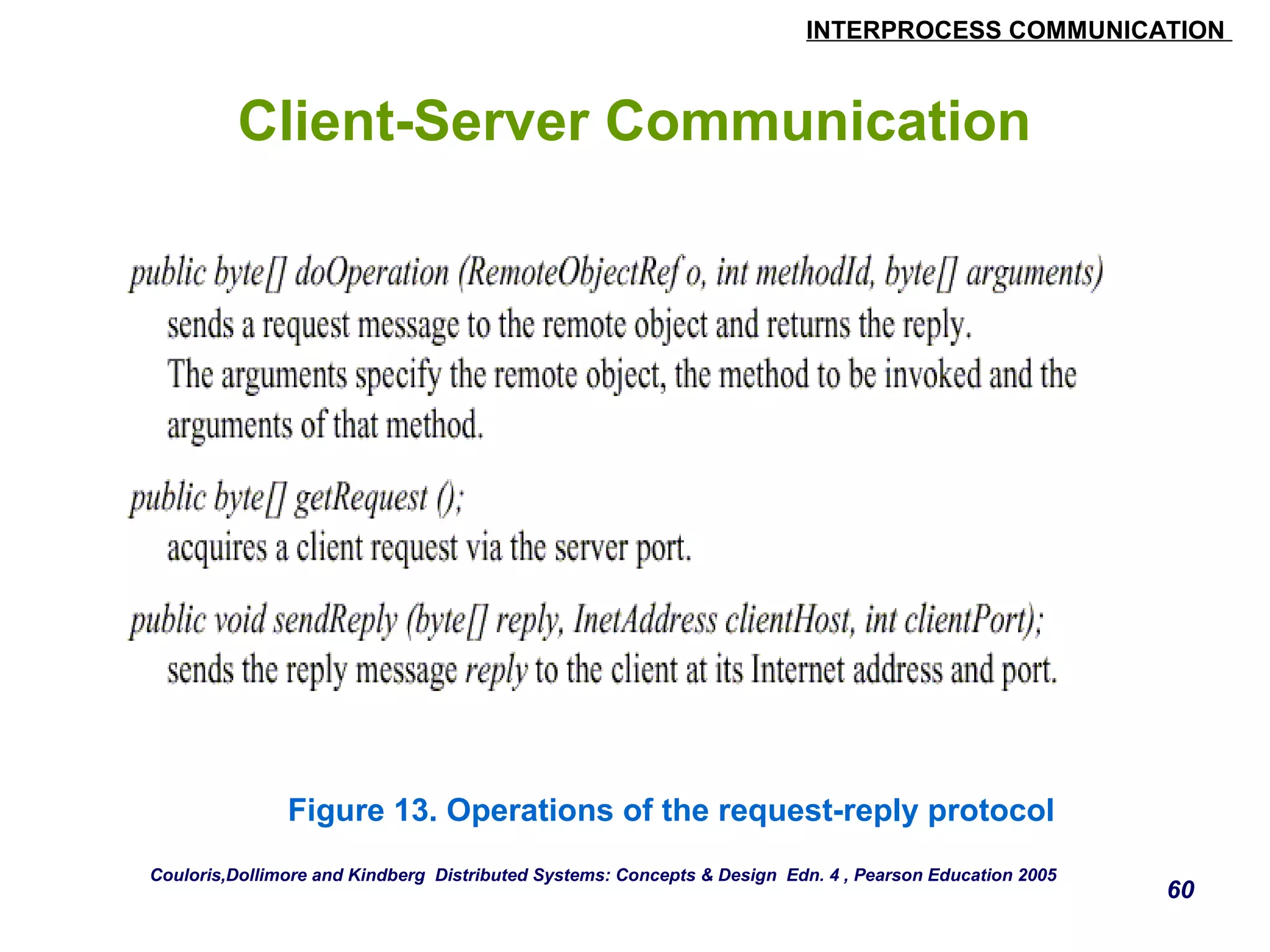


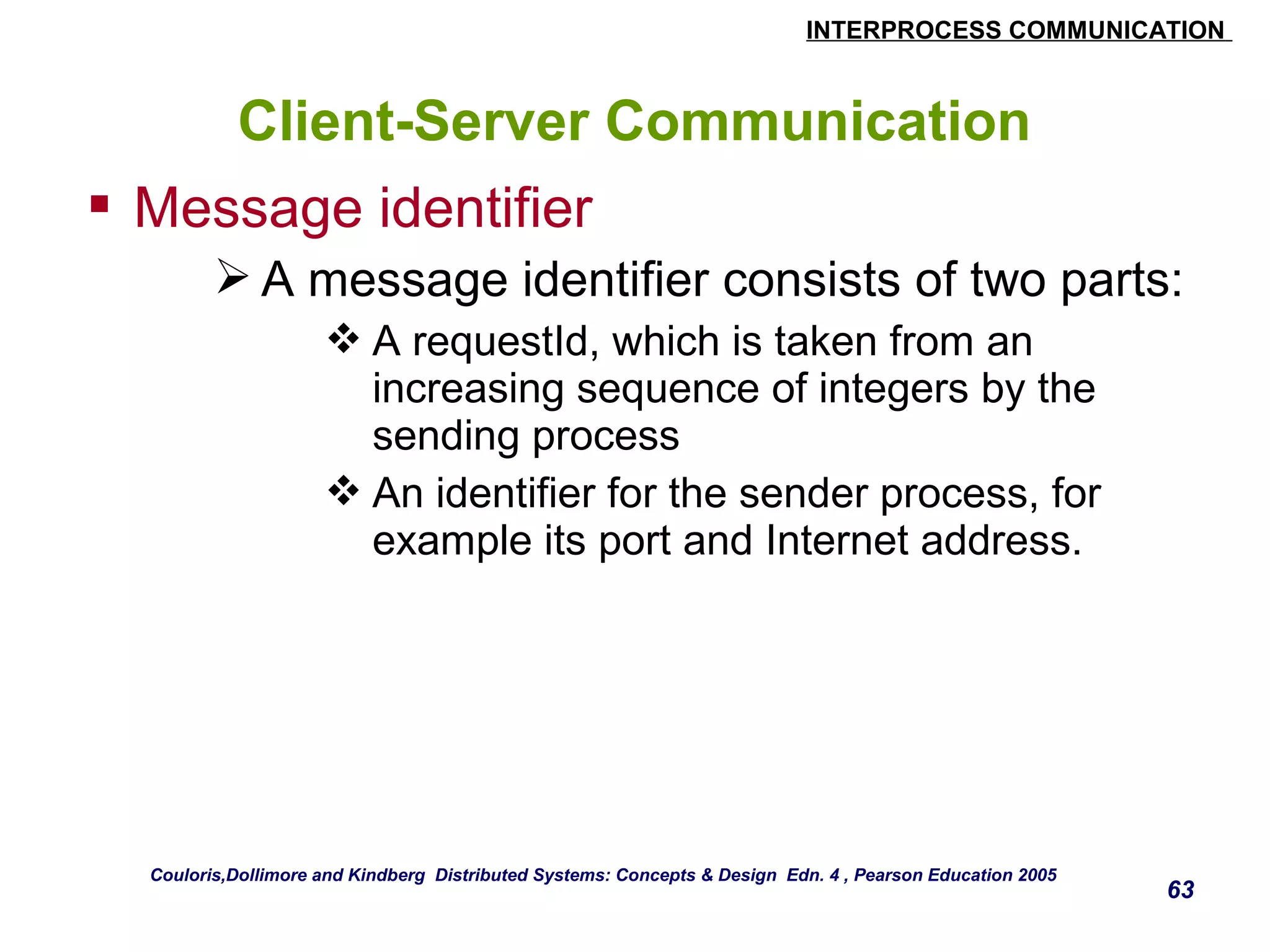
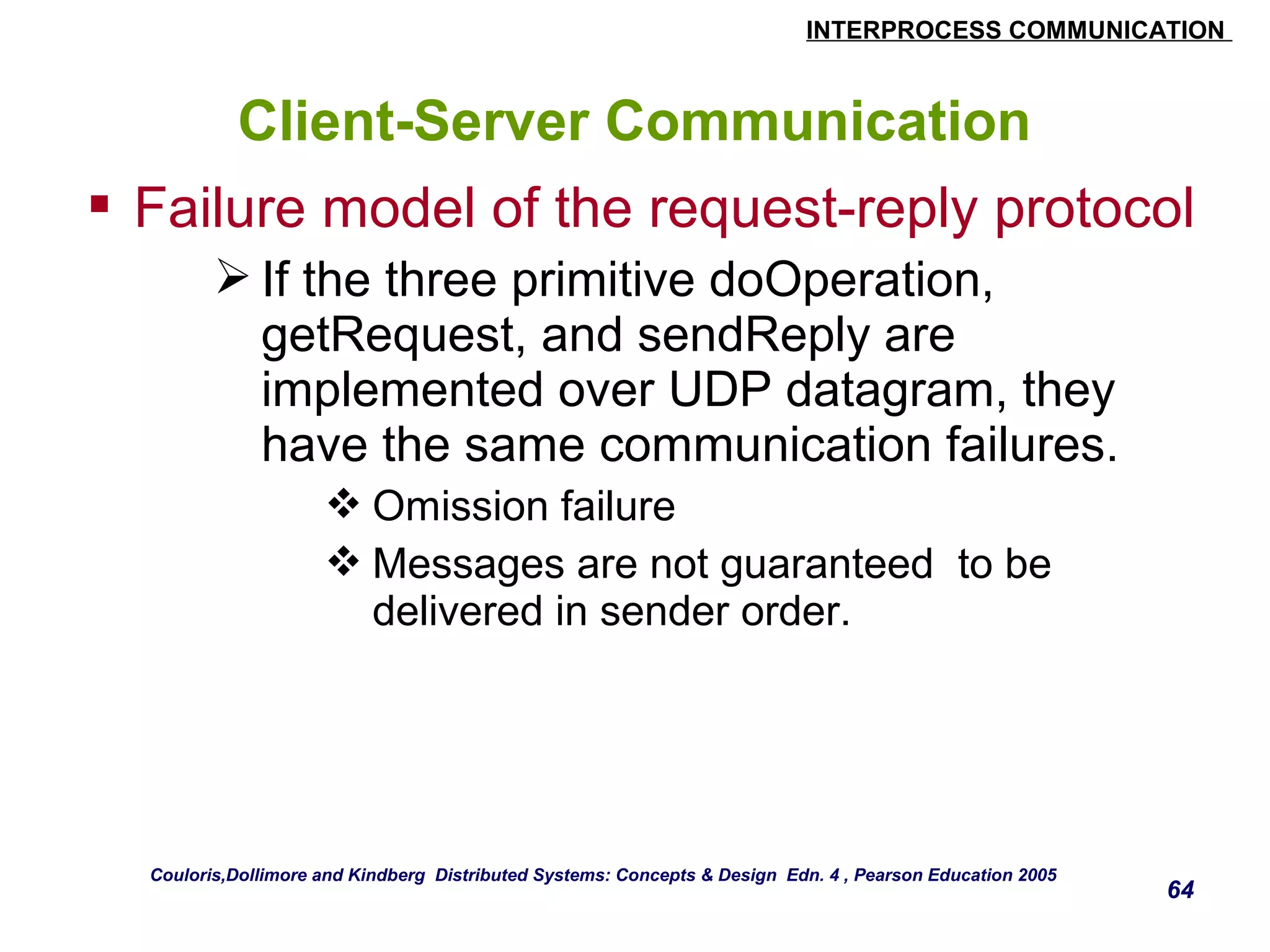
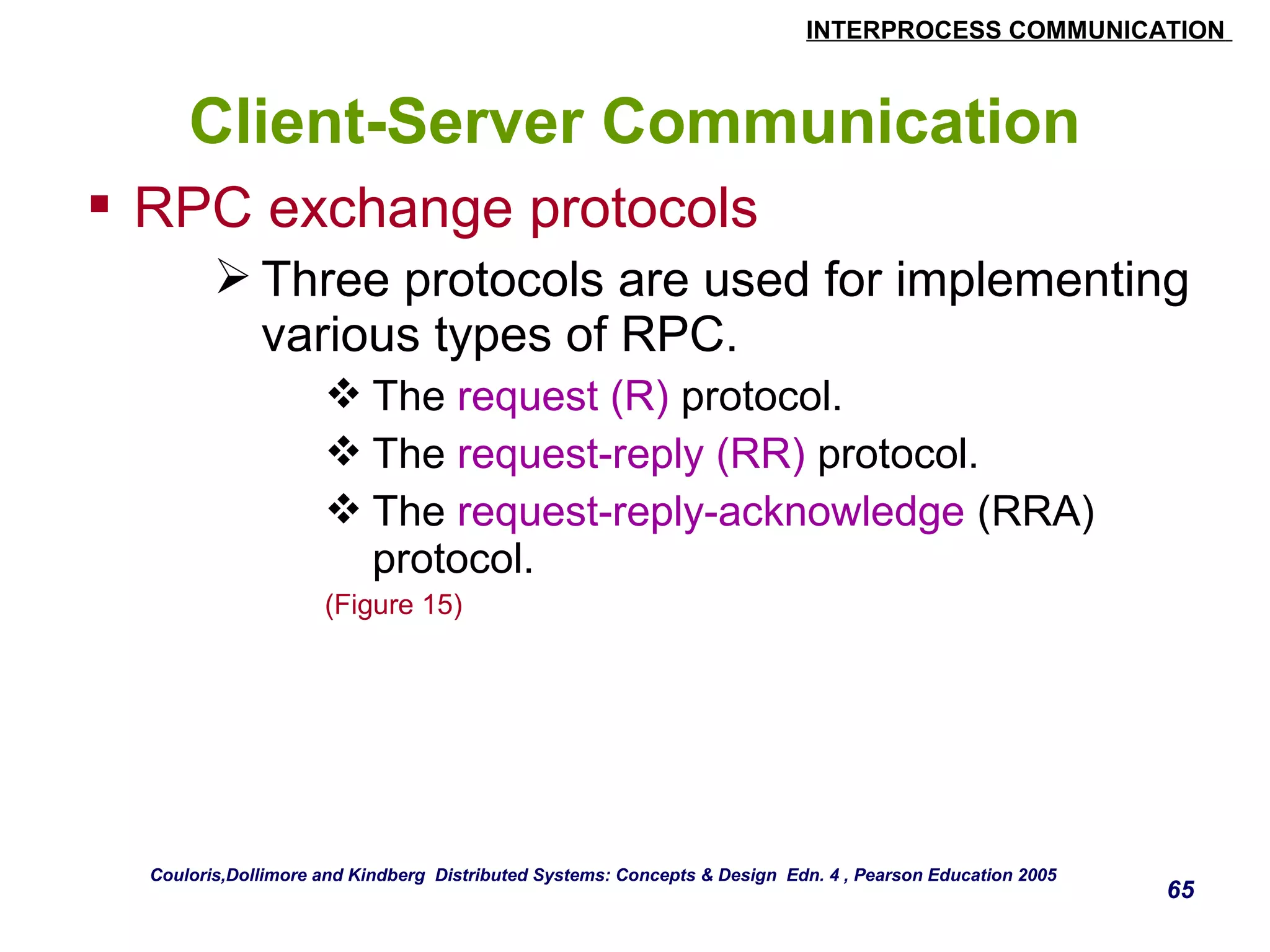
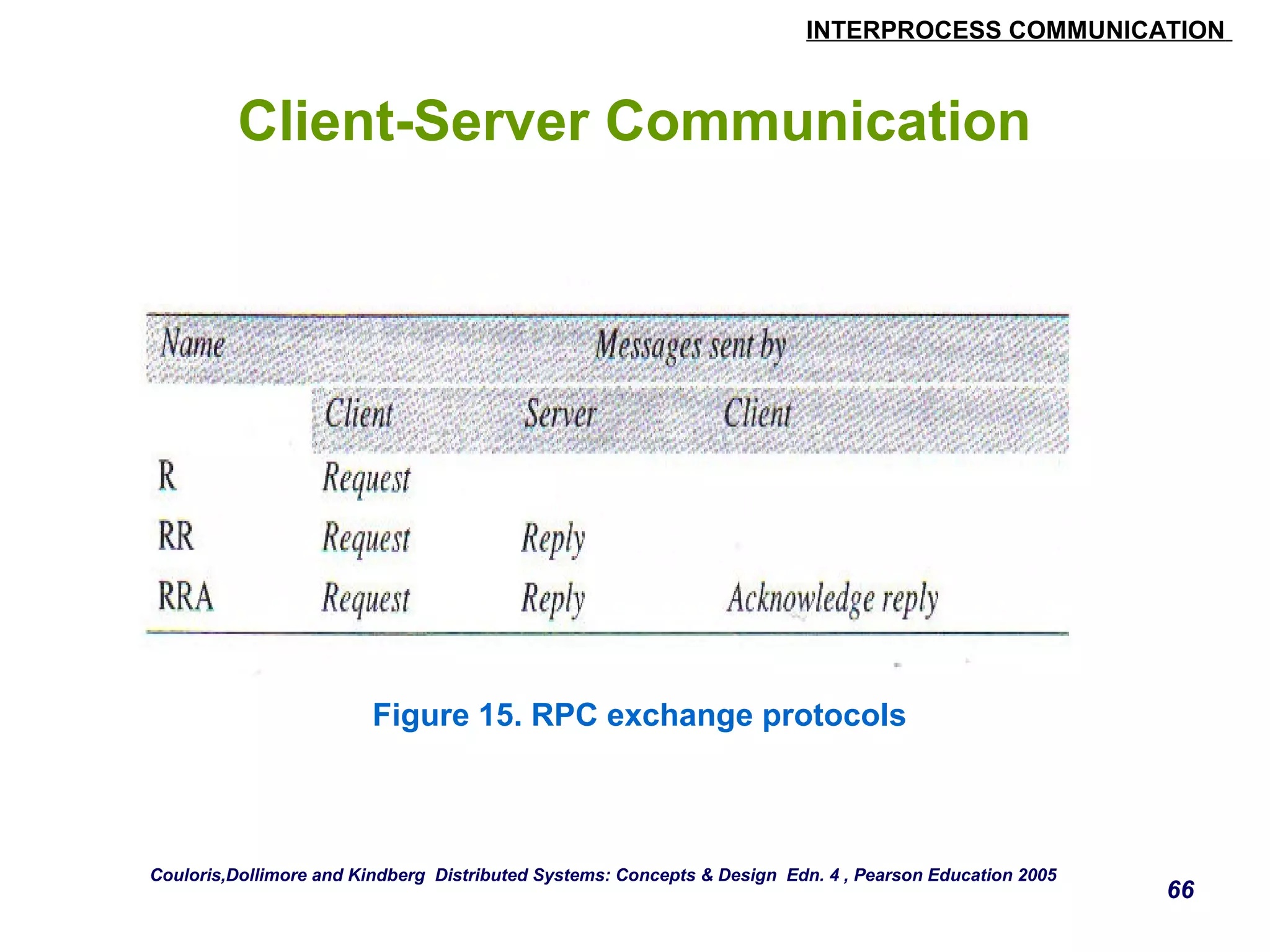
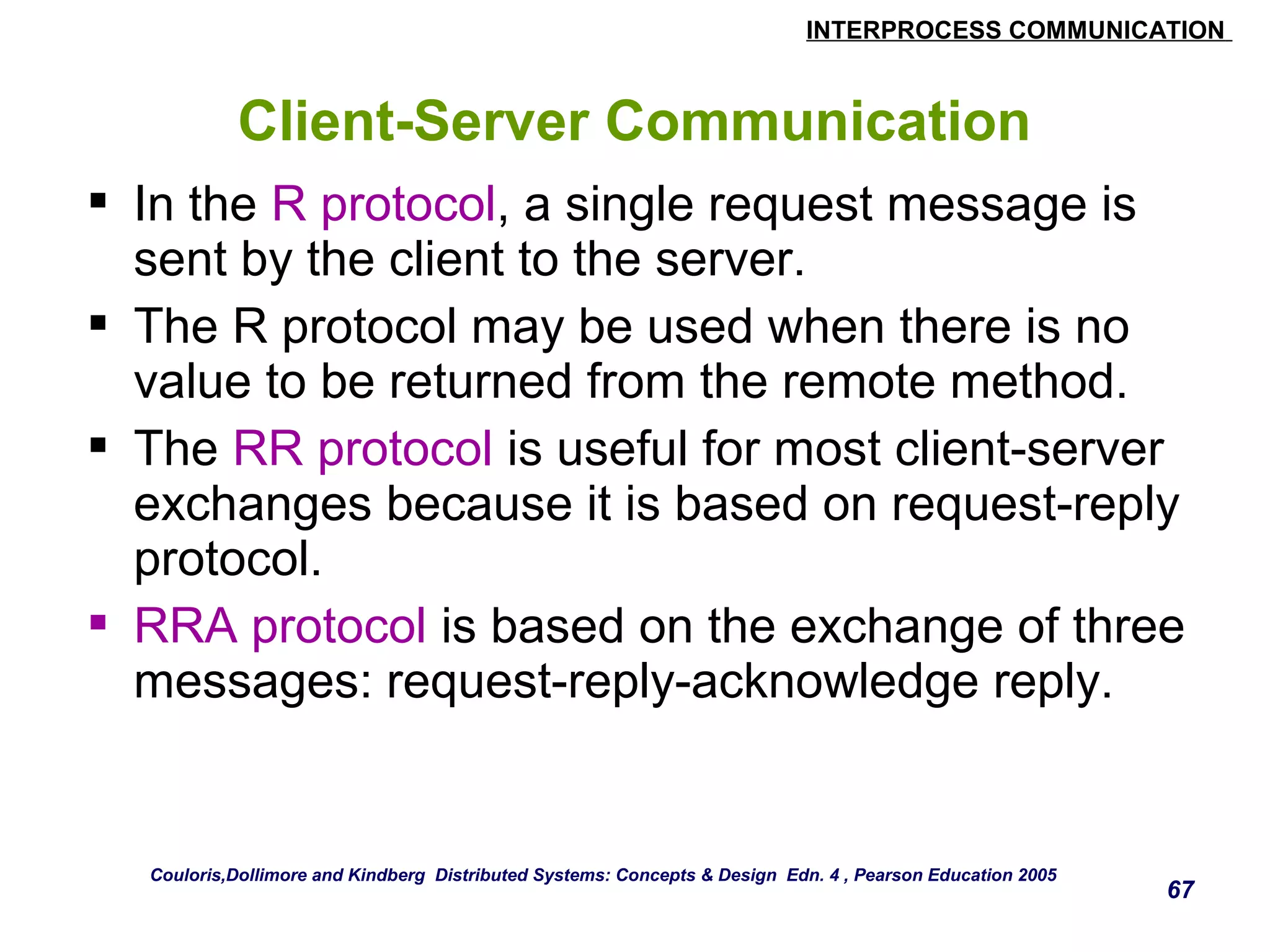
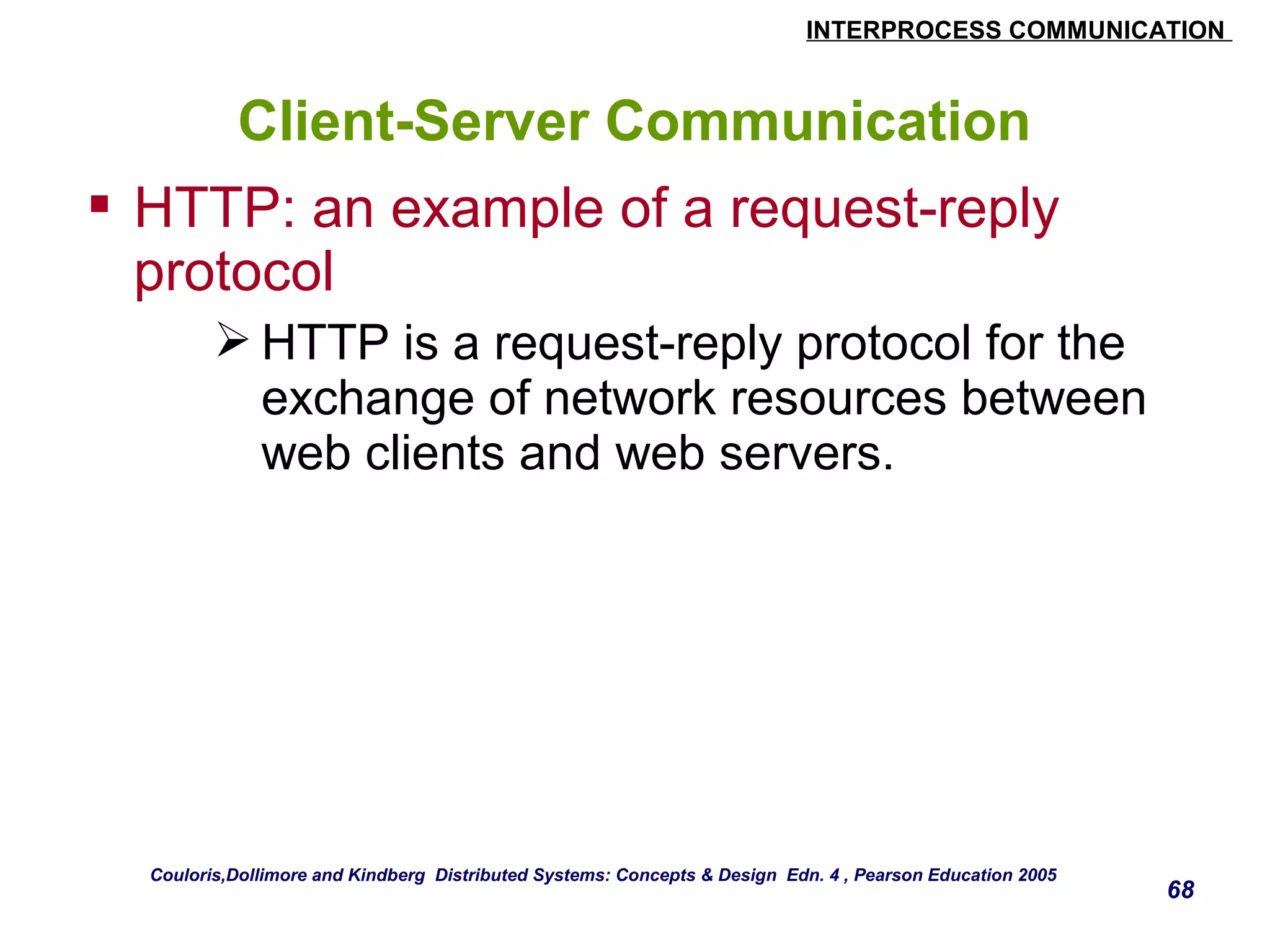
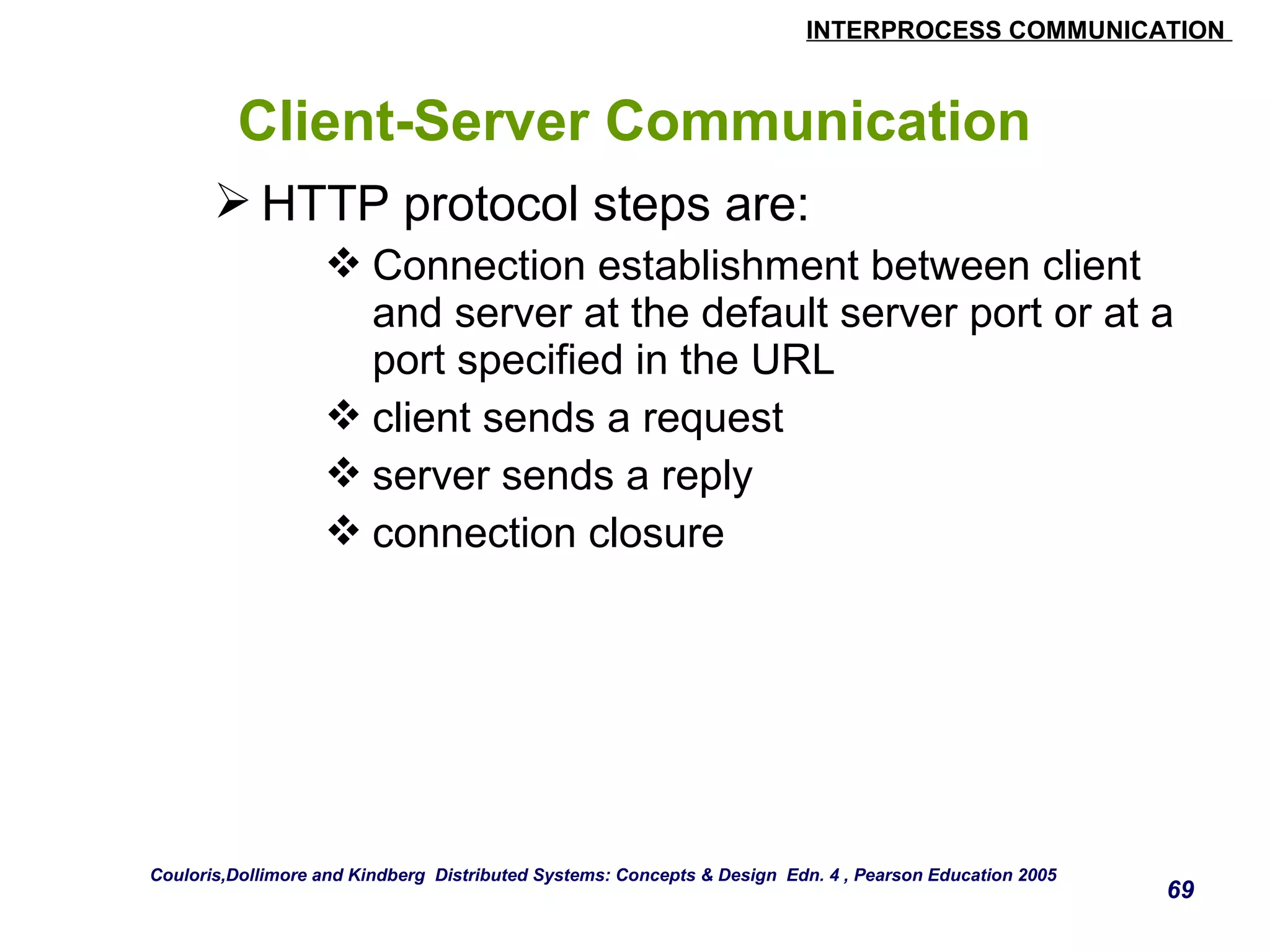
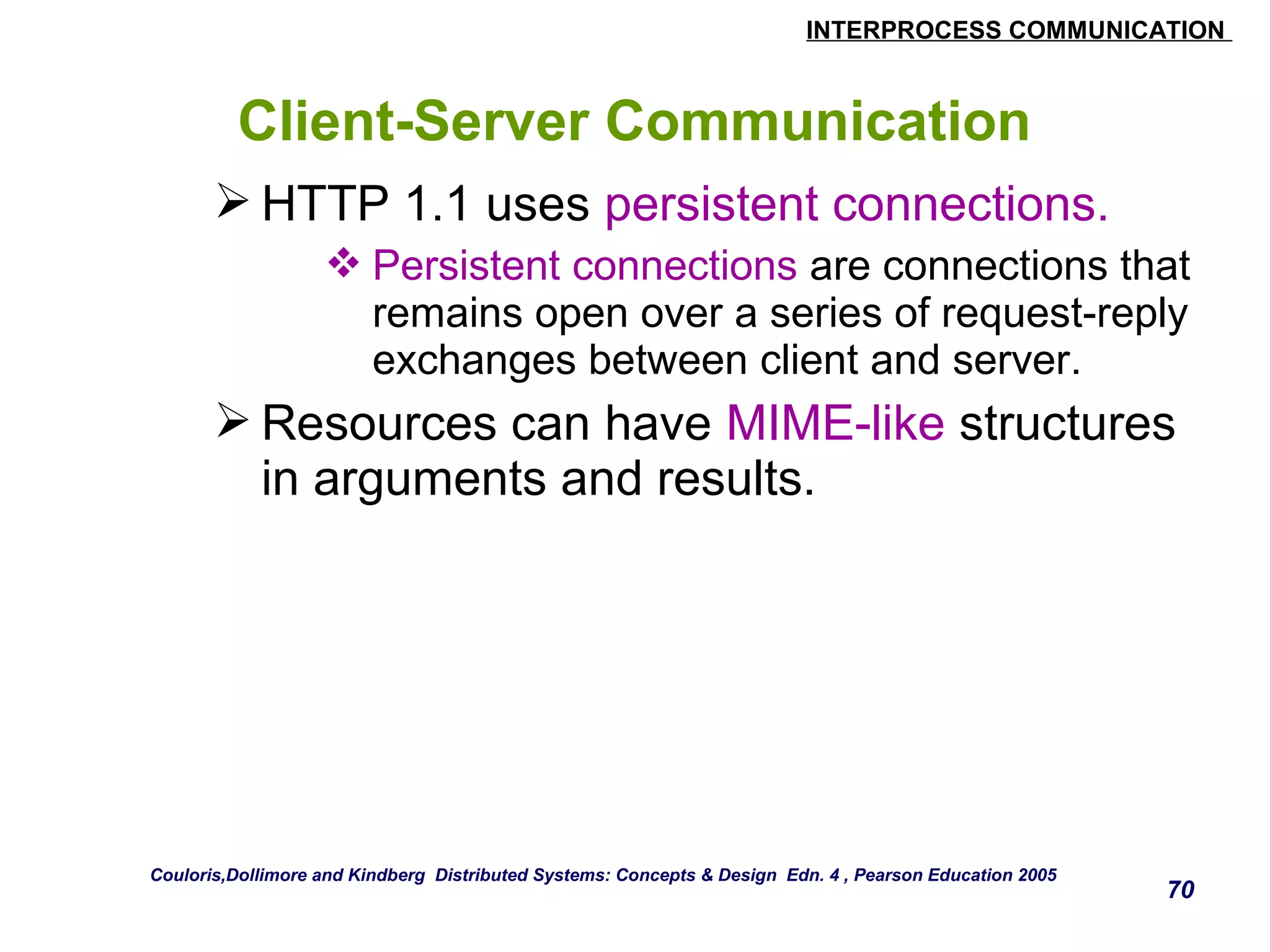
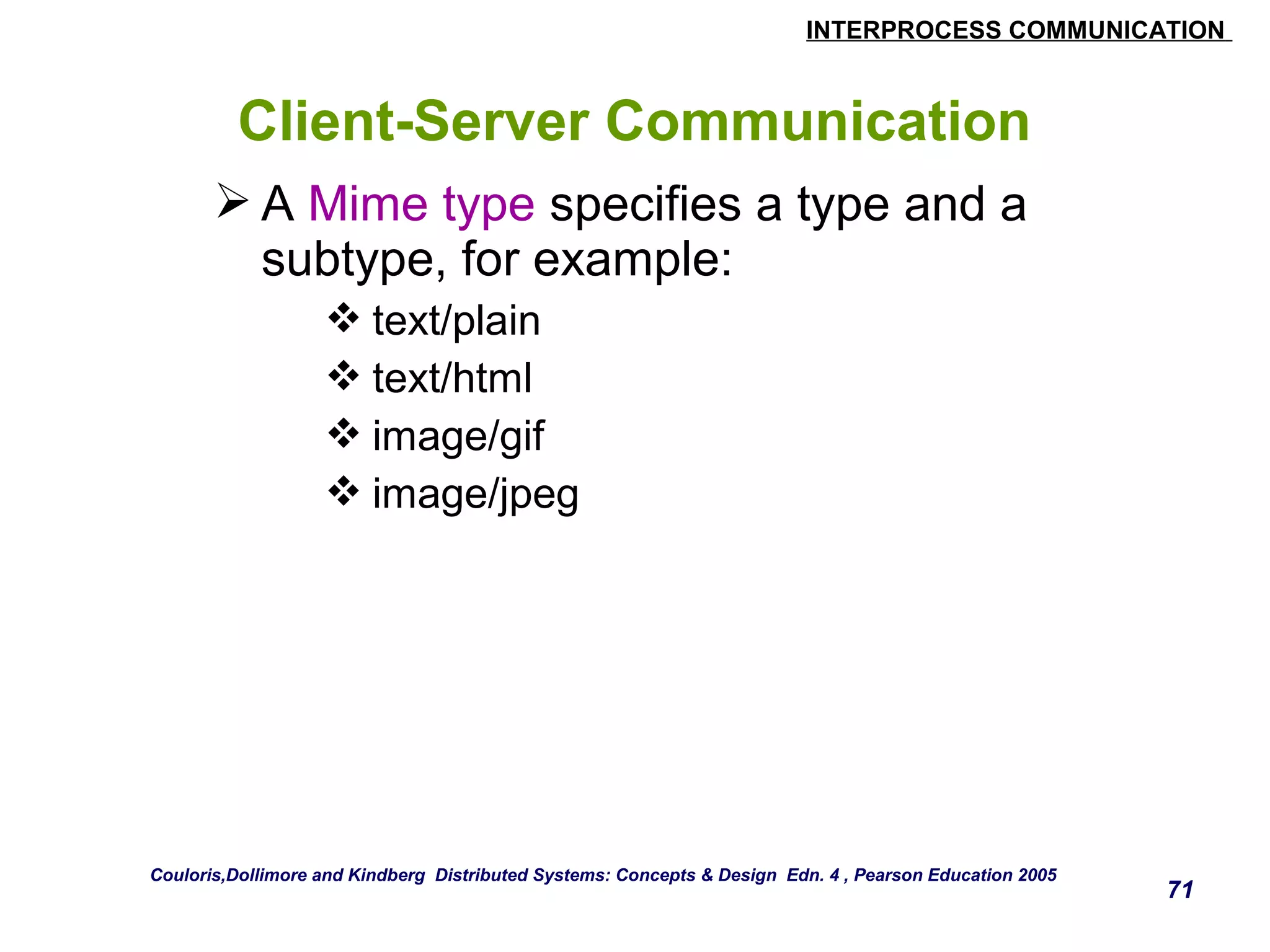

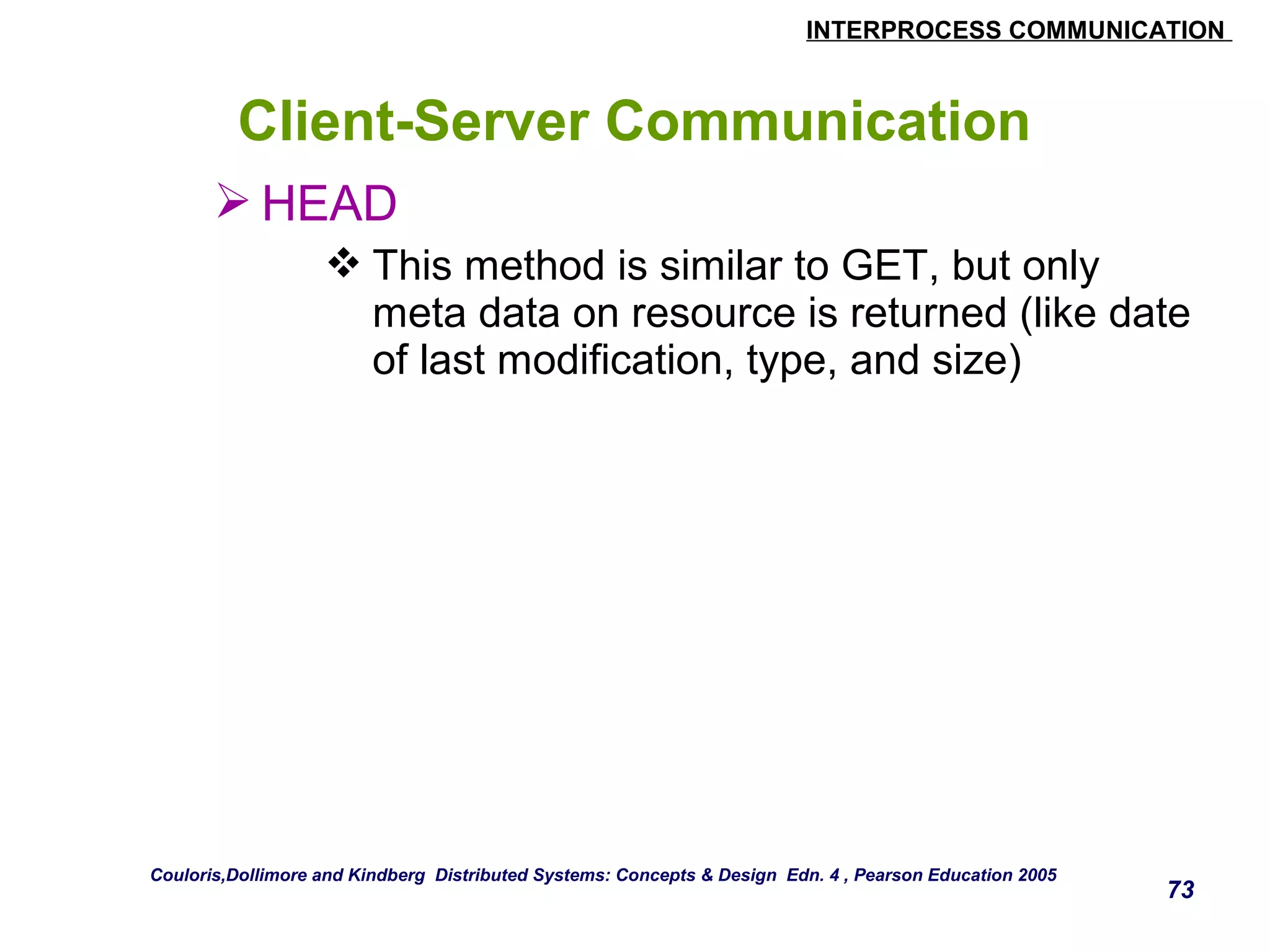
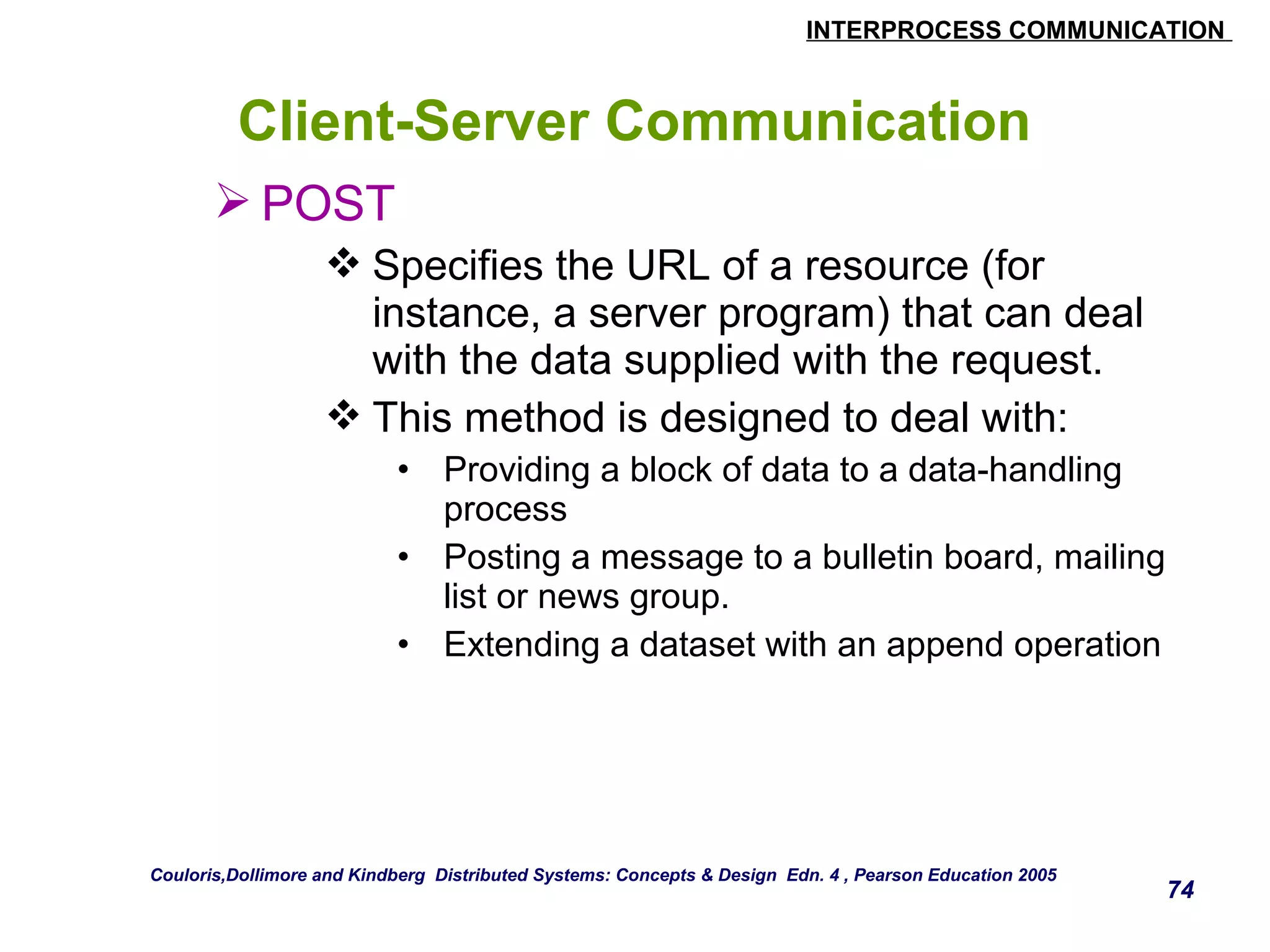

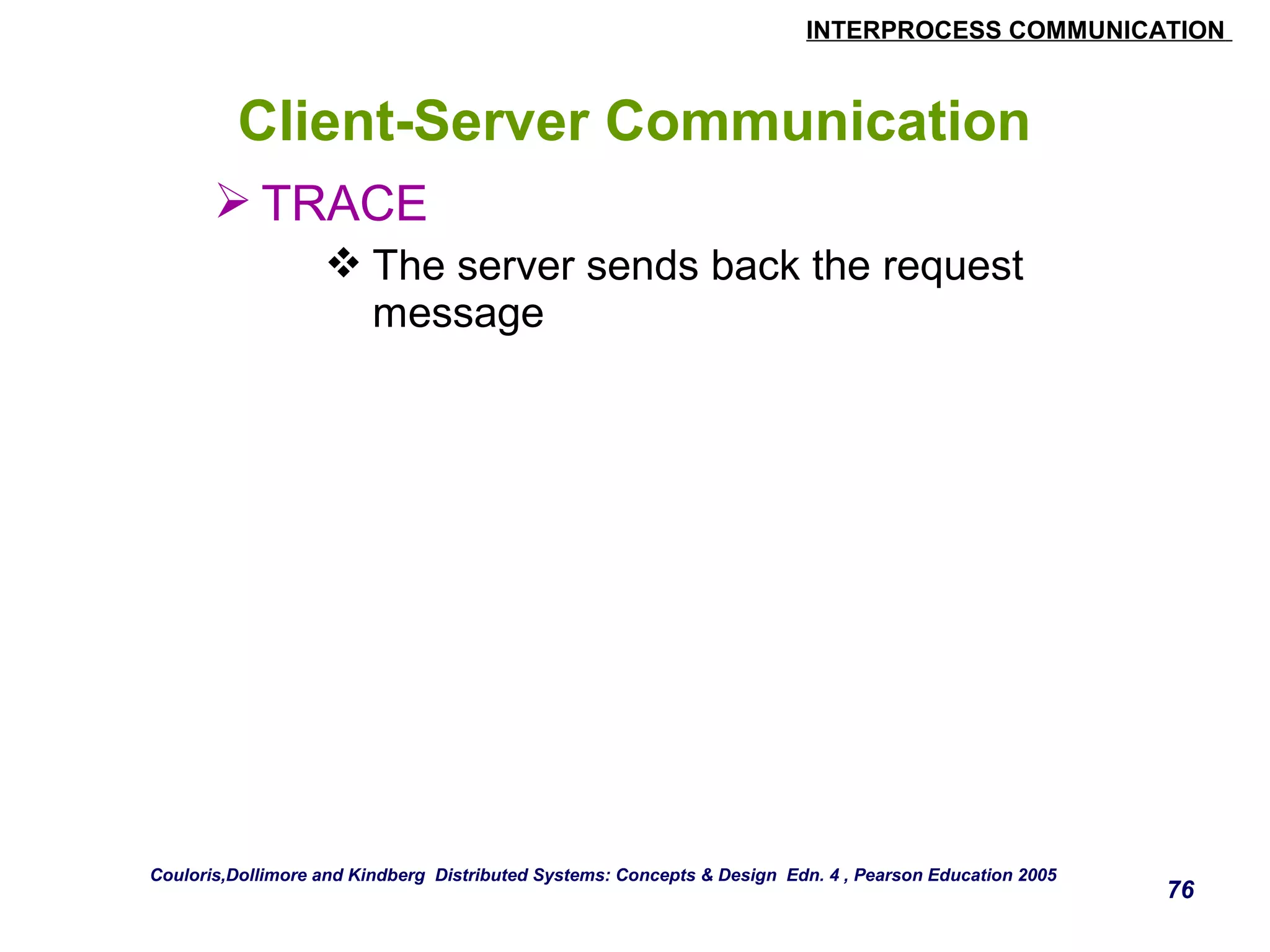
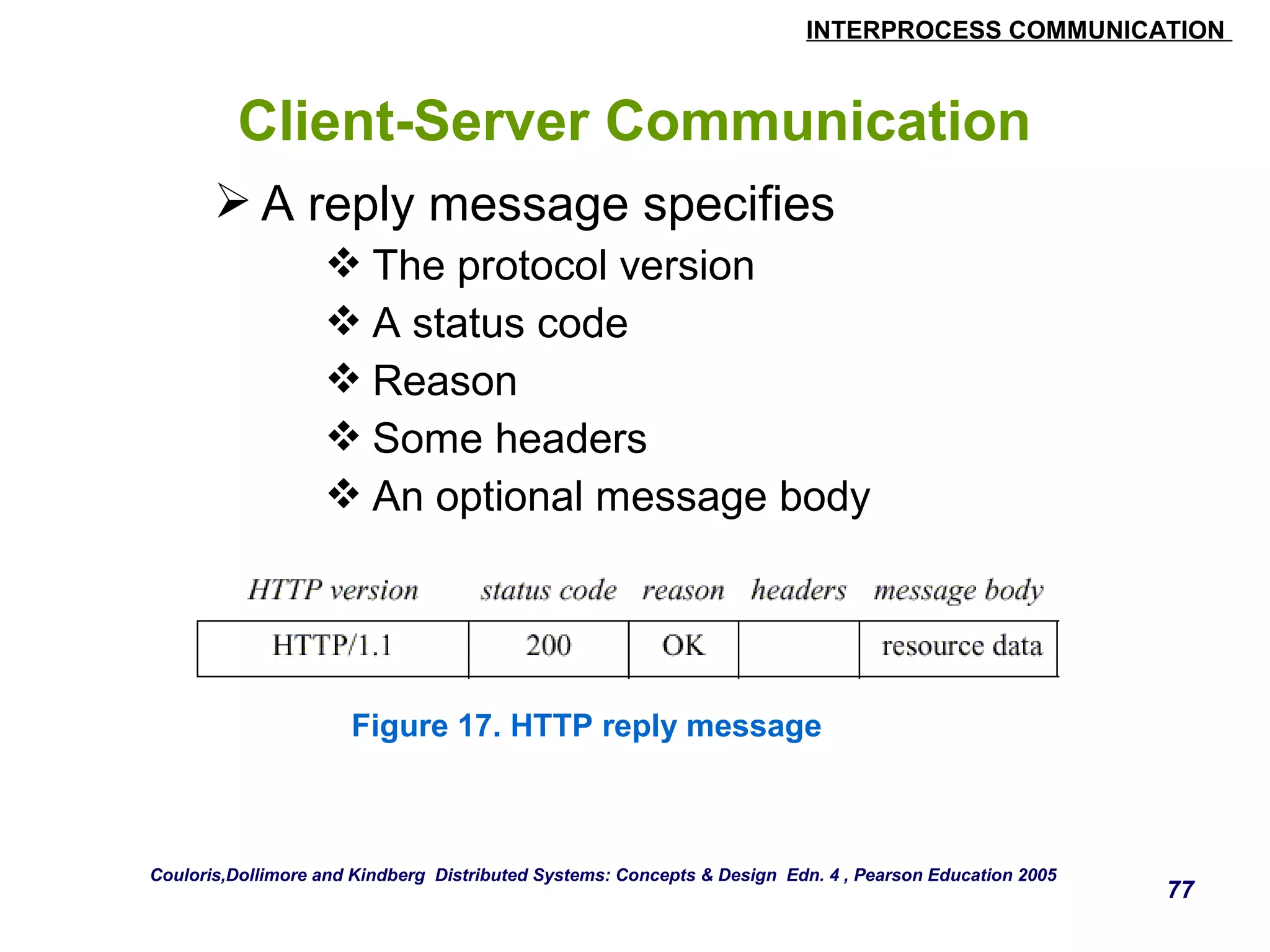

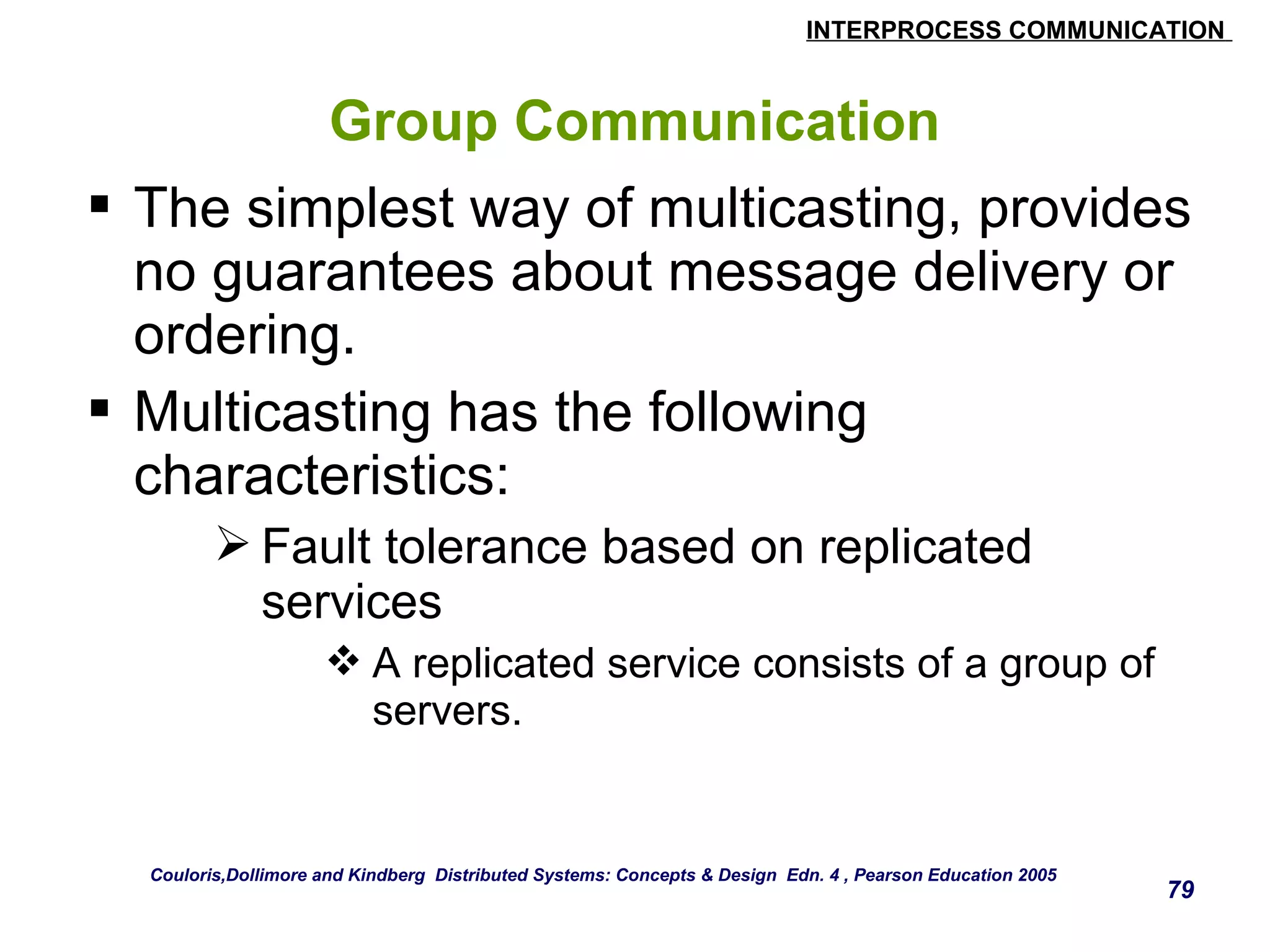
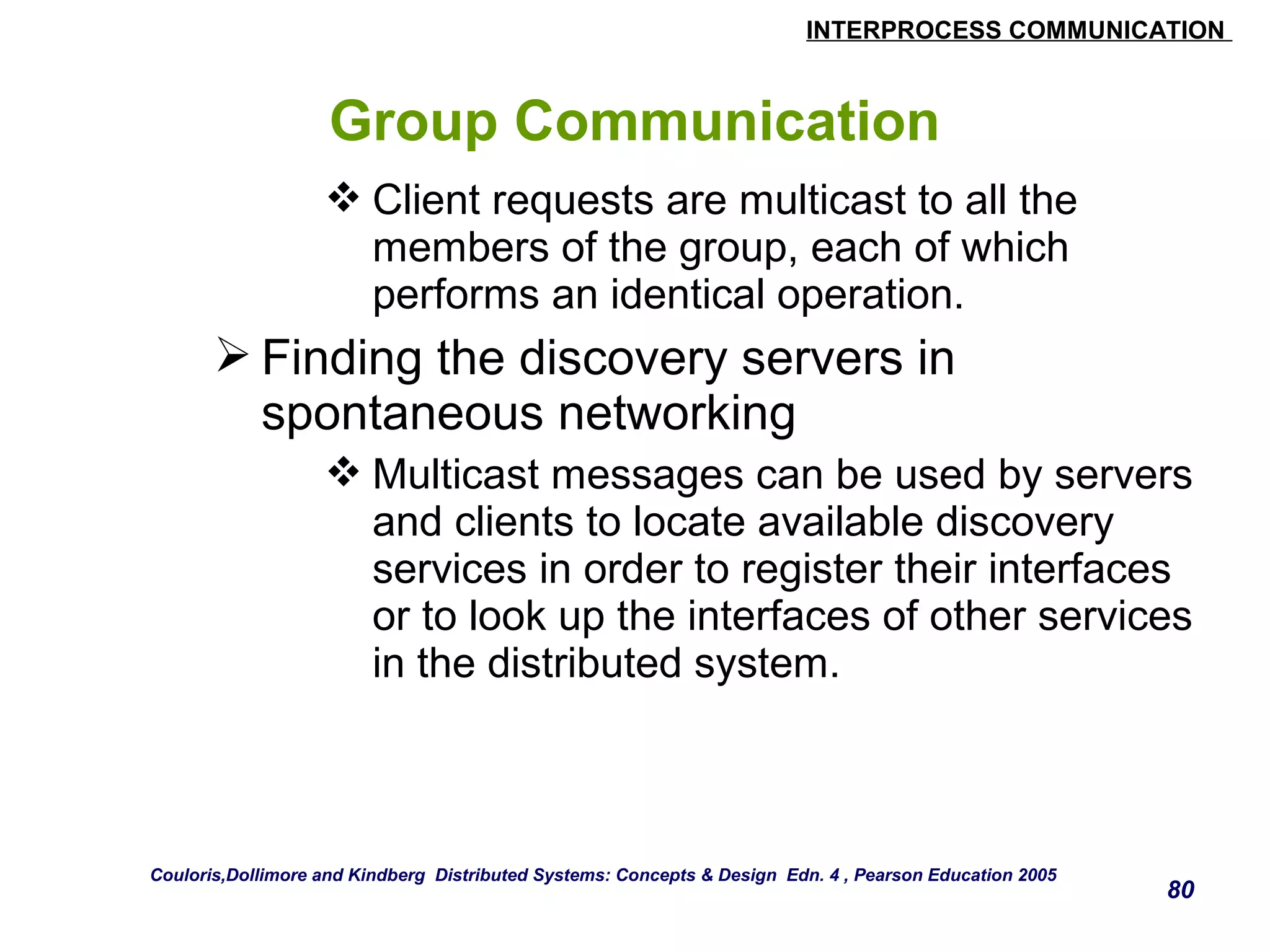

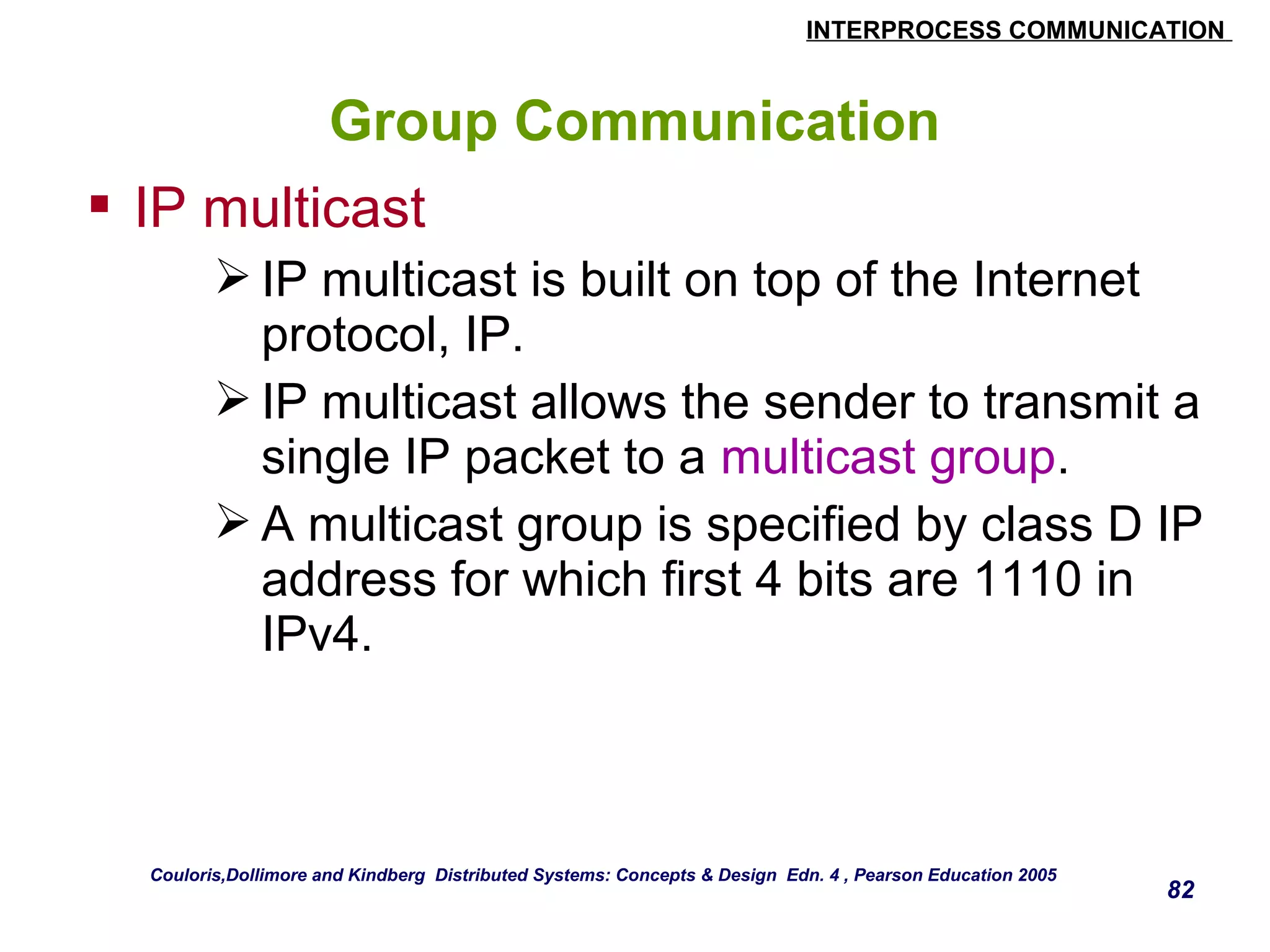
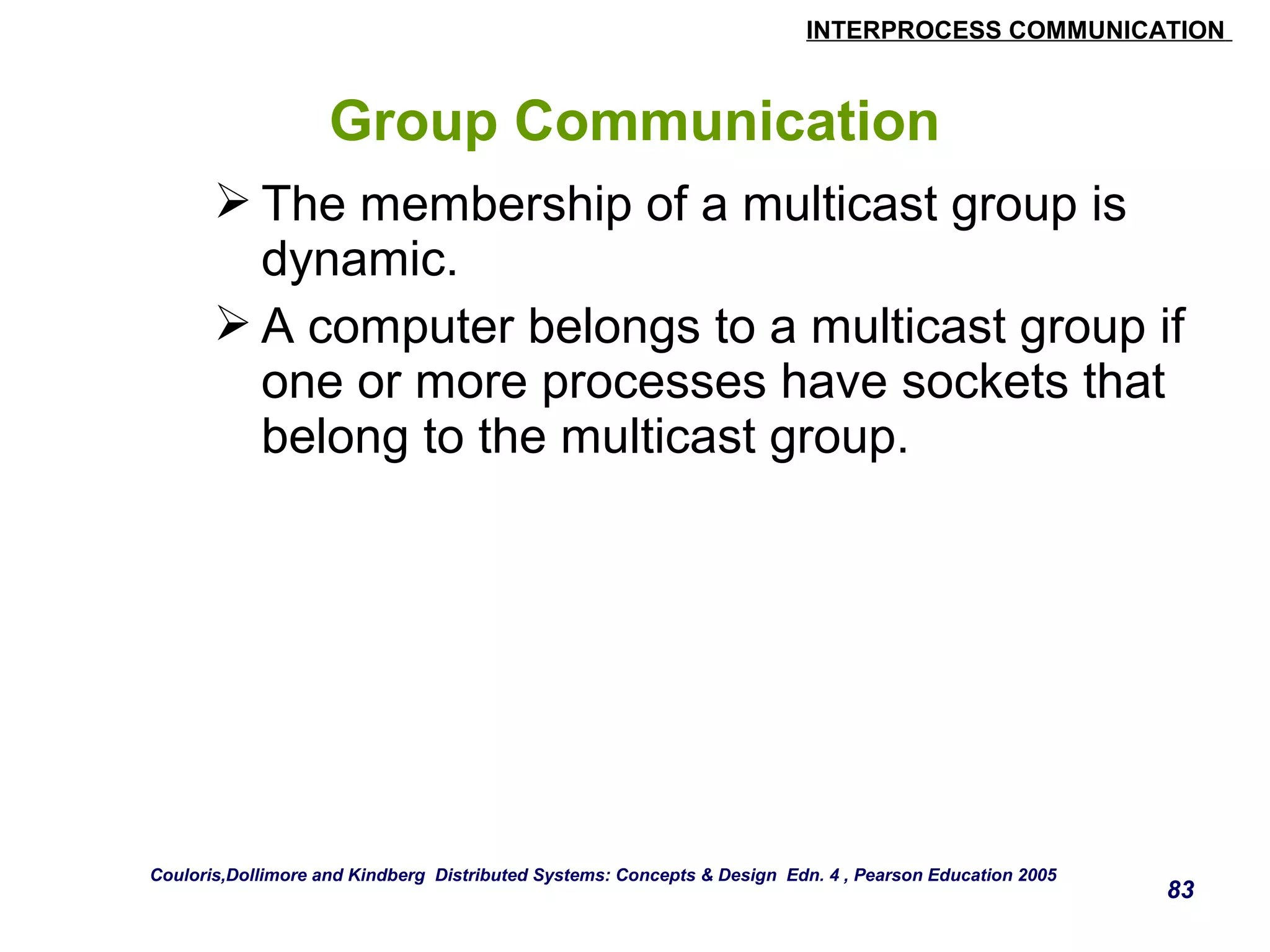

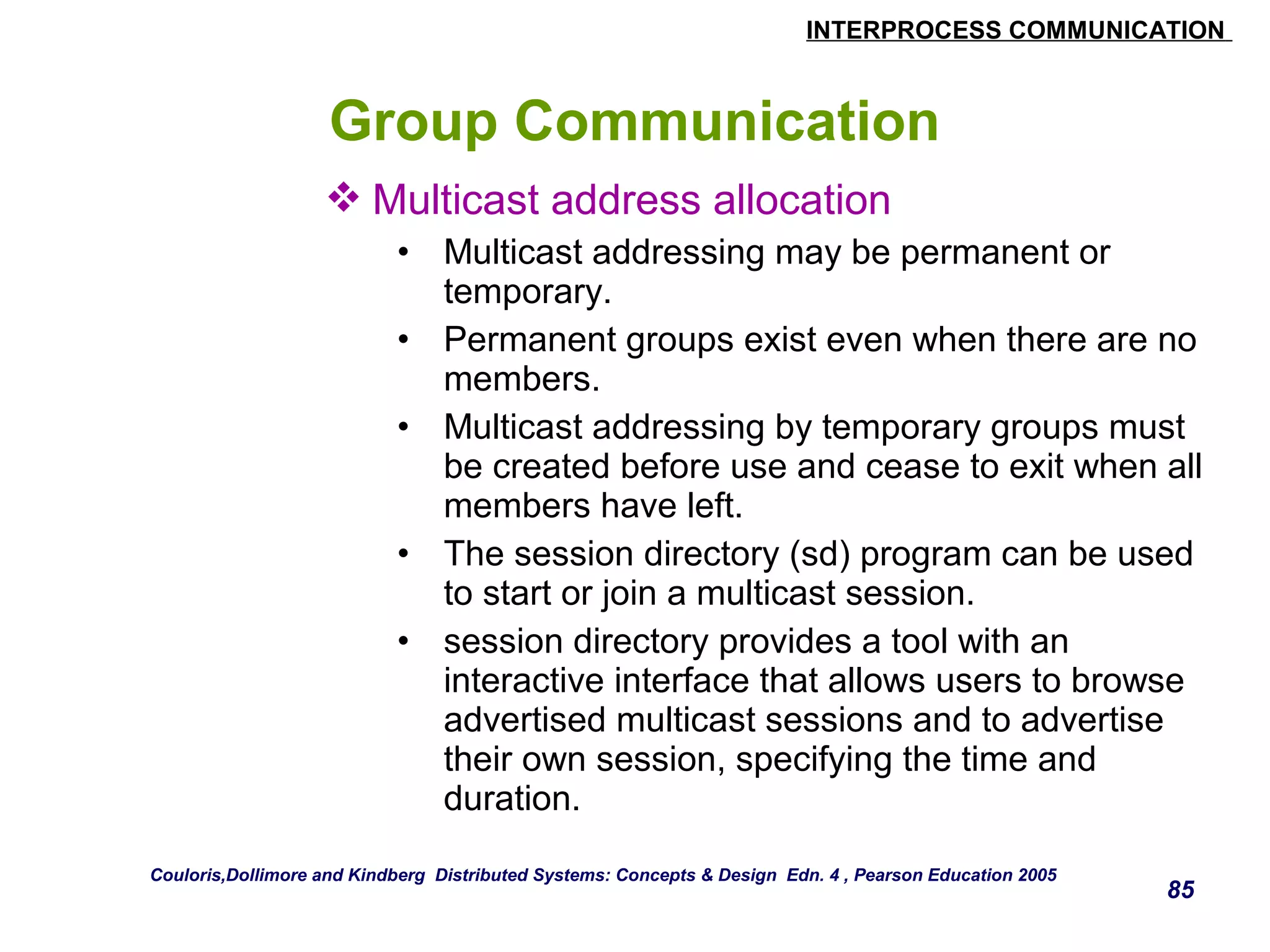
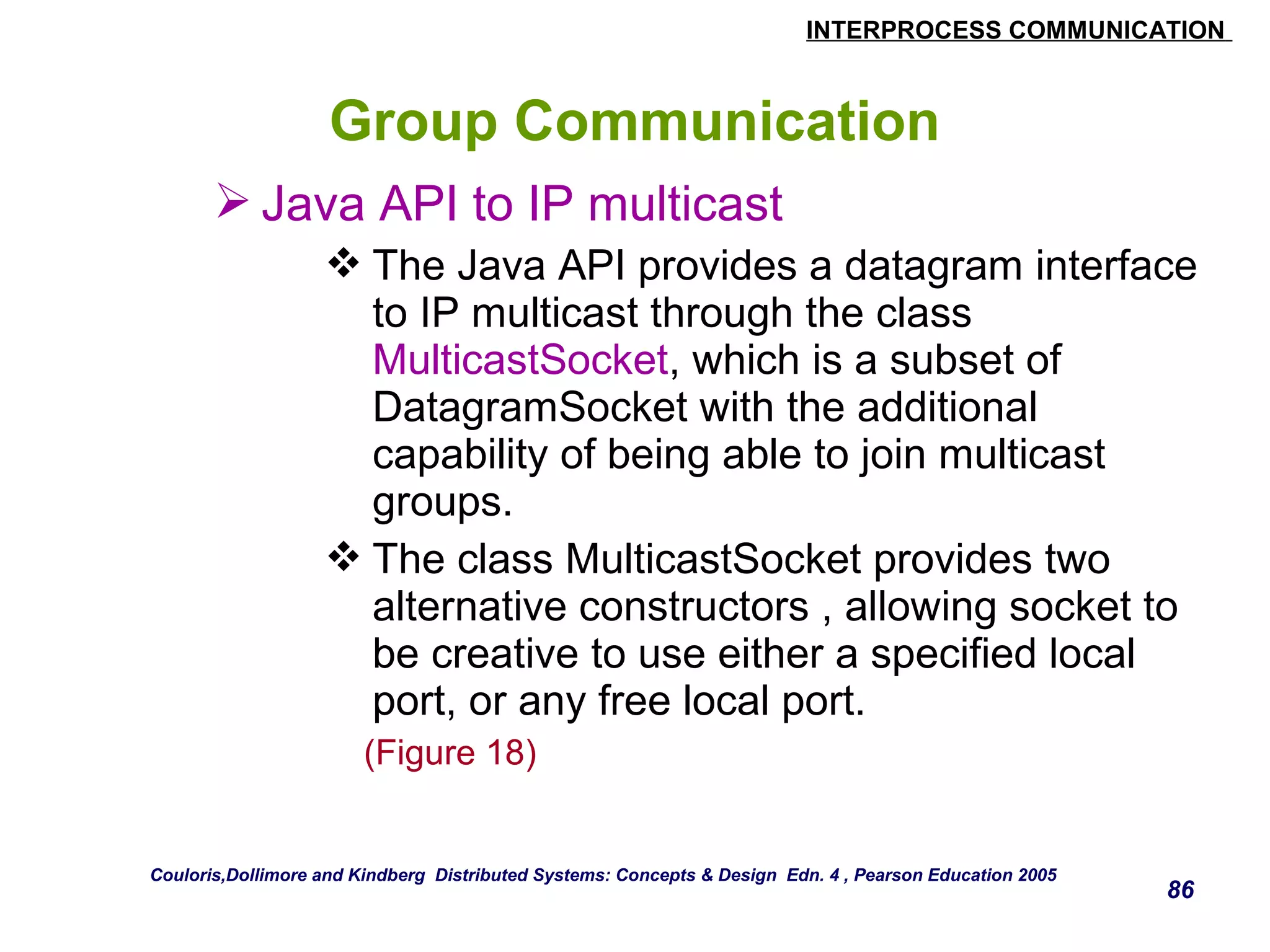
![INTERPROCESS COMMUNICATION
87
Group Communication
import java.net.*;
import java.io.*;
public class MulticastPeer{
public static void main(String args[]){
// args give message contents and destination multicast group (e.g. "228.5.6.7")
MulticastSocket s =null;
try {
InetAddress group = InetAddress.getByName(args[1]);
s = new MulticastSocket(6789);
s.joinGroup(group);
byte [] m = args[0].getBytes();
DatagramPacket messageOut = new DatagramPacket(m, m.length, group, 6789);
s.send(messageOut);
byte[] buffer = new byte[1000];
for(int i=0; i< 3;i++) { // get messages from others in group
DatagramPacket messageIn = new DatagramPacket(buffer, buffer.length);
s.receive(messageIn);
System.out.println("Received:" + new String(messageIn.getData()));
}
s.leaveGroup(group);
}catch (SocketException e){System.out.println("Socket: " + e.getMessage());
}catch (IOException e){System.out.println("IO: " + e.getMessage());
}finally {if(s != null) s.close();}
}
}
Figure 18. Multicast peer joins a group and sends and receives datagrams
Couloris,Dollimore and Kindberg Distributed Systems: Concepts & Design Edn. 4 , Pearson Education 2005](https://image.slidesharecdn.com/ds-ch4-141013041531-conversion-gate02/75/Interprocess-Communication-87-2048.jpg)
